Sephiroth's Endgame [5/6] - FFVII Remake Mysteries [3/4] | Game Analysis #26
Cloud's memory glitches and Sephiroth's appearances are more numerous and contain new elements regarding Remake's mysteries. And it all leads to Sephiroth's new endgame, his plan to remake the future.
Table of contents
Article 1
Article 2
Article 3
Article 4
Article 5 ⟵ you are here
Article 6
Greetings, fellow Scholars of the Lifestream!
This is a continuation of our multi-part analysis about Sephiroth’s Endgame. If you haven’t read the previous four articles yet, please do so now as you’d be missing out on a lot of information otherwise.
All caught up? Fantastic! Let’s jump into the wormhole and continue our journey.
⚠️We’re about to spoil the Moogle out of the original Final Fantasy VII, its compilation entries, and the Remake. You’ve been warned.⚠️
Part 3: Summary
With all those hundreds of details in the game, it’s hard to see the full picture, so let’s summarize the important points coherently by answering the questions we posed all the way back in the beginning of this gigantic analysis.
Cloud
More Memory Glitches
Why does Cloud experience more memory glitches this time?
For one, the Midgar segment, which took only several hours to play through in the original game, is a full game now. This provides more opportunities to flesh out the characters and Cloud’s mysterious past, and PTSD is a huge part of his character arc, which needs to be set up properly in this first game.
But that’s not all. New elements have also been introduced, such as the multiple appearances of Sephiroth and the visions induced by Aerith. In the original Midgar segment, Cloud experienced the following memory incidents.
In reactor number 1 just before setting the bomb,
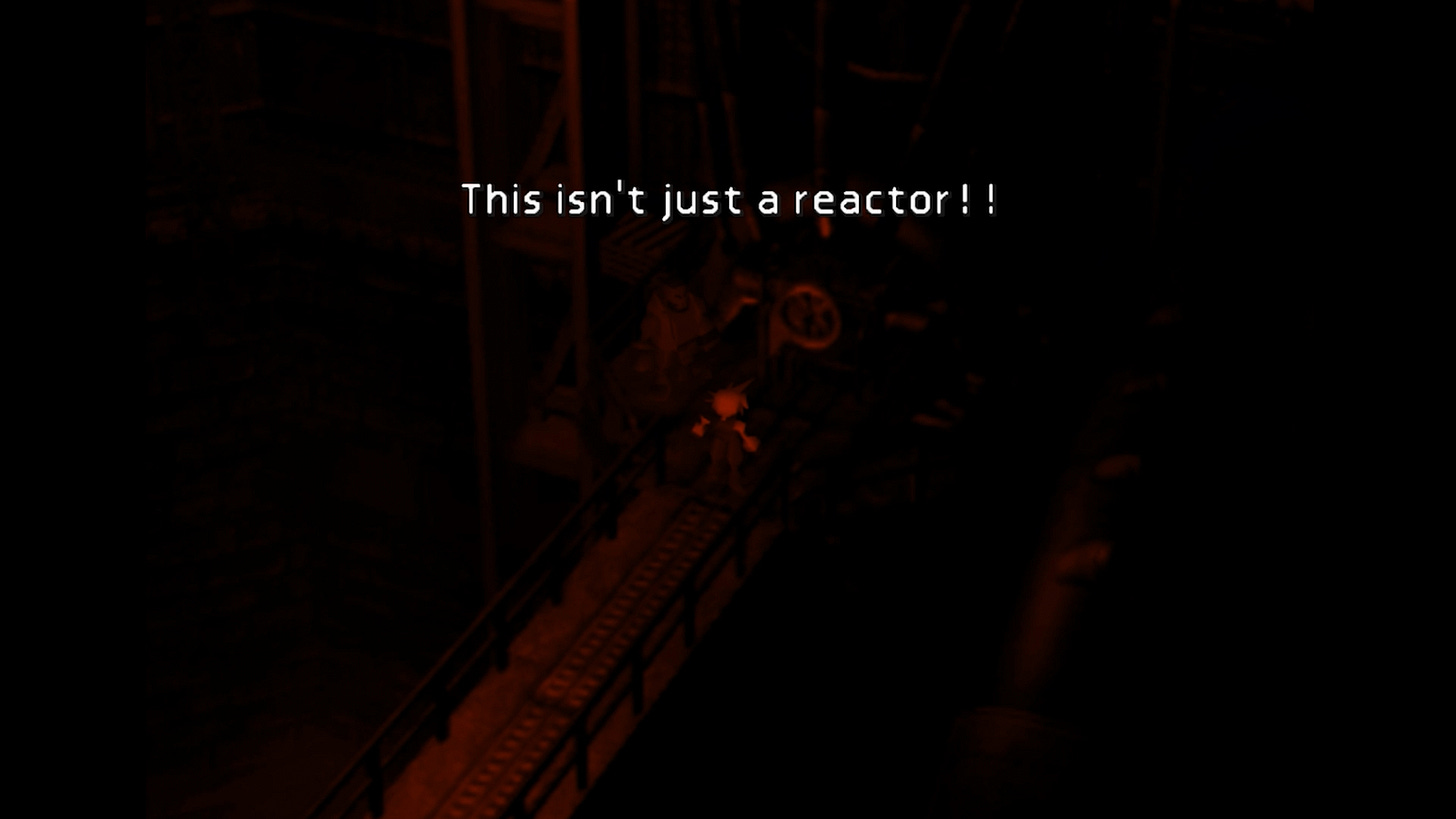
In reactor number 5 at almost the same place with a flashback of Tifa,
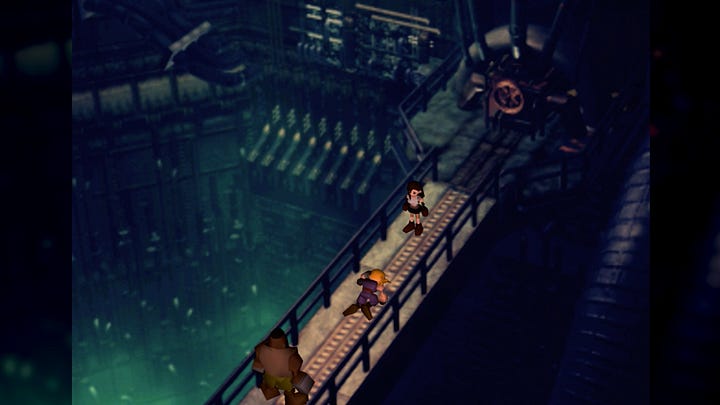
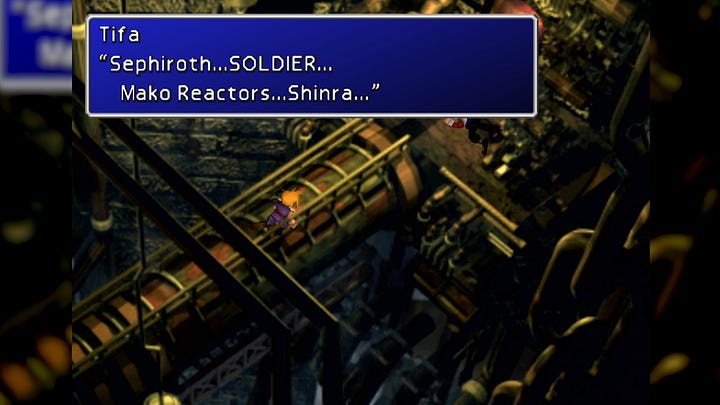
In Aerith’s church after landing but before waking up,
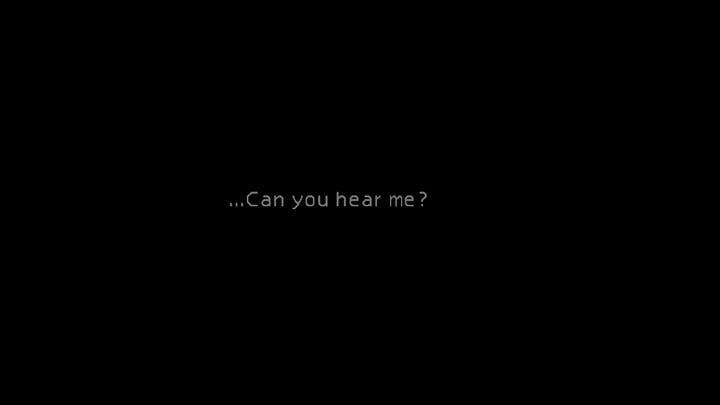
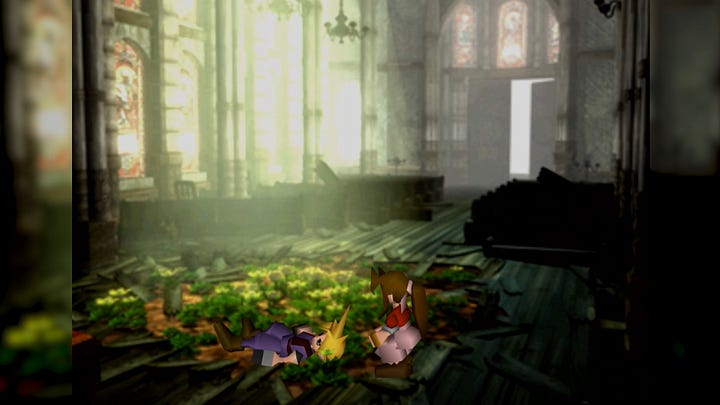
Right afterwards when remembering Reno,
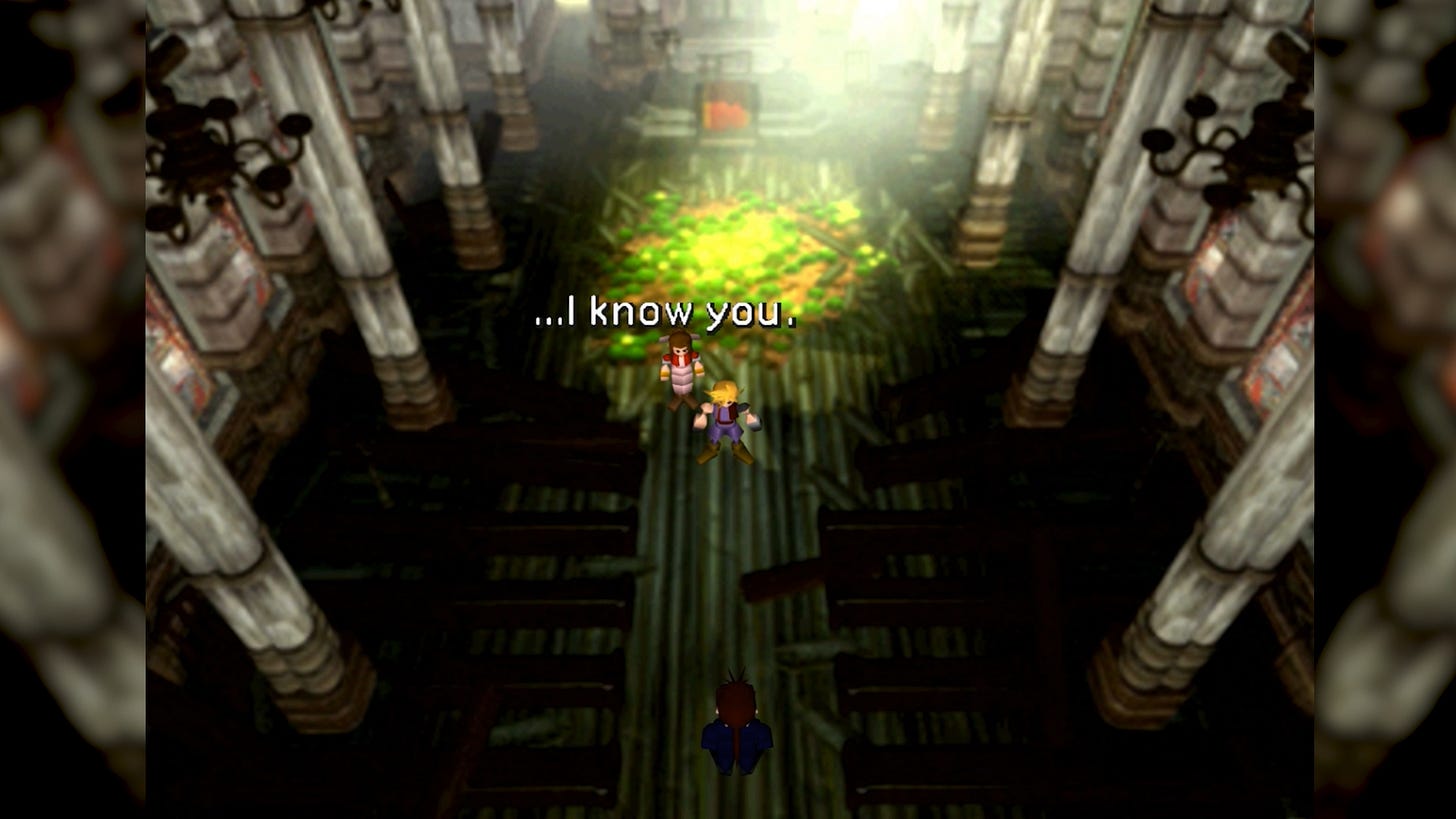
When Cloud answers Aerith’s question about his SOLDIER rank in the sector 6 playground,
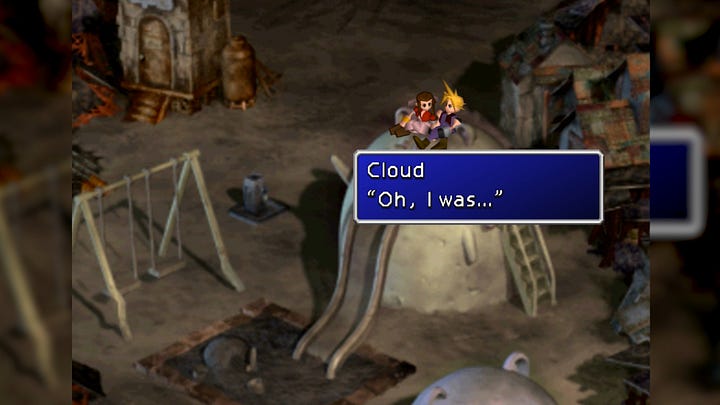
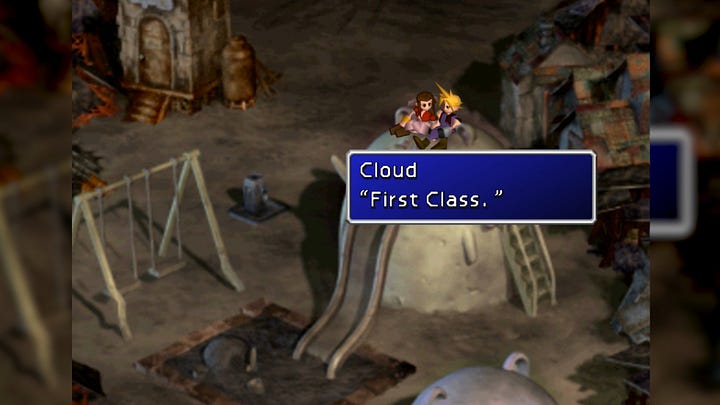
In the &$#% room within Honeybee Inn where Cloud’s true self is questioning him,
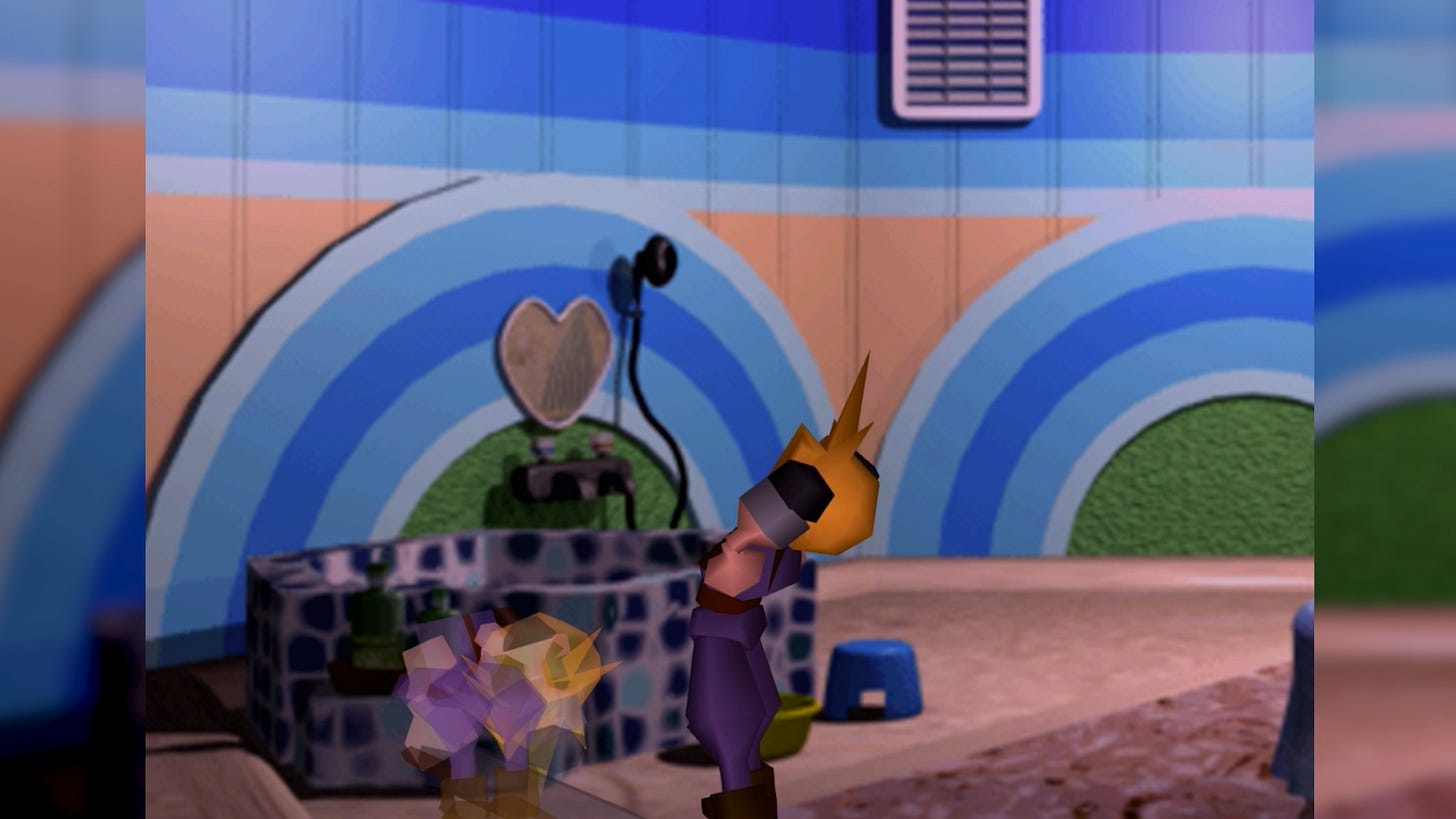
In the collapsed expressway on their way back to Elmyra where Cloud remembers Sephiroth,
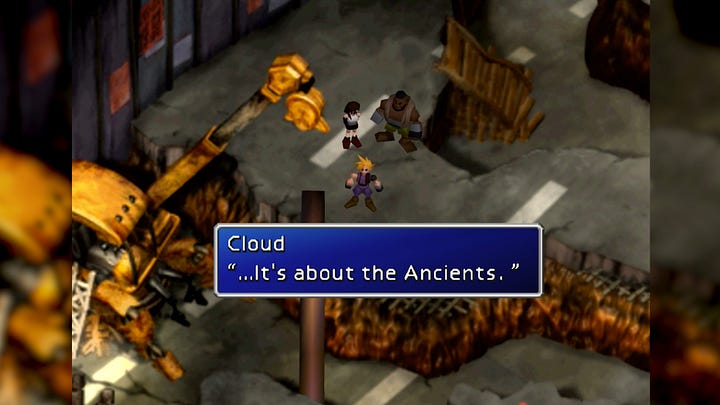
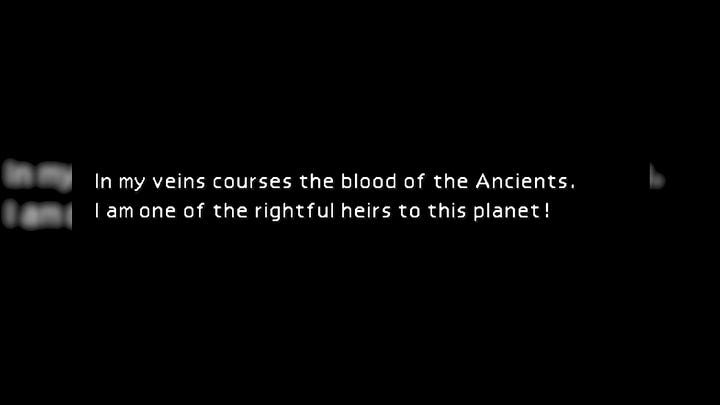
And in the Shinra building when approaching Jenova’s tank the first time.
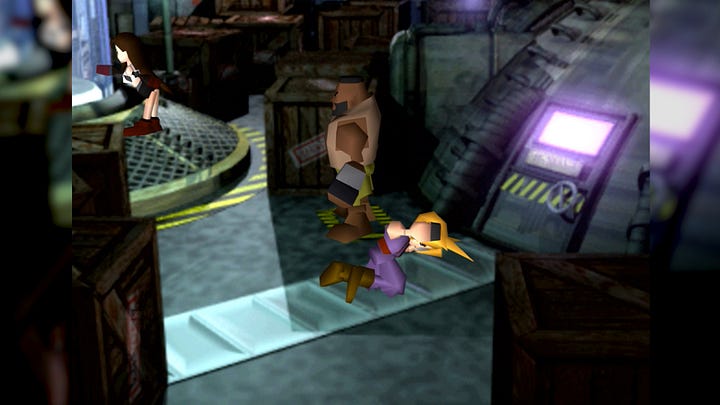
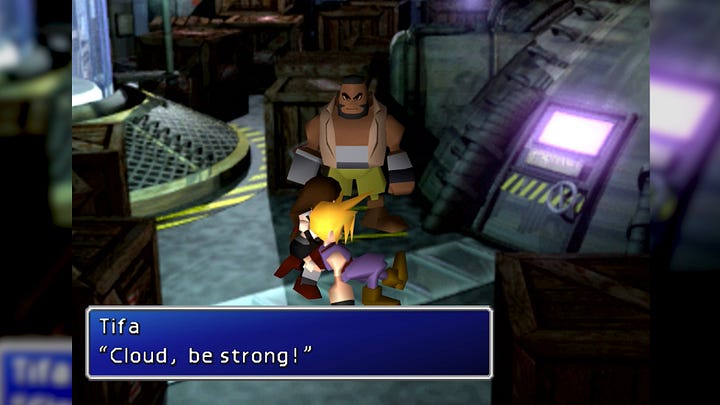
A mere eight occurrences of memory triggers which are not conscious memories of the past. We experience a lot more of those in Remake part 1, namely a total of 33 if we exclude normal recollections like Cloud’s promise to Tifa and his dream about meeting his mother again five years ago. We also consider a Sephiroth hallucination directly following a flashback as a single event.
While the original eight memory incidents also occur, many more appear through Sephiroth’s interventions and Aerith’s flawed memory transfer in this iteration of the story. But we also experience a few new ones tied to neither, like before entering Mako reactor 1, when Jessie asks about Tifa, when Cloud is surrounded by Security Officers or when the Sector 5 kids overtake Cloud.
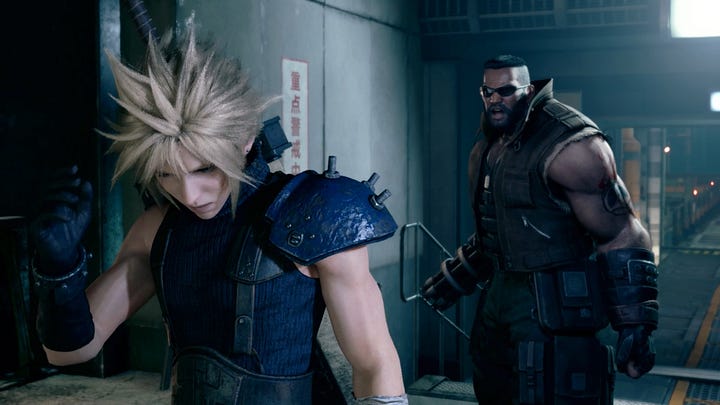
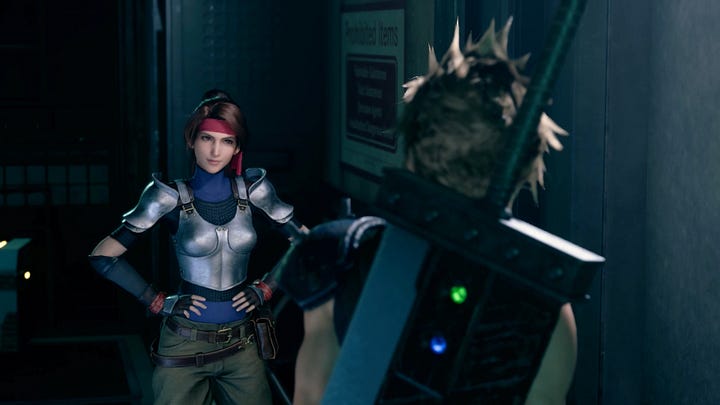
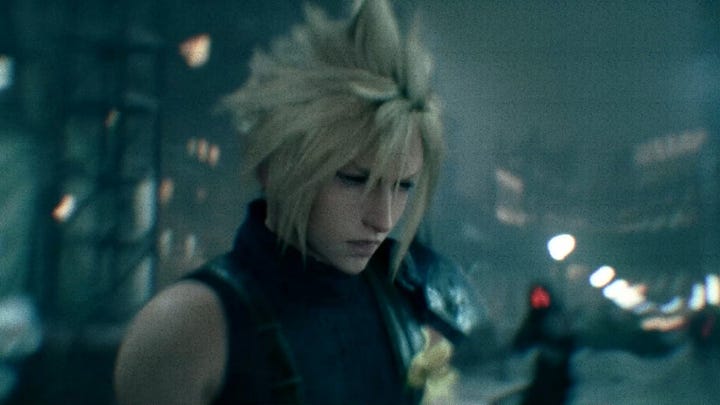
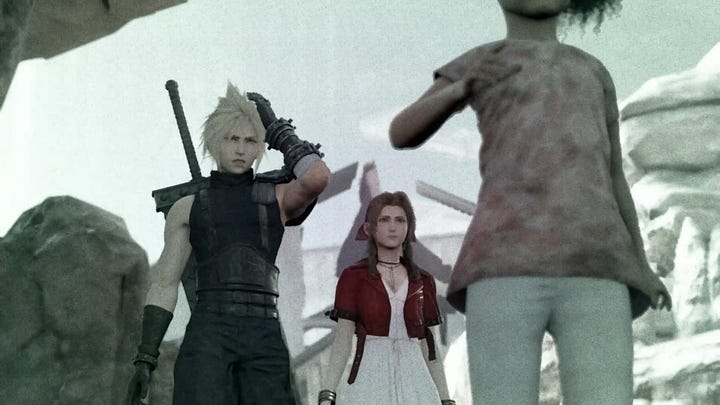
However, when we only look at those eight memory incident lifted from the original, did you notice that the only one that happens in Aerith’s presence has changed significantly in Remake?
Originally, Cloud’s memories of Zack helped him answer Aerith’s question about his rank in SOLDIER. This is not necessary anymore in Remake as Cloud already mentions his rank to Barret in chapter 1 and Reno in chapter 8. In Remake’s version of the playground scene, this memory incident changed to a moment of suppression when Aerith says Zack’s name out loud.
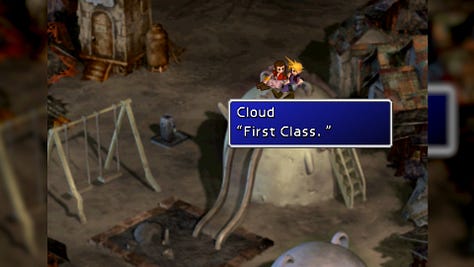
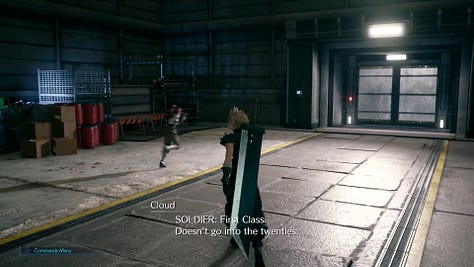
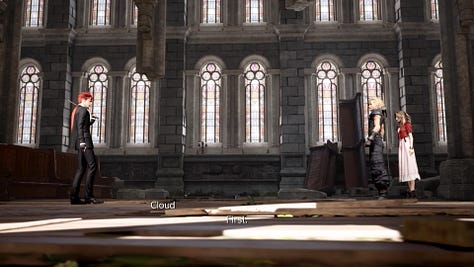
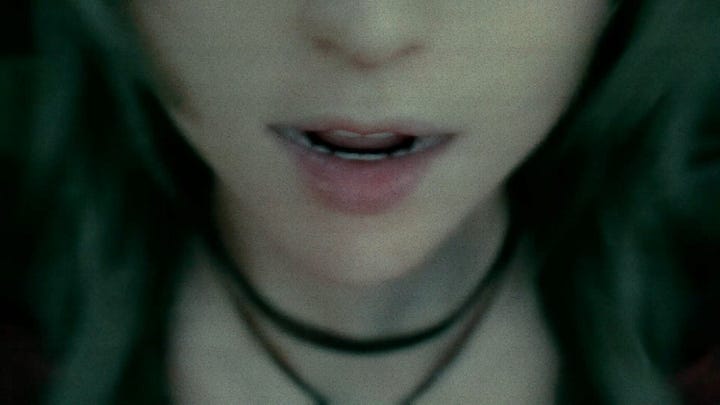
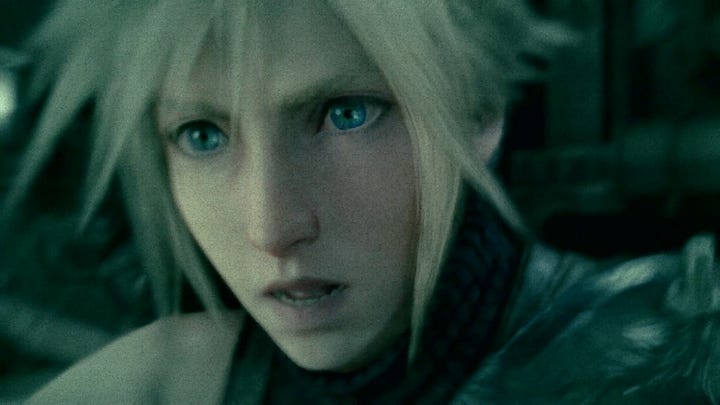
The one in the church also changes. From remembering Reno to a vision of the future. Triggered by Aerith mentioning her supposedly useless Materia.
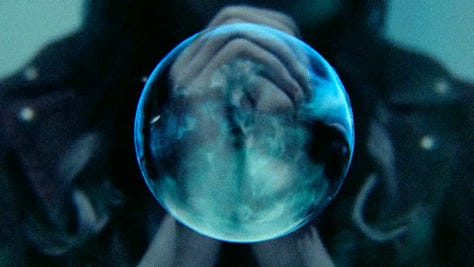
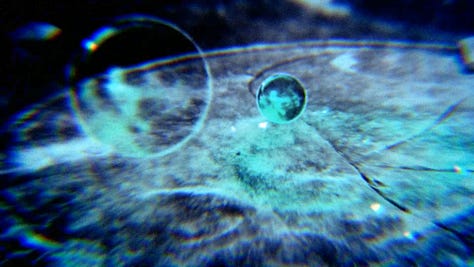
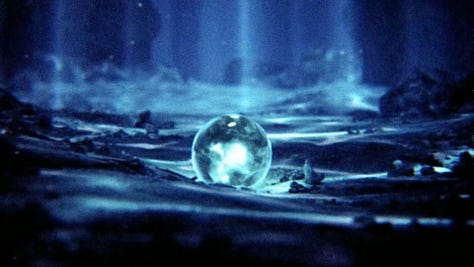
All other instances have been faithfully recreated for Remake or outright removes in the case of Cloud’s self-doubt in the Honeybee Inn. Except the one at the Mako pump. Which is related to none other than Sephiroth.
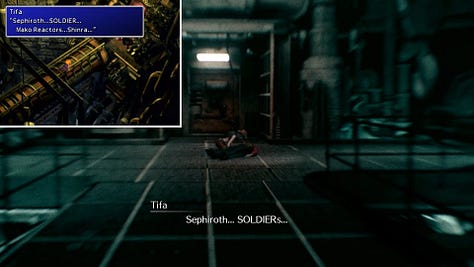
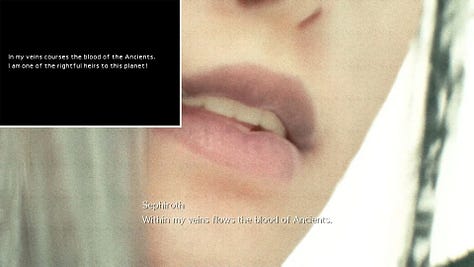
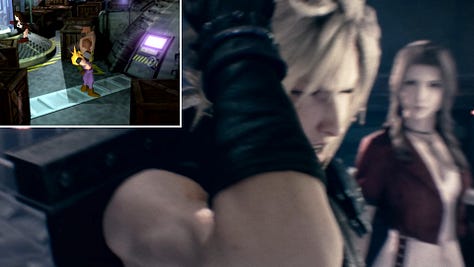
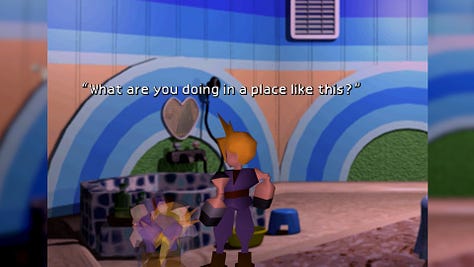
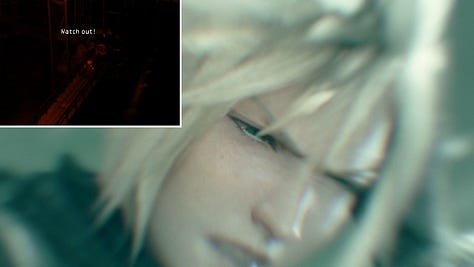
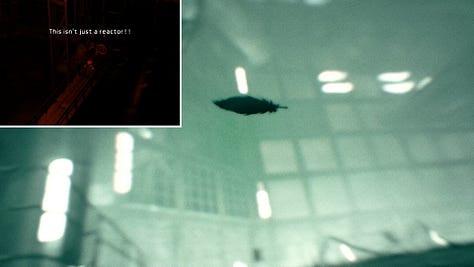
Memory Glitch Types
What types of glitches do occur and what do they represent?
Before we get into it, I need to address the visuals of those glitches in general. Why are they always tinted green? Well, it’s simple: Memories are directly tied to the Lifestream, which bears the color green. Nothing more to it.
Now, if we discount normal recollections like Cloud’s burning home, the Promise, and Cloud’s chat with his mother,1 we can categorize all of Cloud’s strange memory related episodes into four categories:
Hallucination
Suppression
Flashback
Vision
What do those entail?
Hallucinations are practically synonymous with seeing Sephiroth or his feathers as if they were real.
Suppressions occur when something reminds Cloud of his real past which contradicts and thus threatens his current fake persona of being a SOLDIER First Class.
Flashbacks either describe PTSD moments—mostly related to the Nibelheim incident—or are otherwise triggered by similar events relating to Cloud’s past not deemed dangerous enough for suppression.
Visions describe episodes where Cloud sees or is reminded of an event from the future. All those instances are a direct cause of Aerith’s touch in chapter 2.2
But which memory belongs to which category? Let’s quickly breeze through all of them.
Under hallucinations, we have:
The 1st black feather when setting the bomb.
Sephiroth’s first appearance in Sector 8.
Sephiroth’s second appearance before meeting Aerith.
Marco—number 49—looking like Sephiroth.
Sephiroth telling Cloud that there’s still so much to be done.
Number 2 looking like Sephiroth after touching Cloud.
Sephiroth’s appearance after Platefall.
The black-robed figure and Sephiroth in the Visual Entertainment Hall presentation.
The second black feather spotted though the closing elevator doors.
Sephiroth and the third black feather appearing at the end of the highway.
And the last feather dissolving into particles after defying destiny.
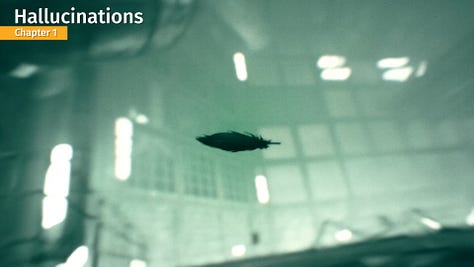
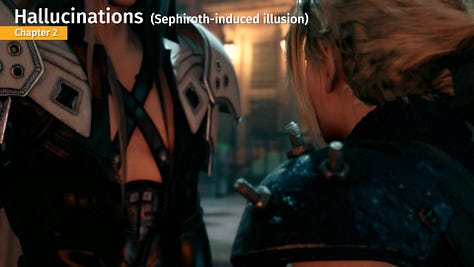
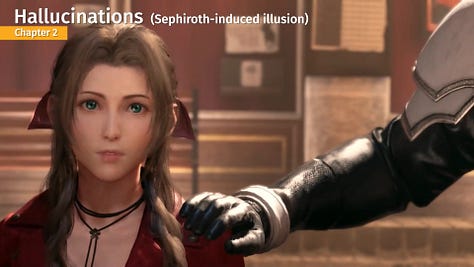
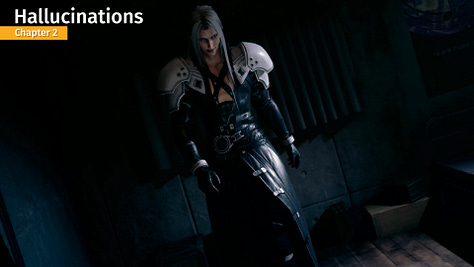
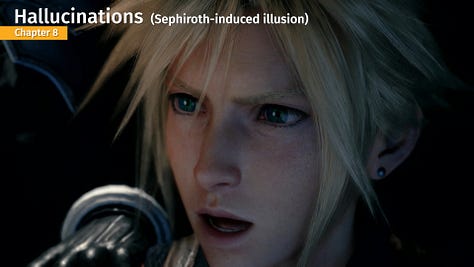
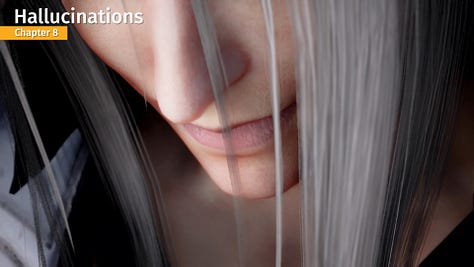
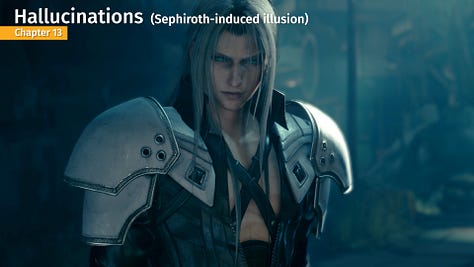
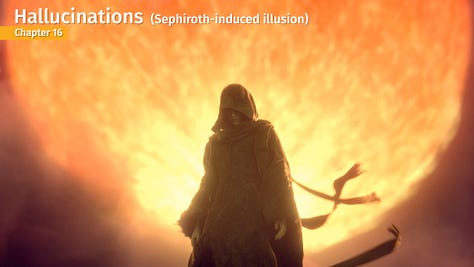
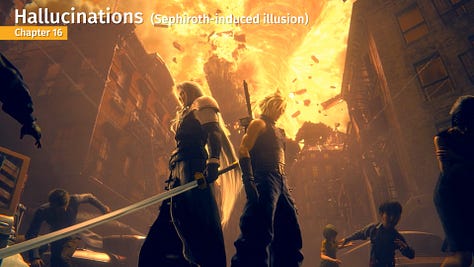
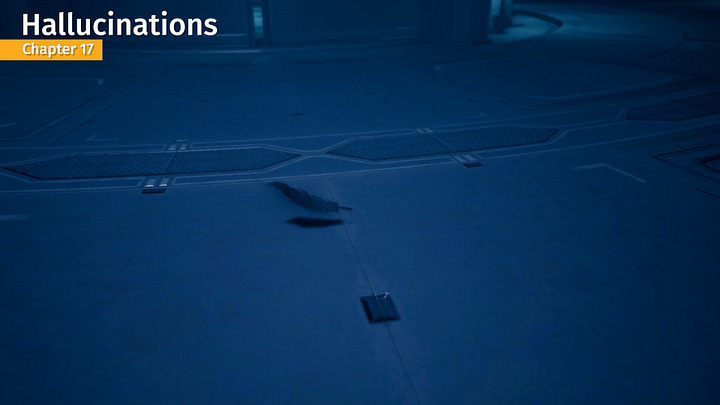
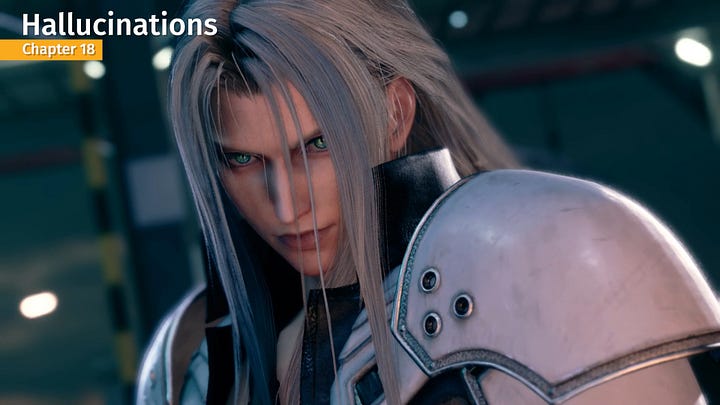
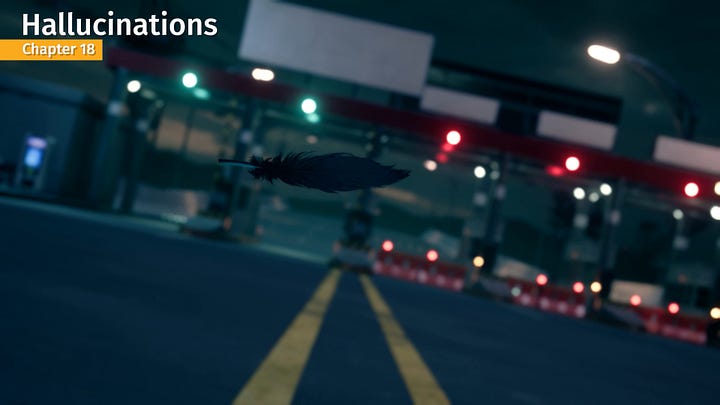
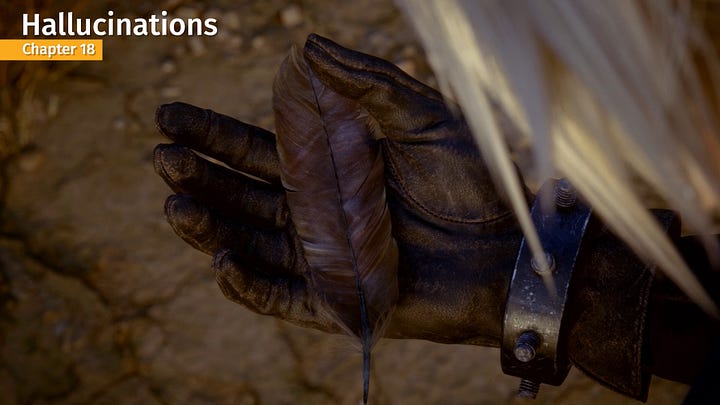
Memory suppressions happen when:
Cloud can’t answer Barret’s question in reactor number 1.
When Cloud is surrounded by Security Officers.
When Cloud claims to have been through a lot with the Buster Sword.
When Aerith says Zack’s name in Evergreen Park.
When a Security Officer recognizes Cloud in the cafeteria.
And when Hojo spills the beans about Cloud not being a SOLDIER.
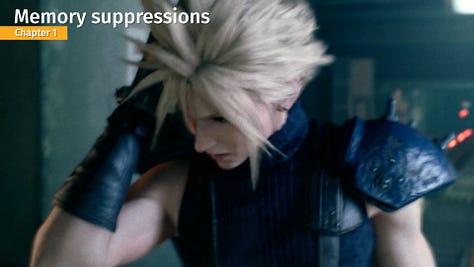
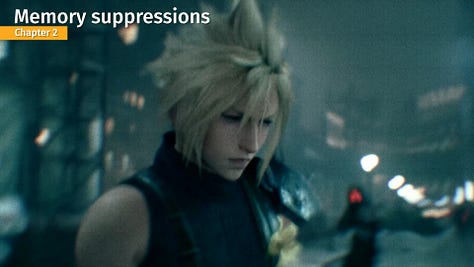
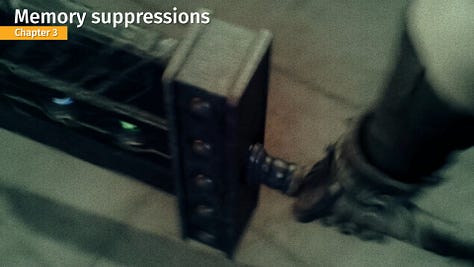
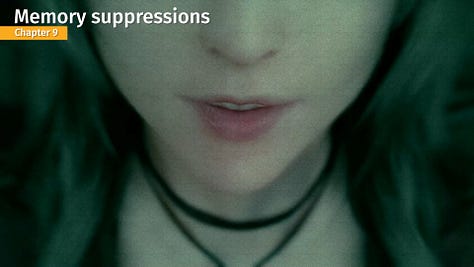
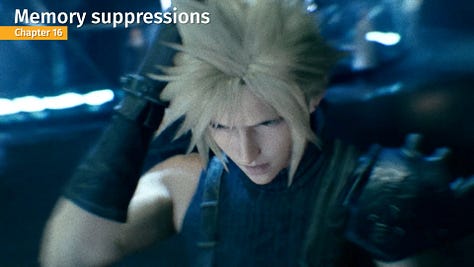
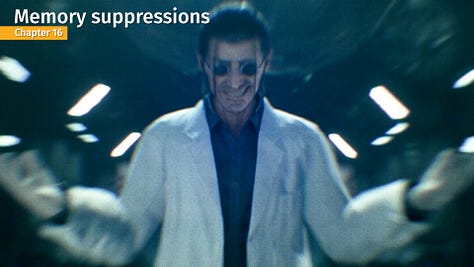
Categorized as Flashbacks are:
Cloud remembering child Tifa upon Jessie’s inquiry.
Seeing his hometown being on fire in sector 8.
Watching Tifa mourning over her father.
Same memory but shortened just before fighting Airbuster.
Remembering getting away with scraped knees.
Seeing child Tifa being followed by her three friends.
Listening to Sephiroth claiming that he’s an ancient.
Seeing himself as an experiment in a test tube.
Hearing Sephiroth’s words to Jenova and seeing the monstrosity in the Nibelheim reactor.
And being flooded with flashes of memories when approaching Jenova’s tank.
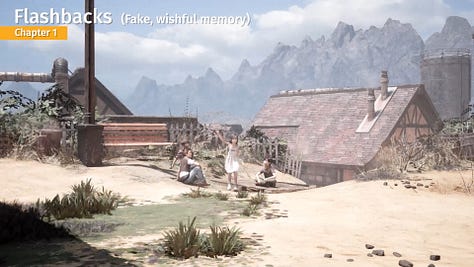
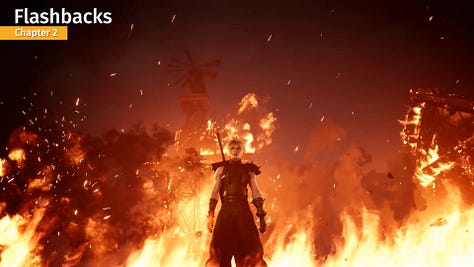
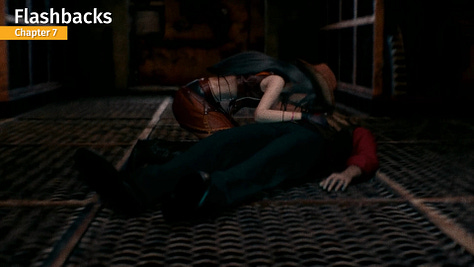
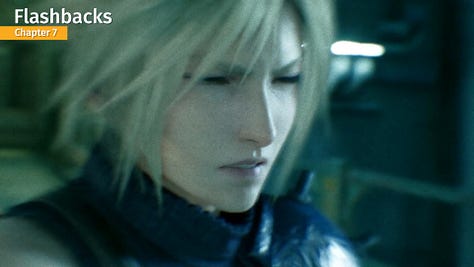
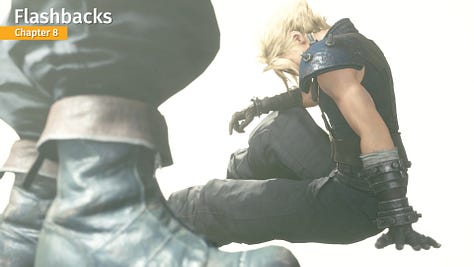
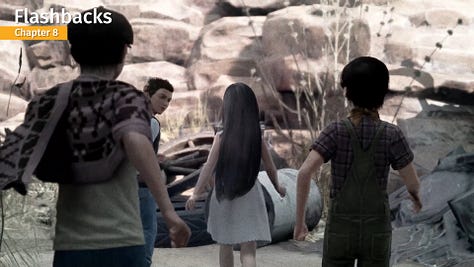
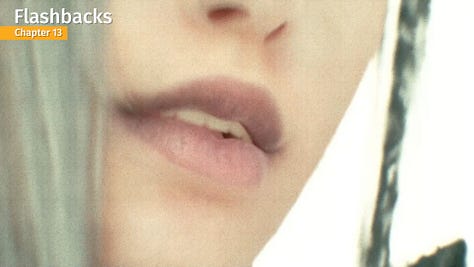
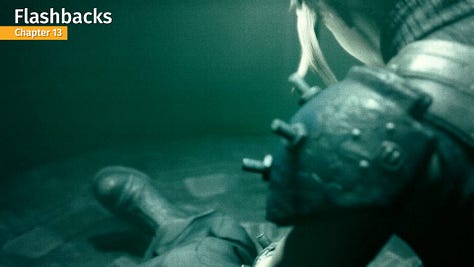
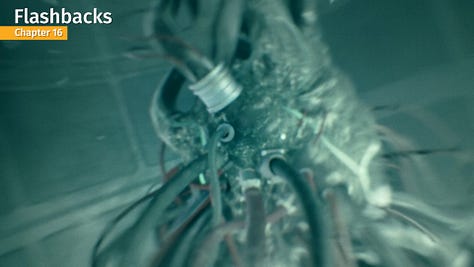
The remaining memory incidents are classified as visions:
An explosion and pieces of debris raining down from the plate.
A glimpse of the Reunion at the Northern Crater.
Flashes of Aerith’s death and the White Materia.
Feeling Aerith’s …departure when remembering her farewell in the Sleeping Forest.
More flashes of Aerith’s death plus Meteor pressing through the clouds.
The pain of Geostigma on Cloud’s left arm.
And last but not least, the supposed duel against Sephiroth from the end of the original, stopped by Sephiroth and thus invisible to us.
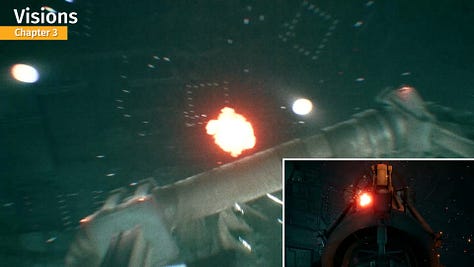
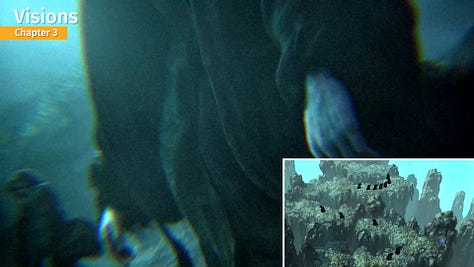
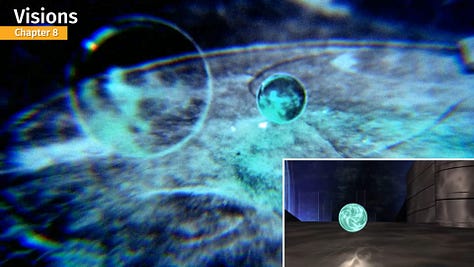
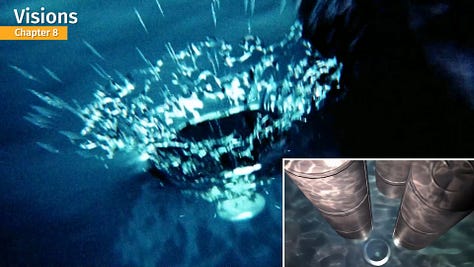
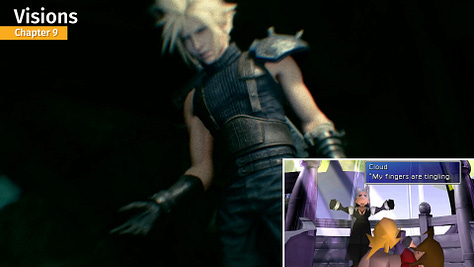
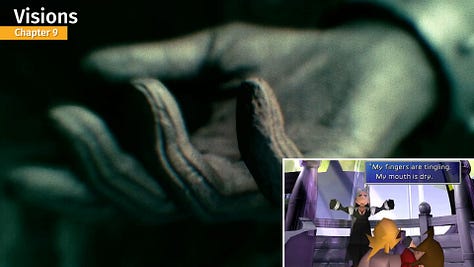
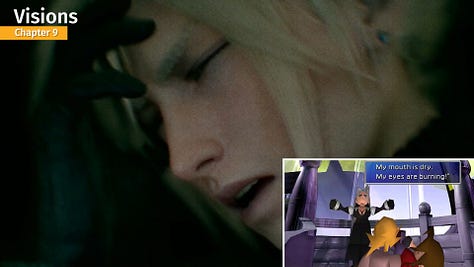
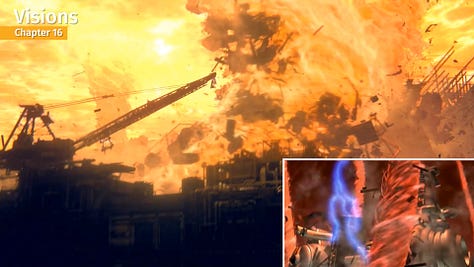
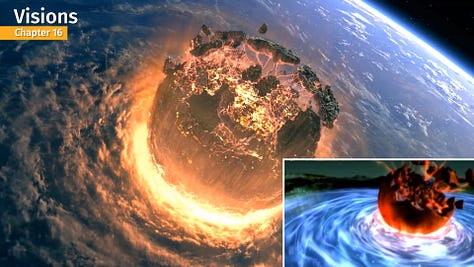
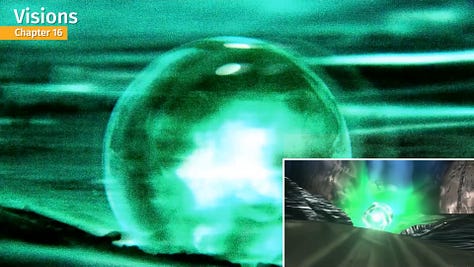
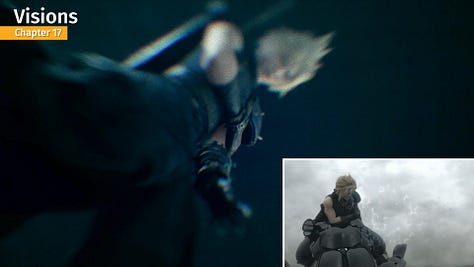
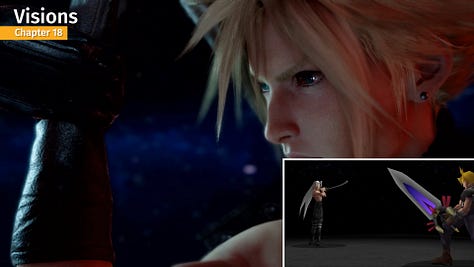
Yes, we did leave out the visions in the Singularity as those are shown to all characters, not only Cloud. But it’s worth mentioning that Cloud is shown suffering from a headache after three of them, like he did earlier in the game. One instance follows the vision of Cloud charging towards Sephiroth during their duel and the other two after we see Aerith’s death and Cloud slowly dropping her into the pond at the Forgotten Capital.
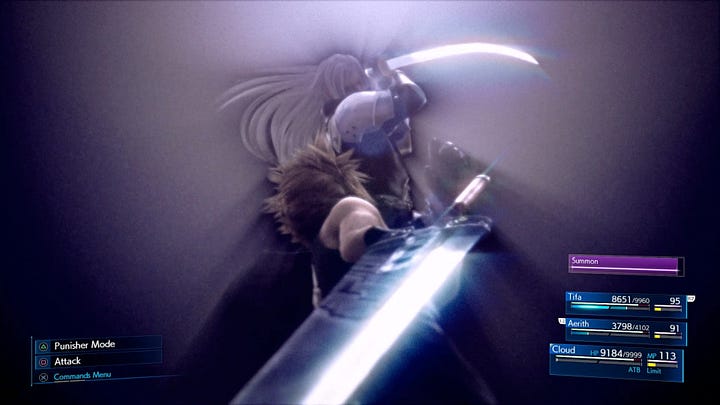
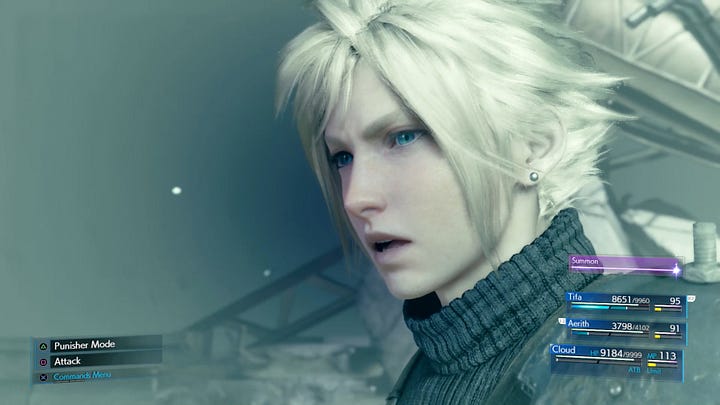
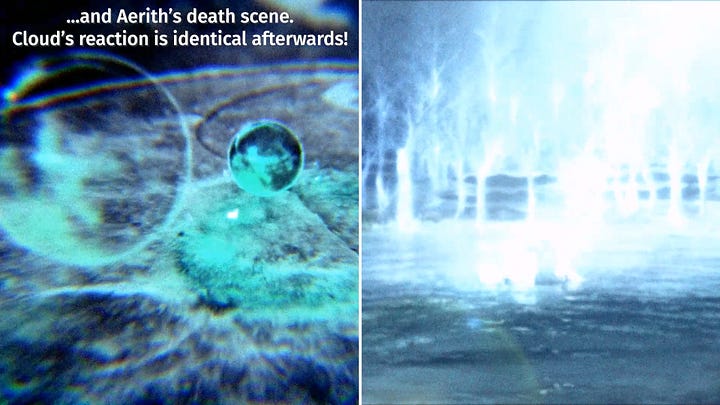
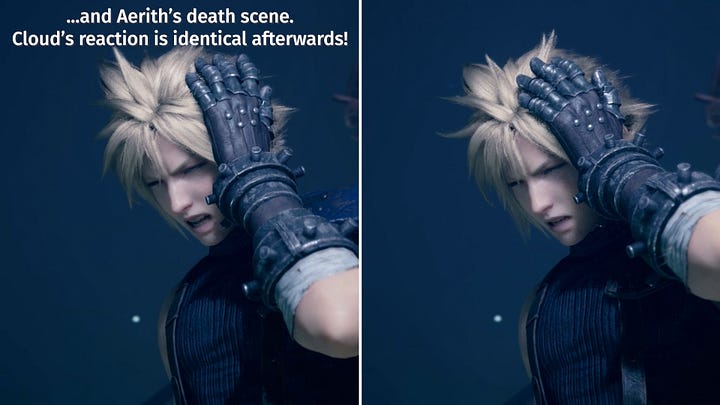
Why after those three specifically and not the first two visions of future Nanaki and Meteor where the camera focuses on the whole group and then only Tifa respectively? Both the Sephiroth duel and Aerith’s burial are deeply personal to Cloud and pivotal points in his journey.3
Before we get to the next question, I need to provide additional thoughts and nuance to memory incidents we talked about in the Evidence chapter. First, we mentioned memories lacking a glitch effect. While those are mere recollections, they also don’t represent the full truth and are shown through the eyes of Cloud’s fake persona.
When reaching out to his burning home, he remembers himself wearing his SOLDIER gauntlets.
When visiting his mother, he wears a SOLDIER uniform, and the Buster Sword is leaning against the wall.
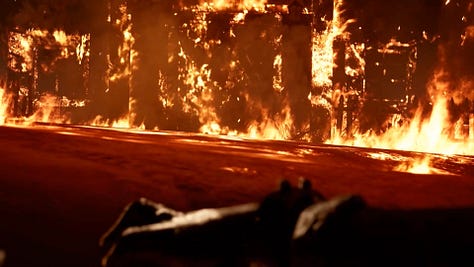
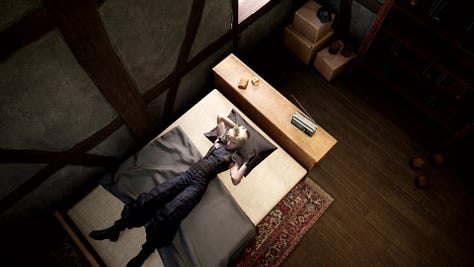
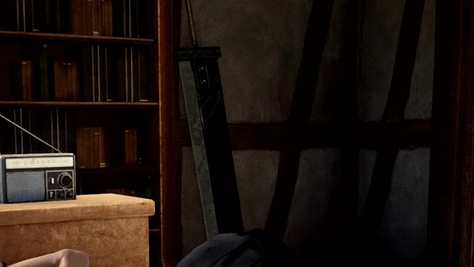
While both memories are real, they are still altered to keep Cloud’s fake Persona intact.
Second, we need to briefly mention Cloud’s recollection of Tifa crying over her deceased father, Brian.4 Since they are accompanied by a green glitch effect, they are in fact not normal recollections. Actually, Cloud never witnessed that scene himself. They are not his own memories, but more on that a bit later.
Black Feather
What is the meaning of Sephiroth’s black feather, which only Cloud can see?
Basically, it represents a premonition for or harbinger of an imminent Sephiroth appearance. There are three in total, two of which disappear in smoke while the other lands safely on the ground. Thus, each of those three also describe the nature of the next Sephiroth appearance.
The first one happens in chapter 1 and foreshadows the very first Sephiroth meeting in chapter 2 where his future version connects to Cloud’s PTSD flashback. Since it’s a hallucination, the foreshadowing feather dissipates into smoke, signifying an immaterial existence.
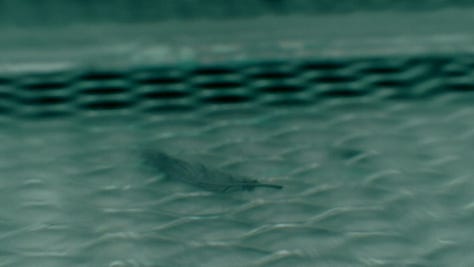
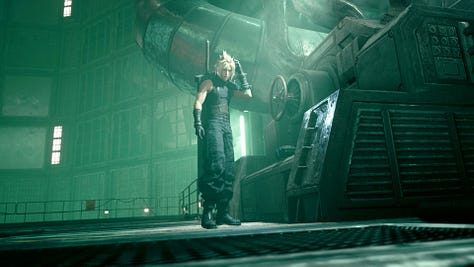
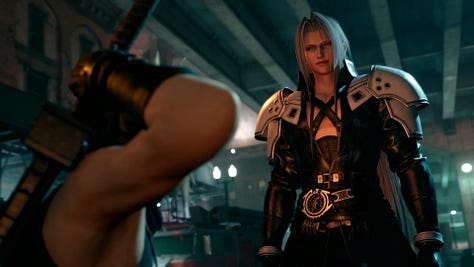
The second one does not disappear and thus foreshadows a physical representation of Sephiroth made possible through black robe number 2—or 49—and the effects of Jenova cells.
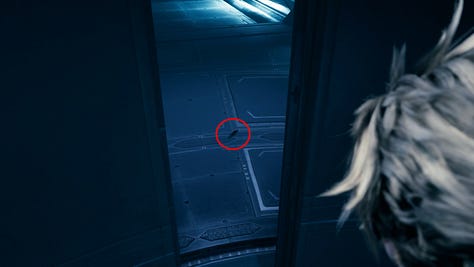
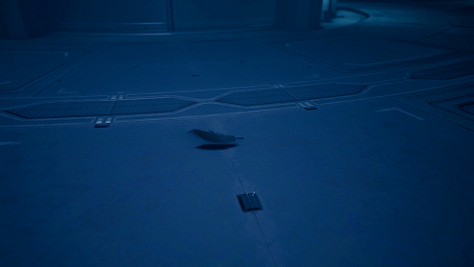
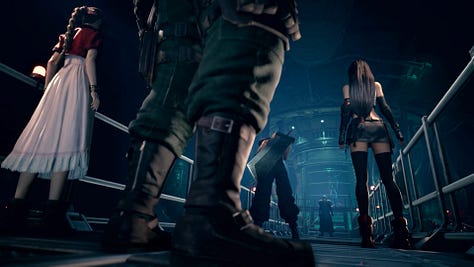
The third one is a premonition of yet another different type of Sephiroth. Even though he can be seen by everyone, he’s still basically a projection, which is why the third feather also dissipates into smoke.
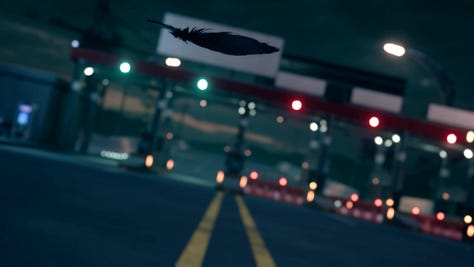
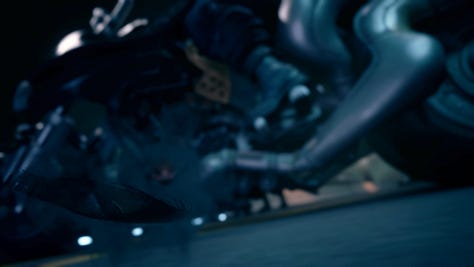
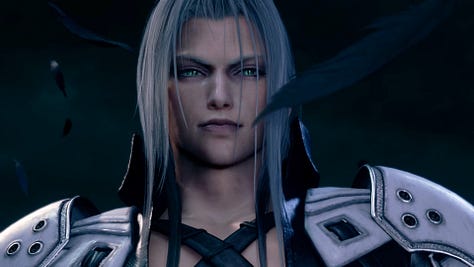
It’s also worth noting that the time span between feather and Sephiroth appearance shrinks each time. They cross chapters in the first instance while it only takes an elevator ride and some walking in the second instance. The third premonition happens immediately before.
Killer Instinct
Why does Cloud try to kill Marco, Johnny, and Reno without remorse?
In the original story, Cloud never wanted to outright kill off someone who wasn’t in the position to fight back. If we discount those instances where Sephiroth took direct control over him of course. But here in the Remake, Cloud tries to kill Marco, Johnny, and Reno, and only doesn’t do so because of the intervention of Tifa, Aerith, and the Whispers.
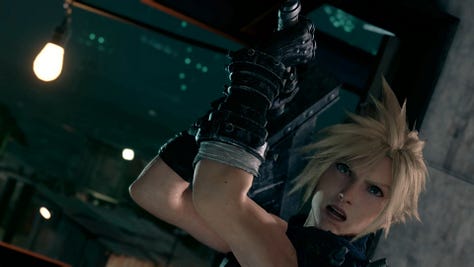
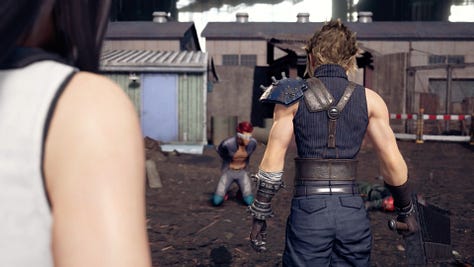
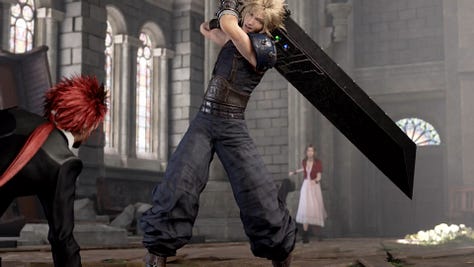
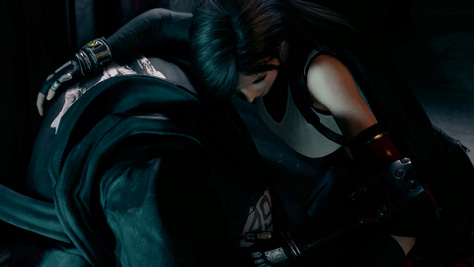
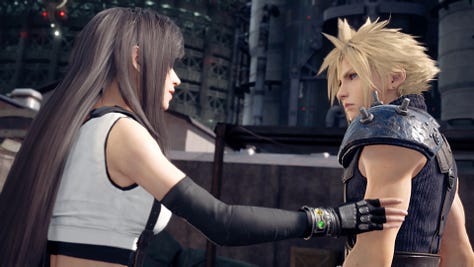
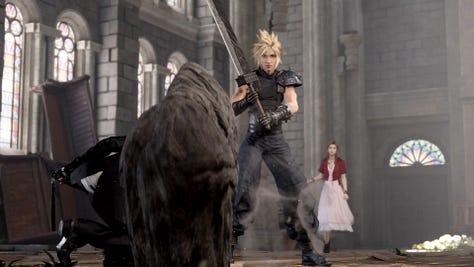
Marco suffers from heavy Mako poisoning and the Jenova cells within him dictate his life. He’s no threat to anyone. Cloud only thinks so because his hallucination imposes the image of Sephiroth onto Marco. Johnny is neither a fighter nor in a position to do anything with his being tied up and blindfolded. Cloud only wants to finish him off because he might rat out Avalanche. He’s a loose end. While it’s a bit different in the case of Reno, their fight was over and Reno unable to fight back by the time Cloud winds up for the killing blow. It’s entirely unnecessary, similar to Johnny’s situation.
But why this change in behavior? Trying to kill Marco can be explained by Cloud’s fear and panic while being haunted by Sephiroth in a place of comfort. But in the other two instances, it’s pure cold-blooded attempt of murder.
One reason could be that Cloud now lives the life of a battle-hardened SOLDIER turned mercenary, which does everything for money; don’t ask questions and finish the job. However, in the case of Johnny, there’s no contract involved. Quite the opposite. Tifa originally wanted to take care of the situation alone. It was Cloud who insisted on coming along, probably to protect Tifa. With Reno, it’s a bit less clear, but his contract involves only being Aerith’s bodyguard. Killing a downed adversary in cold blood is not part of that job.
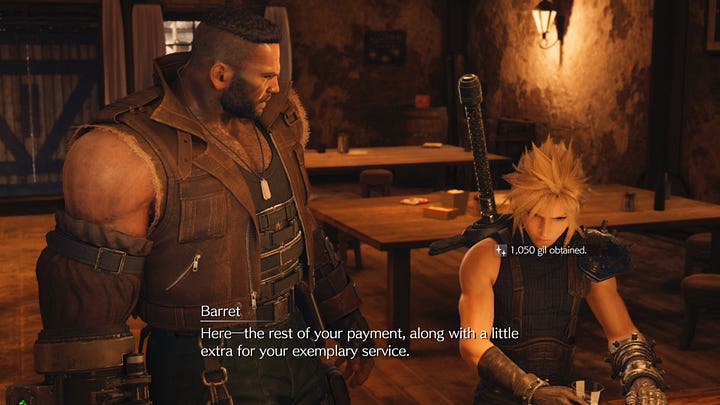
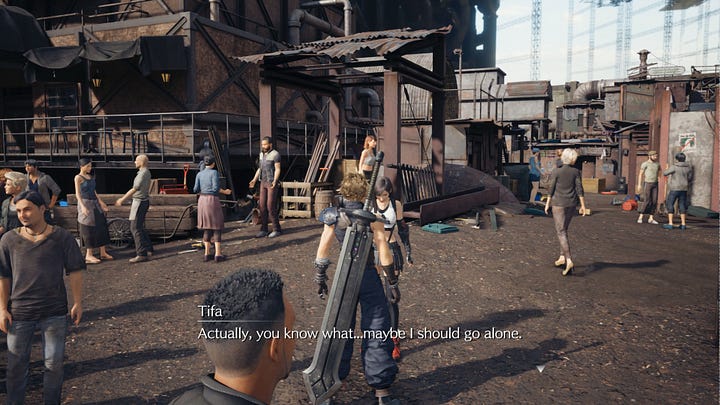
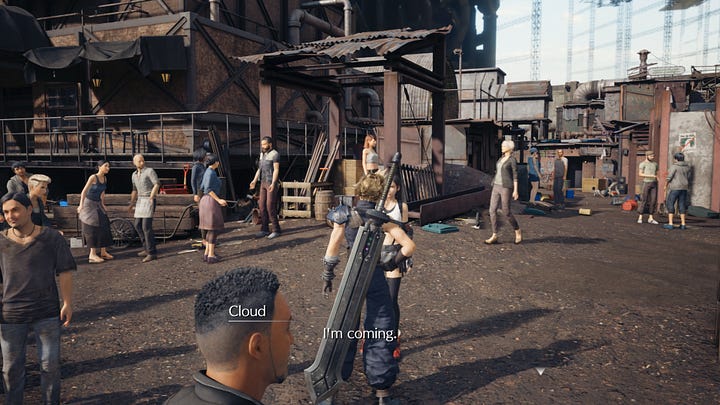
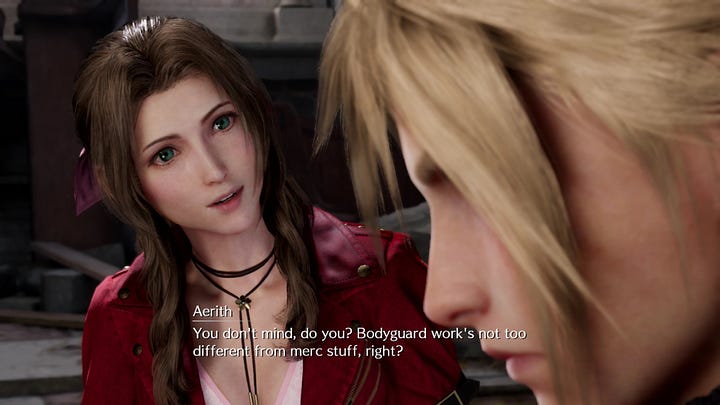
Additionally, Cloud was in the very same situation in the original as well. Granted, all those three story segments are also new, but that alone doesn’t justify this big shift in behavior.
So, what does?
Simple: Sephiroth.
Thanks to Sephiroth’s early appearance, he messes up and darkens Cloud’s mind as early as chapter 2, igniting his hatred towards Sephiroth, leading him onto that dark path before other characters are able to warm him up. When Cloud meets Aerith the first time, he’s already less friendly, as she’s the one initiating the conversation instead of Cloud as we see in the original. Cloud even tries to reject her at first.
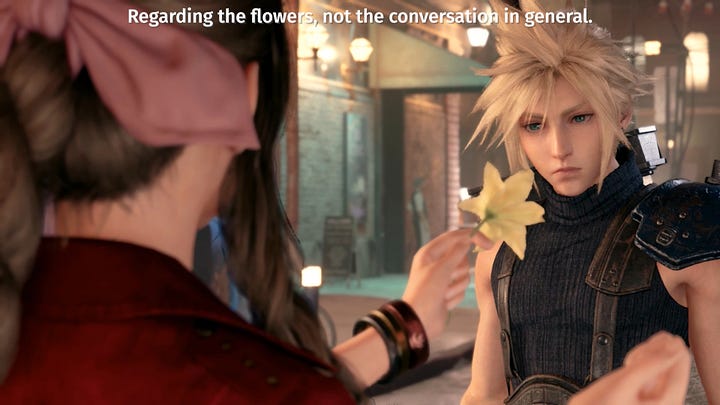
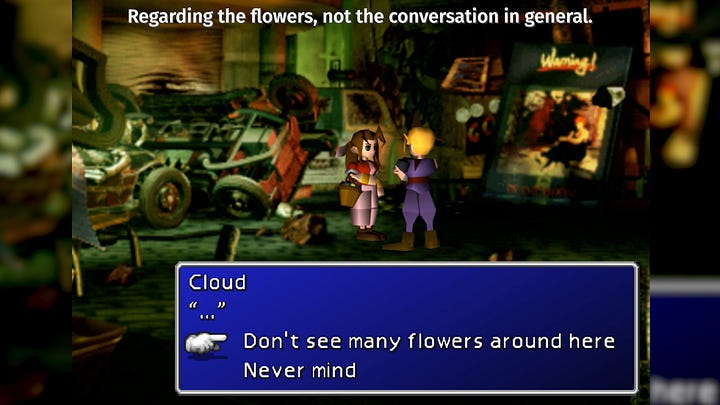
That messy meeting with Marco makes everything worse and Tifa doesn’t have time to lead Cloud away from this dark path of hatred before the Johnny incident. She even directly voices her feelings about it and tells him to spare the knocked out Shinra troops too.
Cloud
And them?Tifa
No more…
Cloud… You’re scaring me.
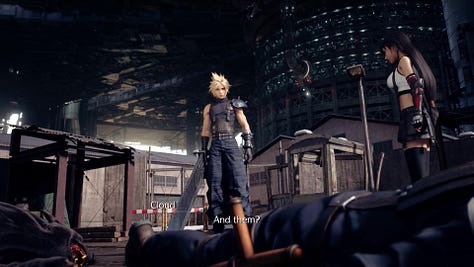
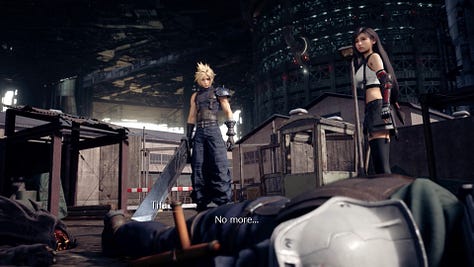
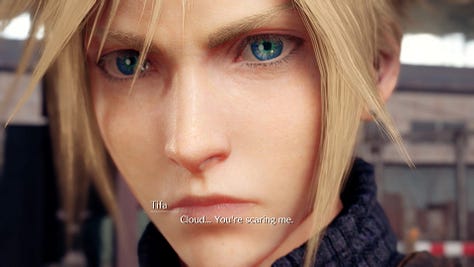
Later, she even comments on Cloud’s eyes being different now.
Tifa
It’s just…you’ve really changed.Cloud
How?Tifa
I suppose it’s…yeah, Your eyes. They used to be less…
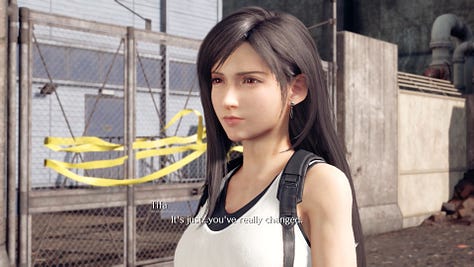
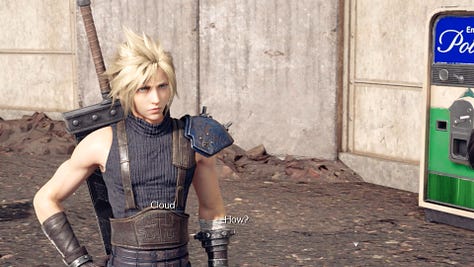
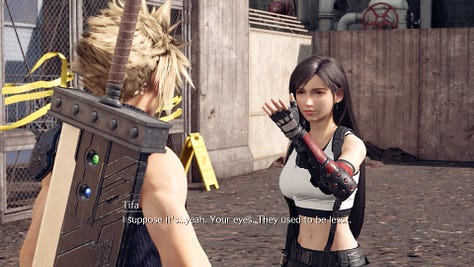
…filled with anger?
He of course brushes off her concerns with his SOLDIER eyes retort
Cloud
It’s the mako. SOLDIER, remember?
But it’s clear that Tifa meant something else: Cloud’s killer look. This would explain the killer eyes he supposedly gave Marlene before Barret’s outburst in the bar, which was also a new scene.
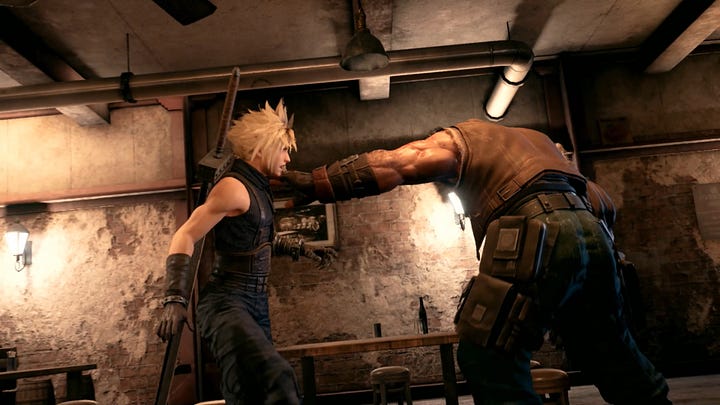
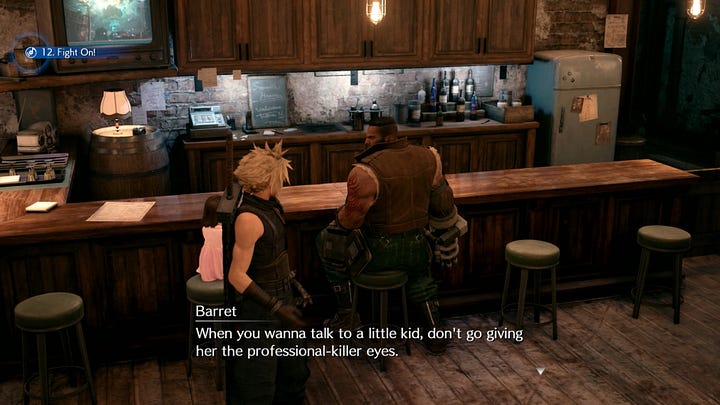
Cloud certainly softened up during chapter 4 and his interactions with Biggs, Wedge and especially Jessie, as noted by Tifa.
Tifa
Huh? What’s with you all of a sudden?Cloud
With me?Tifa
Like you’re losing that hard edge.
She even mentions Marlene in this context.
Tifa
[…] Maybe Marlene won’t be so scared
of you next time…
However, the second bombing mission brings him “back on track”—pardon the pun—by embracing his mercenary role and remembering the Nibelheim incident, reigniting his hatred for Sephiroth and diminishing his self-esteem. Sephiroth’s appearance before waking up in the church also contributes, leading to the situation with Reno.
Afterwards however, Cloud spends a lot of quality time with Aerith, helps out kids, has the date with Aerith in Evergreen Park and goes on a mission to save Tifa, which then turns into a mission to save Sector 7. Everything without any contract or payment. He even runs up the pillar to help the others on his own accord. He’s also less bite and more bark when confronting Leslie alone and denies Aerith’s kill request a bit earlier.
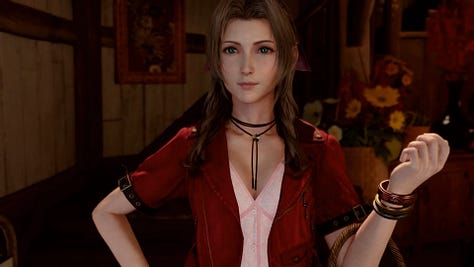
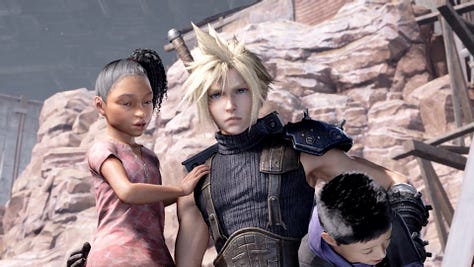
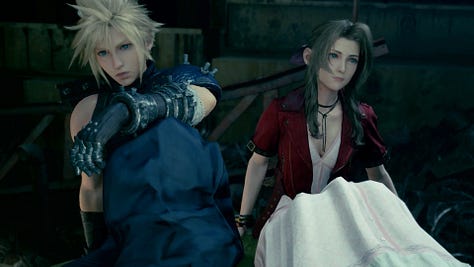
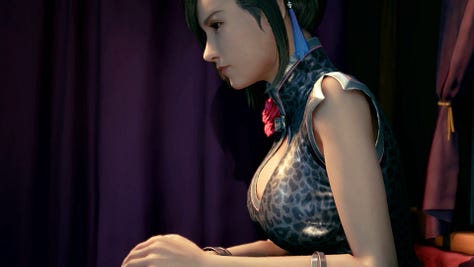
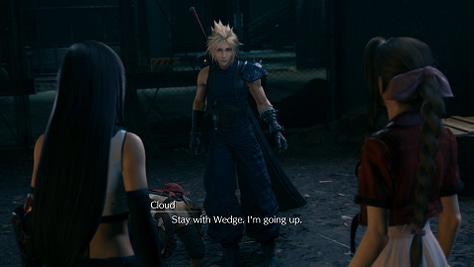
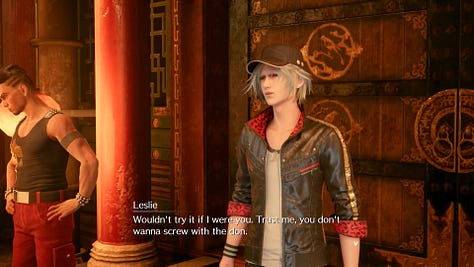
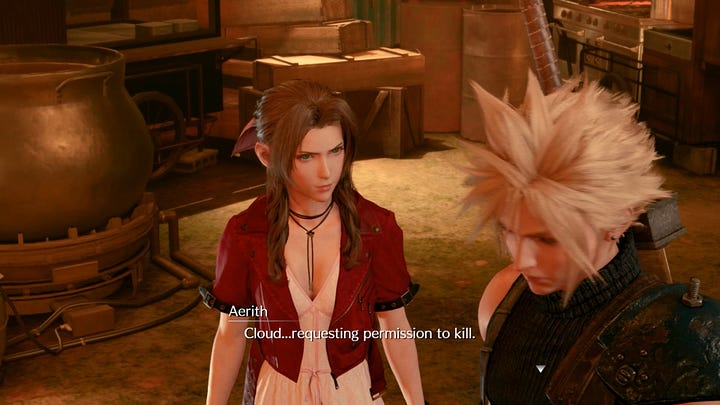
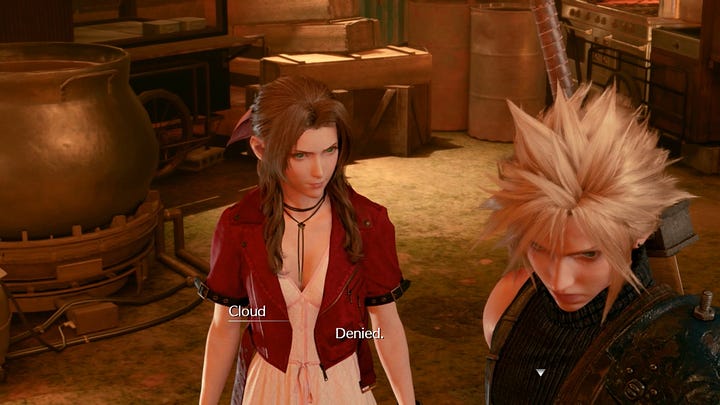
On the Sector 7 plate pillar platform, Cloud doesn’t even attempt to finish off Reno this time even though Reno completely surrenders to his apparent fate by provocatively rolling onto his back.
And as if that’s not enough, even the following Sephiroth appearance can’t re-corrupt Cloud anymore. Sephiroth has failed in making Cloud his puppet early on. At least in the Midgar segment of the story.
Zack’s Memories
Is Cloud able to remember exclusive memories from Zack?
This is speculation territory, but it would explain a few things. Cloud does not inherit Zack’s memories per se, but it seems like Cloud’s mind does contain some memories exclusive to Zack, especially visual ones.
Cloud recites exactly the same lines on the slide when Aerith tries to provoke the same scene from her date with Zack. In Japanese anyway.
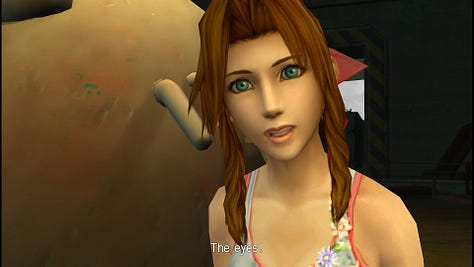
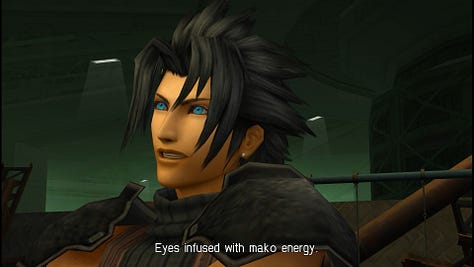
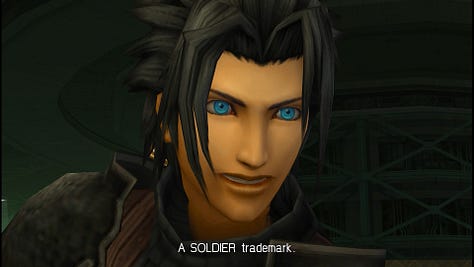
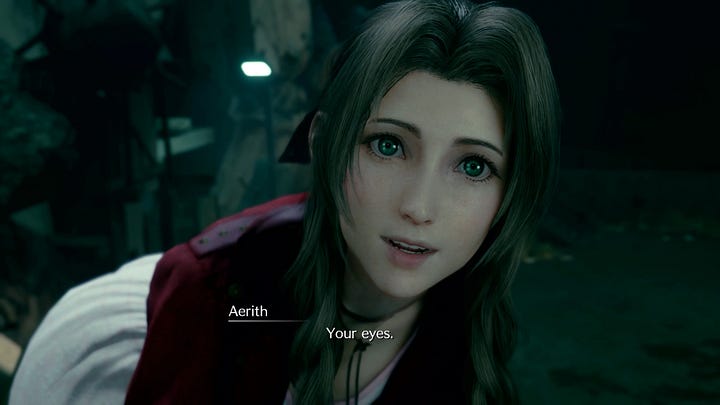
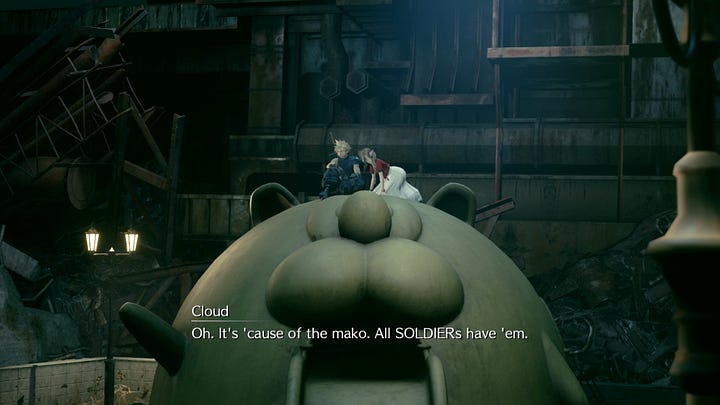
Cloud also hears and remembers Sephiroth’s lines in Jenova’s chamber before the confrontation with Zack which happens before Cloud arrives. Here and in the original.
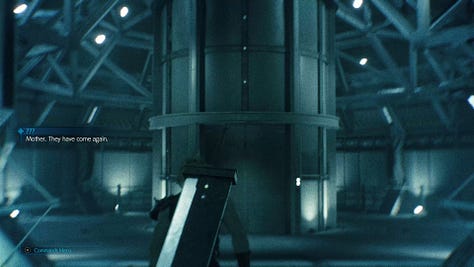
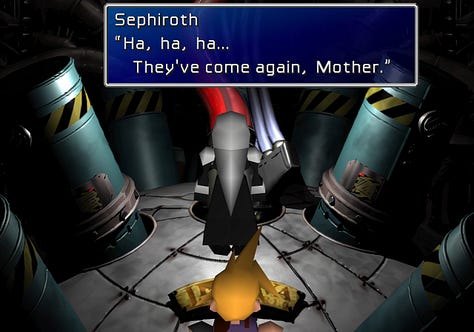
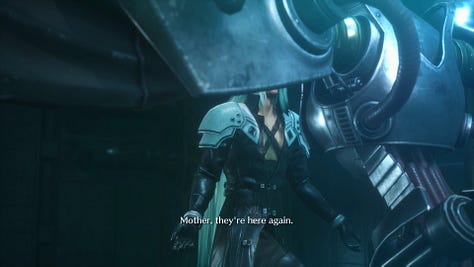
Left to right: Remake, Original, Crisis Core Reunion. The last one happens in Zack's presence before their clash
There are even more such scenes in the original story which Cloud should not remember. Cloud remembers Tifa mourning her father, picking up the Masamune, storming after Sephiroth and getting stricken down by him. This is exactly what Zack experienced, hence the green glitch effect in Remake.
When Cloud finally enters the chamber with the Makonoid pods, Tifa is already lying on the ground and Zack is chucked out of Jenova’s chamber after losing to Sephiroth. Unless Cloud entered before Zack and hid somewhere—which is nowhere visible or even hinted at—he would never have been able to see anything besides Zack getting thrown out of Jenova’s chamber.
Cloud was even lying on the ground in town while it was burning, barely conscious, when Zack left for the reactor. Nigh impossible for him to catch up to Zack in time.
And according to Crisis Core, Zack was the one visiting Sephiroth in Shinra manor’s library in its basement. He leaves after Sephiroth and sees the town in flames, with Cloud already lying on the ground.
So why would Cloud remember their conversation in the library? He was never there. How is all of this possible? How can Cloud remember events he couldn’t have witnessed?
Maybe Zack told Cloud about everything in detail on their journey back to Midgar.
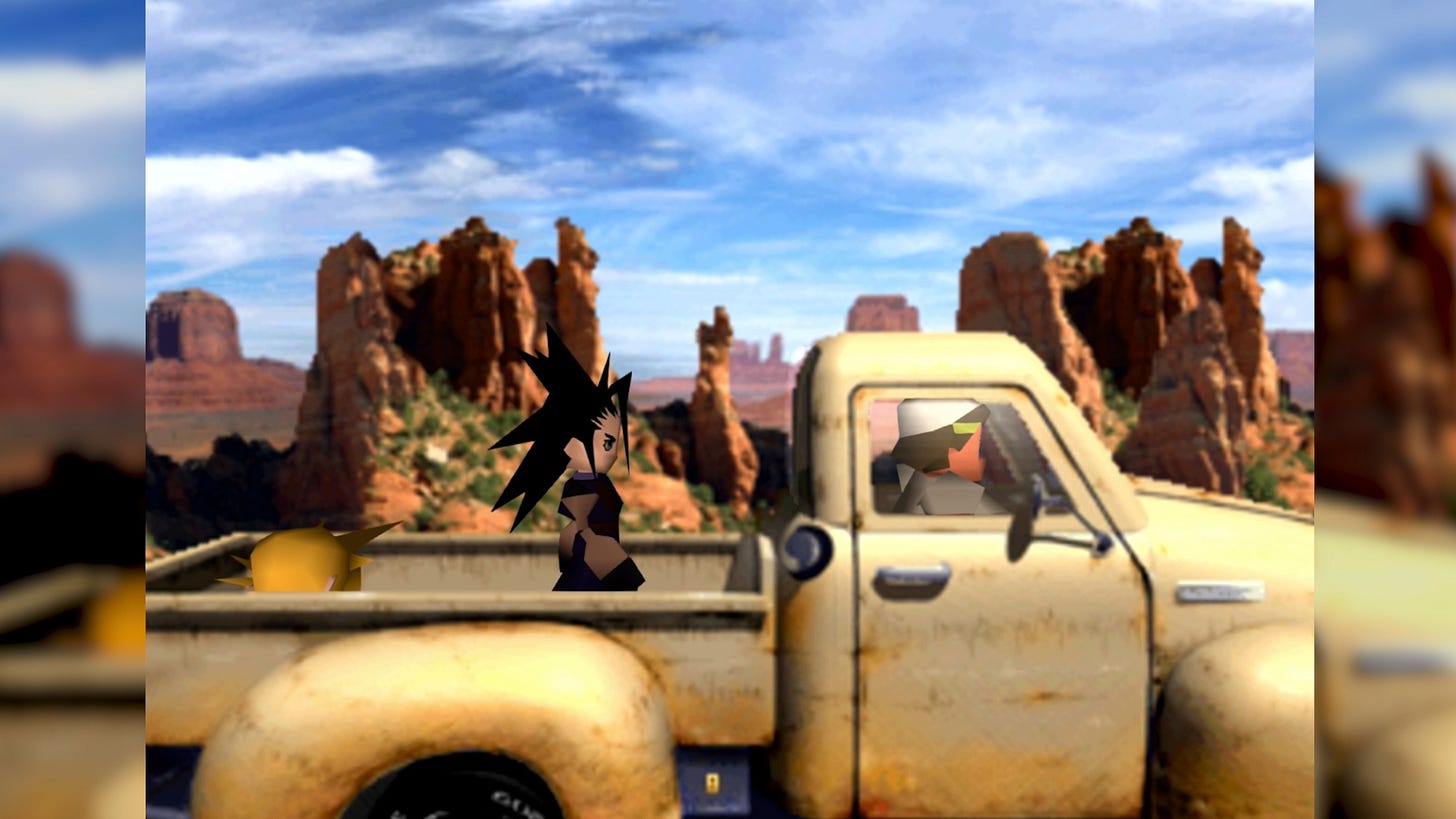
Maybe the Jenova cells within both absorbed Zack’s strongest memories into Cloud either when Zack died or by proximity alone during Zack’s tales on their journey. However, that does not seem to be the case.
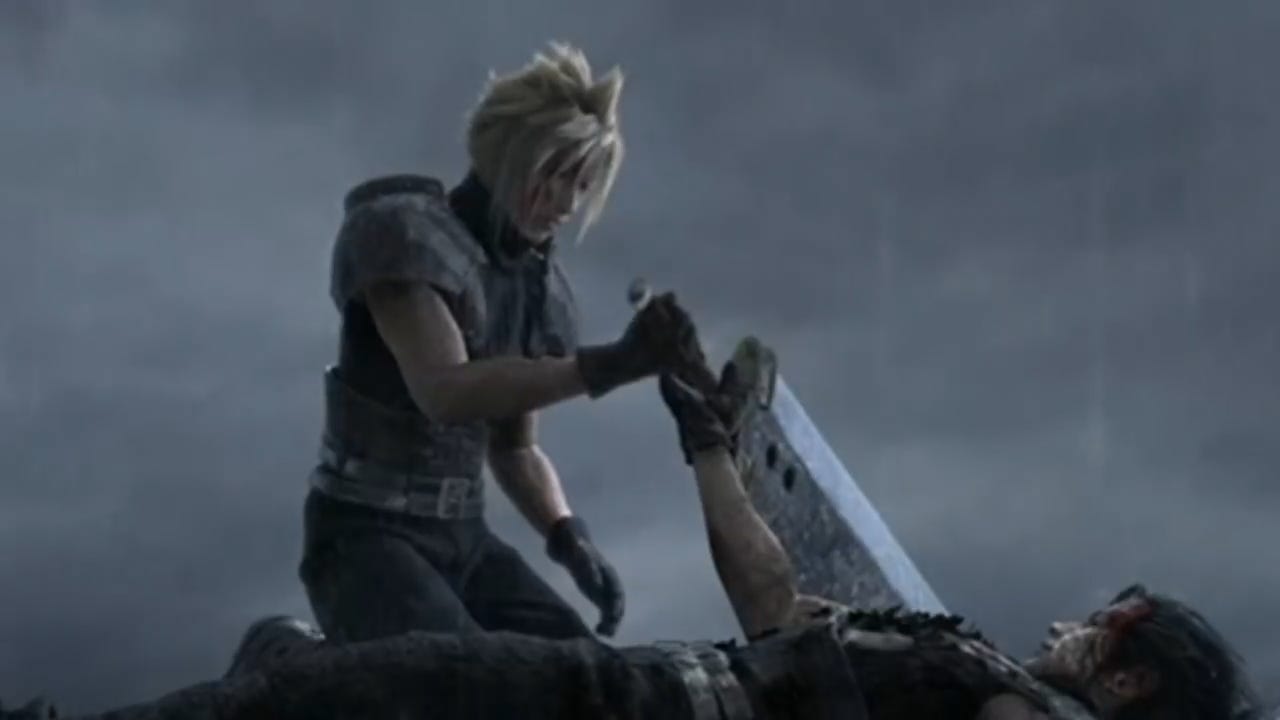
Let’s go back to Zack’s conversation with Aerith in Evergreen Park. From what we know, Zack only briefly mentions Aerith to Cloud without naming her on their truck ride. If Zack told Cloud more than that, he’d also know more about Aerith in his new persona, but he doesn’t.5
Granted, Zack could have said the same line to Cloud in the past, which gets triggered here, but it’s still very curious that Cloud repeats Zack’s line to Aerith right after she says Zack’s name, provoking a memory suppression in Cloud’s mind and then out of the blue acts the same way she did all those years ago on the same playground with Zack and is then bummed out when Cloud says Zack’s line in his rather aloof manner in contrast to Zack’s upbeat and fair-weather nature.
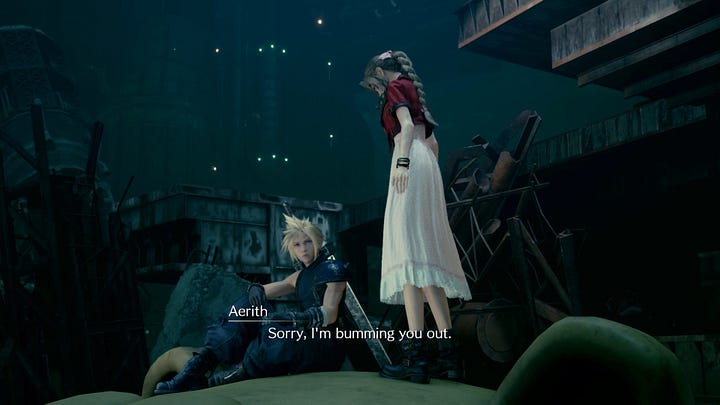
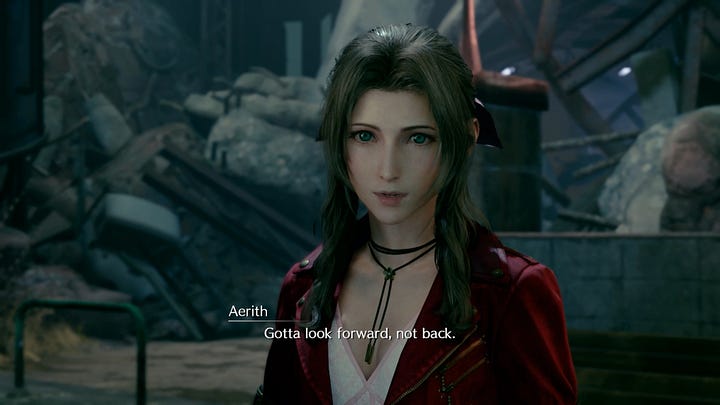
And again, there’s Nojima-San’s comment about Aerith being the most important character in the Remake and that he was very careful with her lines.
This means that there’s more than meets the eye to all of this, which leads to the following hypothesis:
Cloud harbors Zack’s strongest memories, negative and positive, like the Nibelheim incident and his date with Aerith in Evergreen Park. Since parts of those memories are also on display in the original game, we can assume it was the effects of Jenova cells and not some wibbly-wobbly timey-whimey Lifestream memory shenanigans. What if the Mako which was being pumped into their tanks in the Shinra mansion was connected in the pipe system? This would allow Zack’s strongest memories to make their way into Cloud, who was very receptive for Mako and thus new memories in his barely conscious, poisoned, and confused state, acting like a sponge. Hojo’s experiments might have even been beneficial to this process.
Cloud’s Strength in the Singularity
Why is Cloud so strong within the Singularity?
We touched on this in a previous analysis, so let’s keep this brief. Aerith imbued the portal with her memories, which is why we see an exact replica of Midgar on the other side.
Aerith remembers the other characters as they were post Advent Children, basically at the height of their skills and prowess, on level 99, so to speak. It’s thus very likely that our party is capable of those feats they put on display because of Aerith’s memories, especially Cloud, jumping around everywhere and slicing buildings, boulders and flying trains alike.
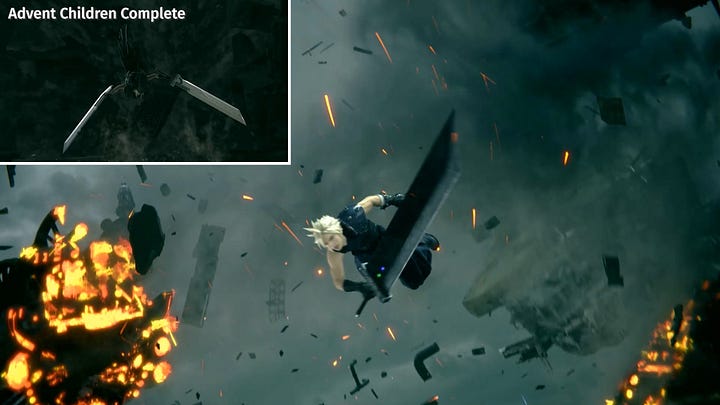
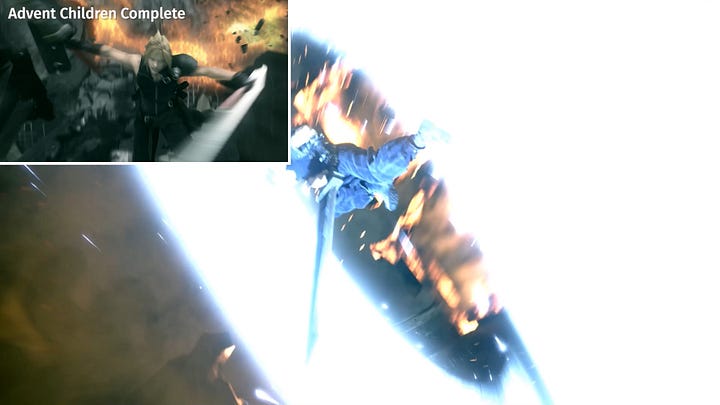
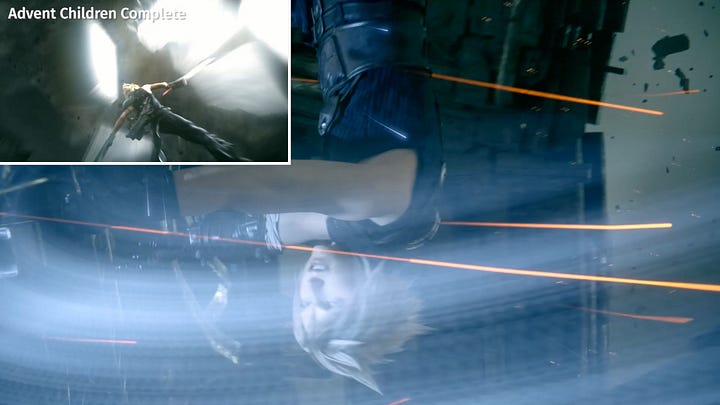
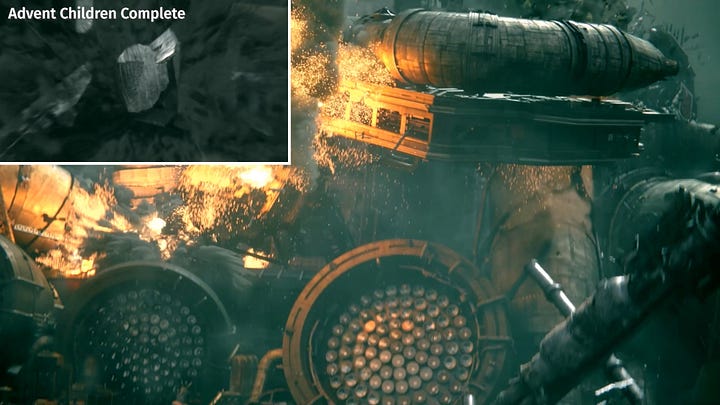
However, once they leave the Singularity again, they’re back on their previous level, which would then explain the inevitable drop in skills at the beginning of part 2.
Sephiroth
Appearance in Midgar
Why and how does Sephiroth appear in the Midgar arc already?
First of all, any appearance before entering the Shinra building, barring one flashback, can be classified as a hallucination only visible to Cloud, so he’s not actually there. However, he never appeared to Cloud like this in the original telling of the story, so what’s going on? As we learned in the Lifestream: Black chapters, Sephiroth made Cloud, or rather Cloud’s memories of him, his spirit core, his anchor of existence, to prevent dissipation into the Lifestream.
In Advent Children, the only way for Sephiroth to connect to Cloud was through Geostigma. By giving Cloud the black mark, Cloud would hold a constant reminder of Sephiroth’s continuing existence, along with seeing that mark spreading all over the planet.
However, he was not able to appear to Cloud as a hallucination as Cloud was still in the world of the living. But according to our theory of this retelling happening in the Lifestream’s memories, it would be possible for Sephiroth to inject himself into Cloud’s memory version and thus appear to him that way.
Still, he cannot do that willy-nilly. According to our observations, Sephiroth is only able to actively appear before Cloud as a hallucination right after a flashback triggered by another event in the story. This heavily implies that Sephiroth needs an open memory pathway of sorts to actually connect to Cloud’s consciousness, which is only granted when Cloud remembers a traumatic event tied to Sephiroth.
But why does this restriction even exist? After being defeated by Cloud a third time in Advent Children, Aerith and the planet might have trapped his essence in the corrupted or stagnant part of the Lifestream. Without the ability to freely roam the whole Lifestream, he’s only able to mind-call Cloud through their still existing connection. As long as Cloud remembers him, he will never cease to exist (see quote from Lifestream: Black above).
But why does he need to do all of this? To change history and remake the future in order to prepare and execute his ultimate plan to finally achieve his goal. But more on that later. At first, it seems like he wants Cloud to go on his fated journey alone, which consists of the Reunion pilgrimage, retrieving the Black Materia, and bringing it to Sephiroth’s reborn body in the northern crater. By making Cloud take the detour in chapter 2, he hopes for him to miss Aerith. As that fails, he tries to discourage Cloud, but Aerith’s interference thwarts that as well. Still, corrupting Cloud and making him sleep in made sure that he didn’t become a part of the second bombing mission. But that’s where the Whisper conflict towards the end of chapter 4 kicks off. Even with some control over the Whispers, Sephiroth still fails to change the timeline and Cloud is welcomed back into Avalanche and thus meets Aerith again. That’s why “There’s still so much to be done.”
Now with Aerith in the game again, he can only try and keep Cloud’s hatred and fear alive. However, this also leads to nowhere thanks to Cloud’s friends, so the only way to ensure another go at victory is to get rid of fate itself, so he invites Cloud to join him to defeat destiny together.
But again, his friends join him, made possible by Aerith changing the portal. Without her interference, it’s possible that after Cloud entering the portal, it would have closed immediately after him. Though he might have anticipated the others following Cloud anyway. Still, the way he treats the others, it seems like he’s only interested in Cloud alone.
In any case, he makes sure Cloud’s gang defeats the forces holding him prisoner and then manipulates them into defeating the forces of destiny altogether, allowing him to form a new future. Eventually, he tries to bring Cloud over to his side so they can defy destiny together. With Cloud on his side, Cloud would not be in the position to defeat him anymore, circumventing the problem altogether.
How many Sephiroths?
Is it always the same Sephiroth or are there multiple ones?
Technically, only one Sephiroth exists, just not from the same point in the Final Fantasy VII timeline. There are also multiple types of appearances which can be put into individual categories. We’ve talked about illusion Sephiroth extensively but there are three more types of appearances: Flashback, Black Robe and Unknown, so four in total. According to the Ultimania’s categorization at least.
Its explanation is a bit vague, purposefully so to not reveal the mystery, which is why we’ll only use it as a basis for our categorization and explanation to stay in canon.6
To get a better grasp on all Sephiroth appearances, we created our own categorization and came up with 6 distinct types of appearances:
Connection
Hallucination
Flashback
Whispers
Black-Robed Figure
Negative Lifestream
What do those mean and entail?
Connections describes the essence of future Sephiroth which connects to Cloud and appears to him as an illusion.
Hallucinations happen merely in Cloud’s mind caused by Jenova cells or his own PTSD without outside influence.
Flashbacks are purely memories of Sephiroth triggered by association.
Appearances labeled as Whispers stand for Whispers being remote controlled by Sephiroth, a.k.a. the Enigmatic Specter.
Black-Robed Figure appearances describe images of Sephiroth superimposed over a black-robed figure, visible to everyone.
The Negative Lifestream appearance is exclusive to chapter 18 and describes Sephiroth’s body which is composed of negative Lifestream essence.
To better visualize those categories, let’s speed through all relevant scenes.
Connections happen:
when Sephiroth lures Cloud into the alleyway to inflame his hatred,
when he freezes Aerith in place to tell Cloud that he cannot save anyone,
after Cloud falls into the church and he tells him that there’s still so much to be done,
and after the plate falls to tell Cloud that he has failed yet again.
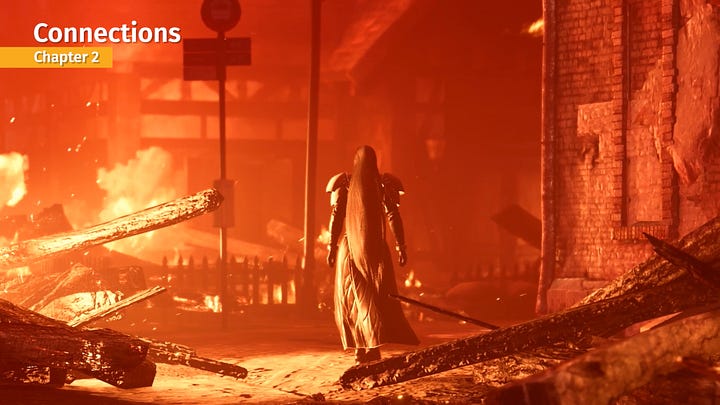
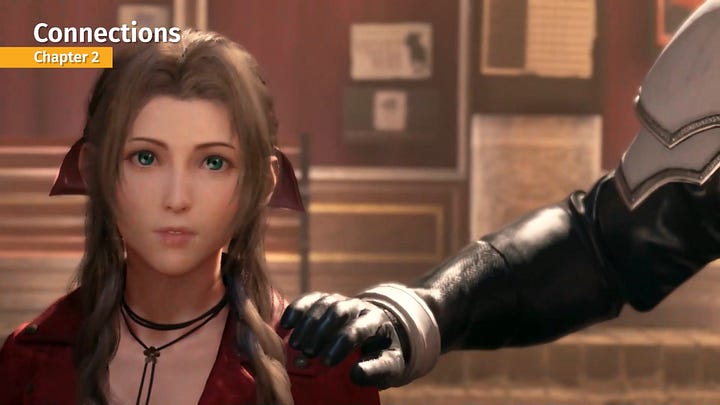
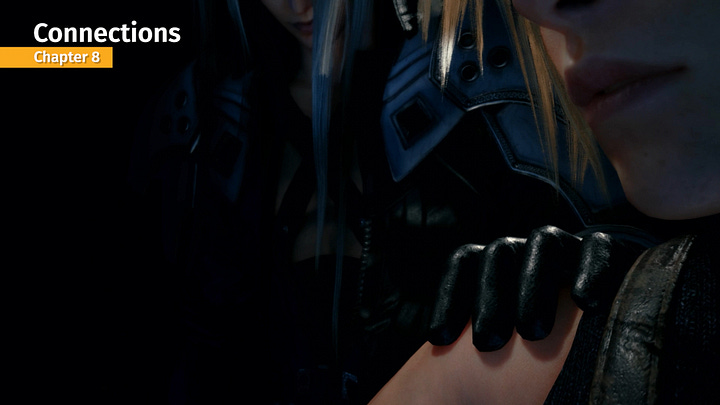
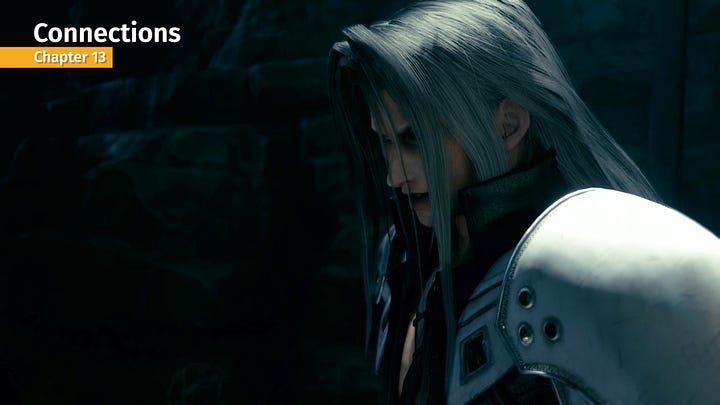
We experience Hallucinations:
when Cloud mistakes Marco – number 49 – as Sephiroth,
again, when he sees number 2 as Sephiroth after being touched,
after the regular Cosmos Theater presentation when it glitches out,
and at the end of the highway before Cloud hits the brakes and sees the 3rd feather.
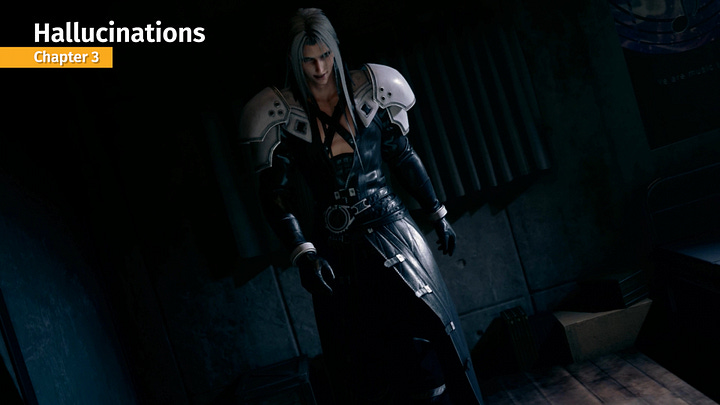
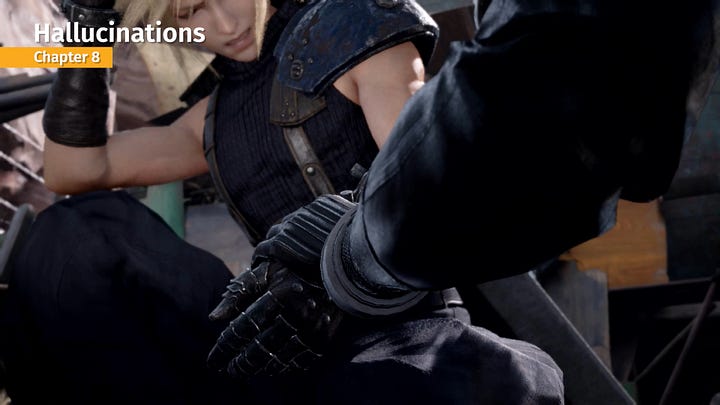
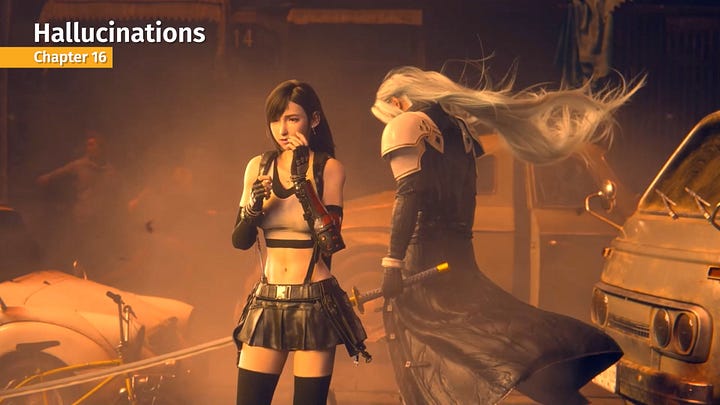
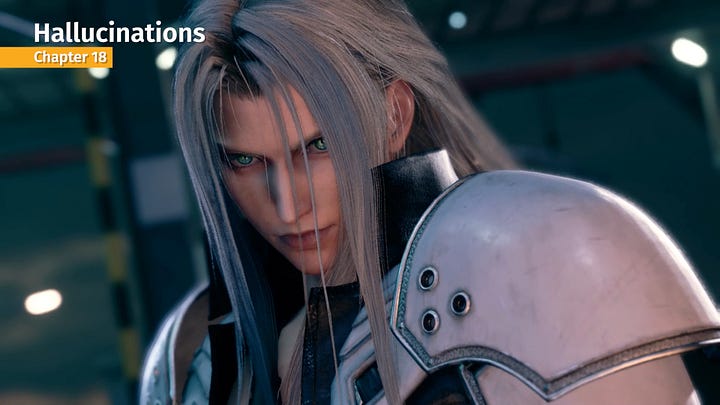
Flashbacks happen:
when Cloud remembers Sephiroth claiming he’s an ancient after the plate falls,
during his Reunion walk towards the elevator,
and on the bridge to Jenova’s tank when he remembers Sephiroth talking to Jenova.
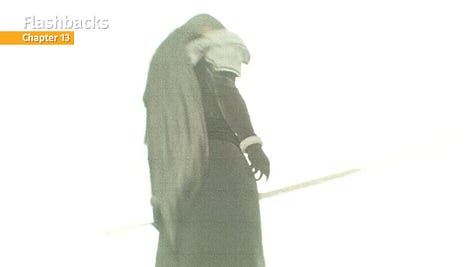
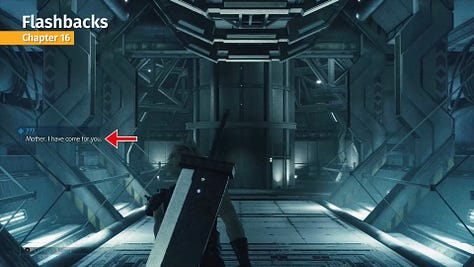
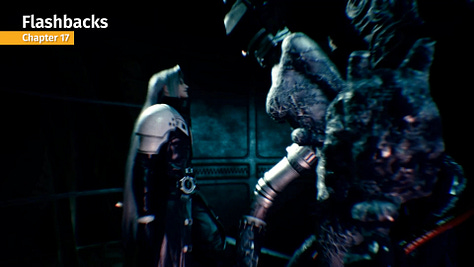
Sephiroth controls Whispers on 3 occasions:
at night in chapter 4 to make Cloud sleep in,
on the next day to keep Cloud away from Avalanche,
and on the sector 7 train station plaza to slow down the group.
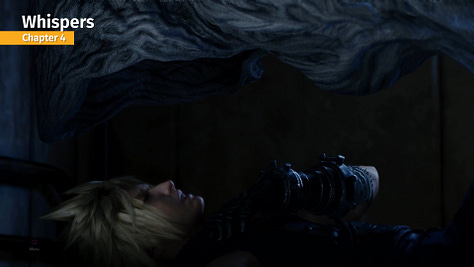
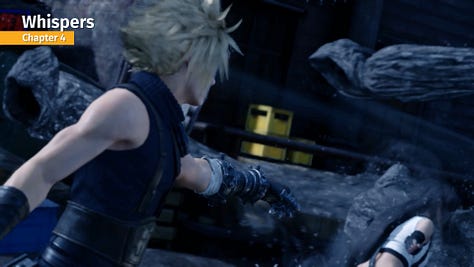
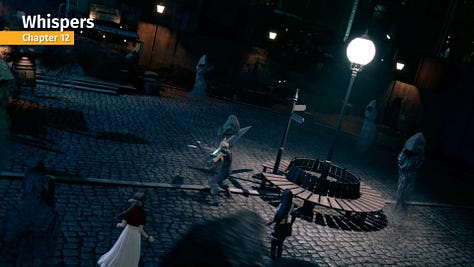
The most appearances happen as a Black-Robed Figure while:
walking by Palmer,
in front of Jenova’s tank, slicing the bridge,
on one of Hojo’s monitors carrying Jenova away,
killing the president and Barret and turning into Jenova Dreamweaver,
picking up Jenova’s body as number 2.
and before releasing control over number 2 on the roof.
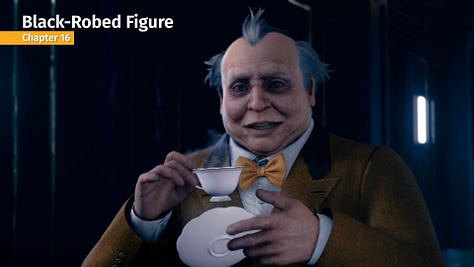
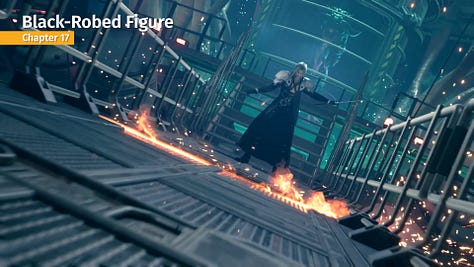
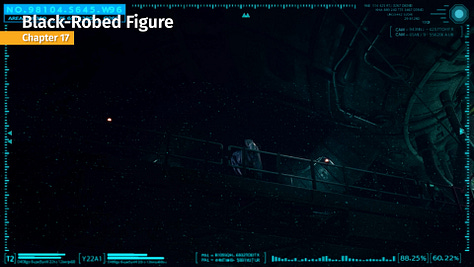
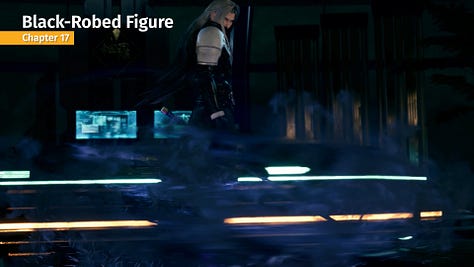
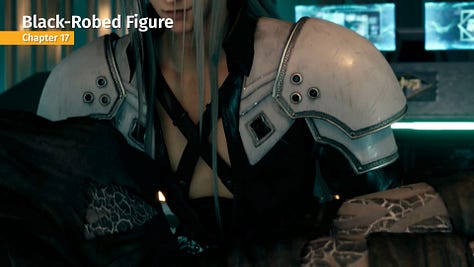
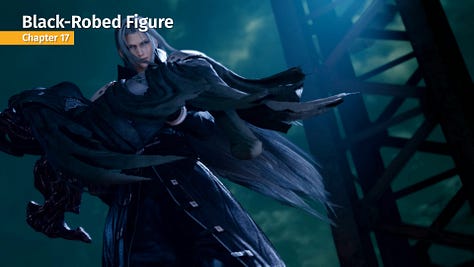
The Negative Lifestream version makes only 3 appearances:
at the end of the highway appearing to everyone and creating the portal,
after the victory over Whisper Harbinger to fight the group,
and at the Edge of Creation, trying to win Cloud over to his side.
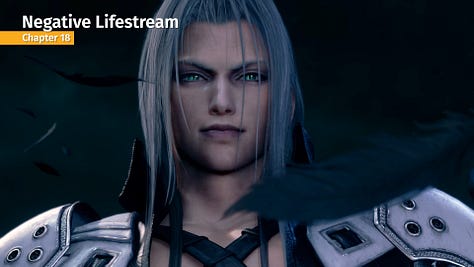
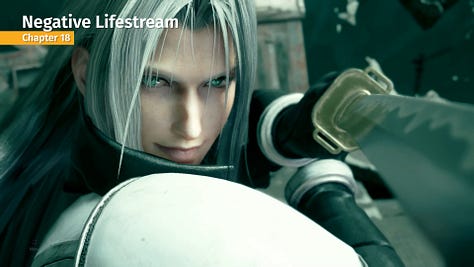
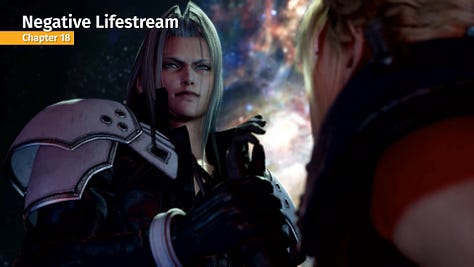
Control over the Whispers
How does Sephiroth gain control over the Whispers?
He’s jailed within Whisper Harbinger and within the negative Lifestream. At least according to our current theories. Sephiroth also still has a connection to Cloud. If Cloud remembers him, he is able to come back. Whenever Cloud has a PTSD episode with memories connected to Sephiroth, he’s able to connect to Cloud and appear before him, causing Cloud to remember him, and increase his power and influence.
This is only possible because the Cloud in this game is part of the planet’s memory, to which Sephiroth usually has access to, as he points out in the original game:
Sephiroth
“I became a traveler of the Lifestream and
gained the knowledge
and wisdom of the Ancients.”
“I also gained the knowledge and wisdom of those
after the extinction of the Ancients.”
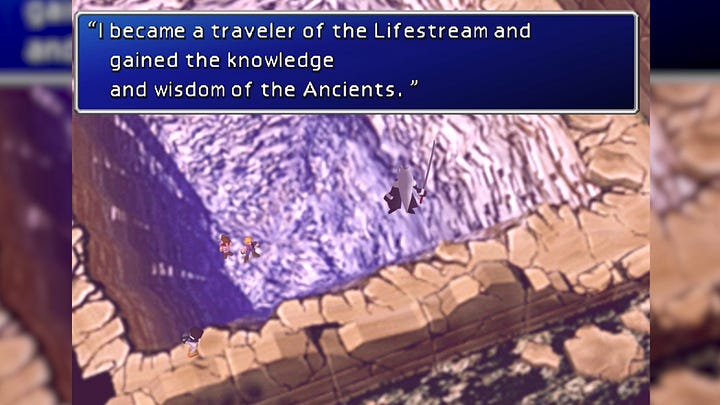
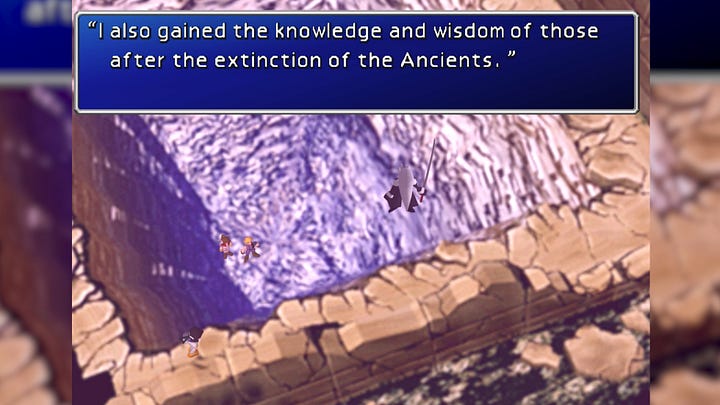
With this connection to Cloud, he’s able to slowly increase his influence over Whisper Harbinger and by proxy also some of the Whispers. But only where a lot of Whispers are already standing by to counteract change. We can see this in chapters 4 and 12, where we have to fight one enigmatic Specter in two separate fights, a purple Whisper with control over other Whispers.
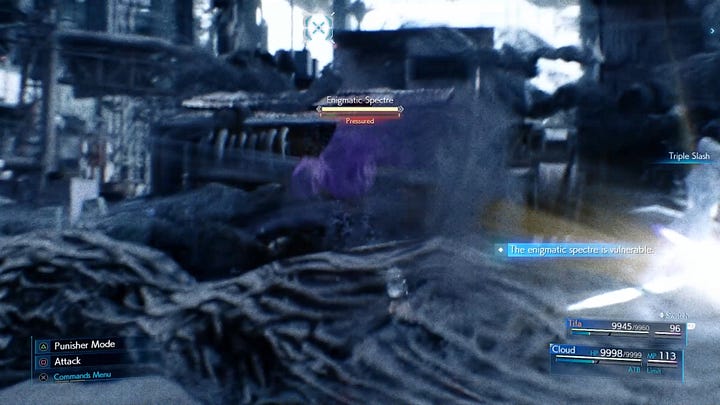
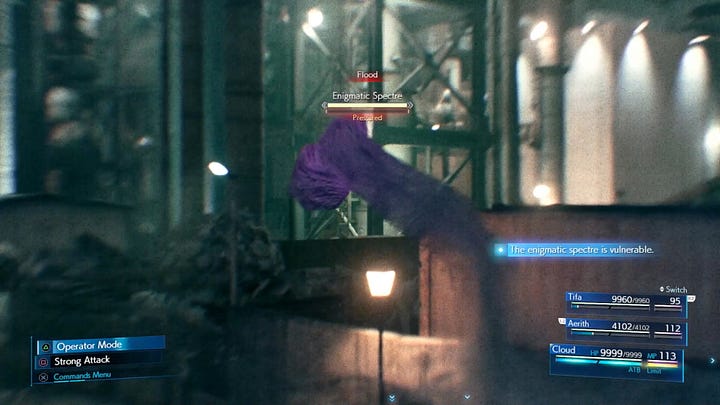
As soon as we defeat the purple Whisper, the battle ends, and the other Whispers are set free. Until then, the purple Whisper can summon more Whispers indefinitely.
The very first battle does not include a purple Whisper, but the whole Whisper debacle also does not end until we overcome the second battle. Sephiroth is also able to force Cloud into a deep slumber as his first attempt of controlling Whispers.
As an aside, the Whispers’ depiction is most likely influenced by Sephiroth’s and Jenova’s connection to them and the corruption of the part of the Lifestream they’re imprisoned in. The Whispers’ appearance is too similar to the black-robed people in the original game, even down to their artwork, for this to be a mere coincidence.
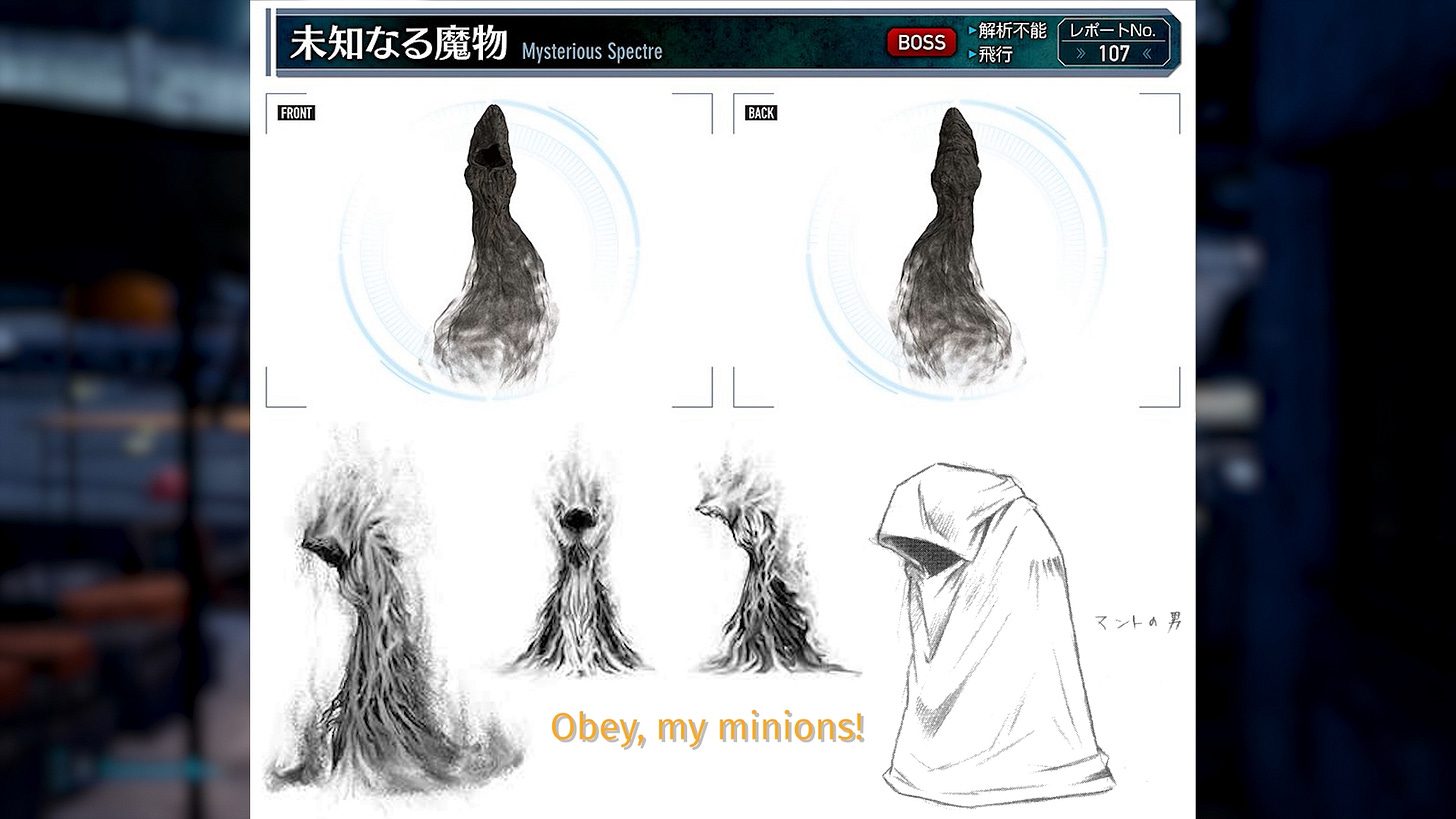
In chapter 18, with such an abundance of Whispers preparing the Midgar dome, it’s even possible for Sephiroth to project himself in front of everyone. He does not attack, because he probably can’t. He’s just a projection. The rain of black feathers would then be a mere side-effect of this projection being initiated.
In the battle against Whisper Harbinger, Sephiroth’s influence over and possibly even corruption of it—as seen by the color purple—might compel it to summon Sephiroth’s Remnants as avatars representing protectors of a future where they will come into being, in order to stop those who seek to defy destiny, the planet’s memory.
Compared to mere future representations of our party members, as one might mistake them for, the Advent Children are in actual danger of ceasing to exist if we defy destiny and change the future.
There is also another detail which points towards a corruption by Jenova: the fine mesh protruding from Jenova’s body in the tank can be found on the Harbinger’s head! This is too specific to be a coincidence.
Furthermore, the carvings on its head shell form a gap for a single eye, the left one, through which its purple “brain” emits a purple glow, just like Jenova does in Crisis Core and the original game.
The same goes for Whisper Rubrum, Viridi and Croceo, just with different colors. Big thanks to Sleepezi for this find!
After the party defeats Whisper Harbinger, shattering its heart, Sephiroth’s prison, the latter is completely free and can do what he pleases with the Whispers.
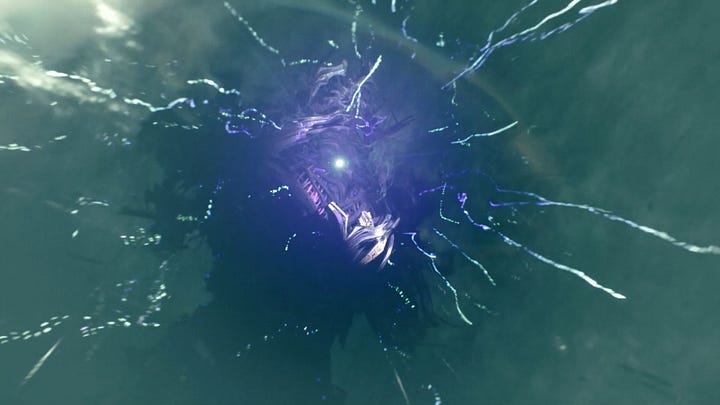
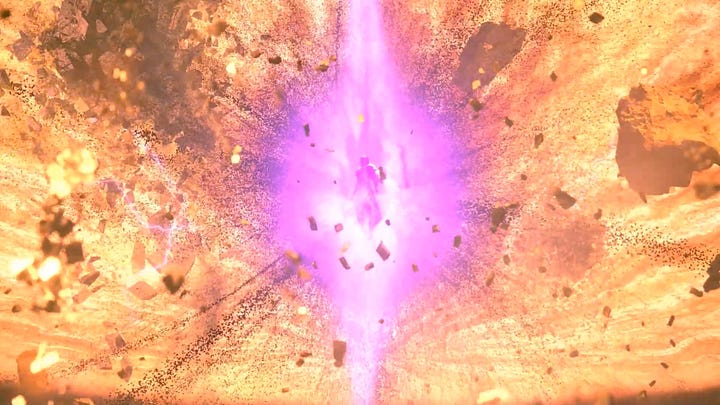
The Color Purple
What’s the color purple about?
It’s mainly a symbol for anything bad for life and the planet. A destructive force, so to speak. Some examples would be Sephiroth, Jenova, Shinra, you name it. It therefore also represents corruption and parasitic behavior. Anything draining away the planet’s life force or extinguishing it. However, it’s also used to symbolize negative emotions, like fear, or even a counterbalance to yellow which is used to signify the opposite. Life, protection, symbiosis, creation, or positive emotions, like comfort.
Yellow is not nearly as prevalent and mostly used to provide contrast. This imbalance itself can be considered a hint towards the planet’s current state: not good. Before we get into it, huge thanks to Sleepezi again for doing the groundwork on this subject.
Now, let’s go through all relevant occurrences of the color purple.
Spoilers: there are a lot.
The color purple has its first appearance in the intro cinematic, both involving Aerith.
The purple light down the alley frightens her and causes her to flee. At the same time, one of the yellow light bulb flickers, signifying danger of corruption.
Outside, another purple light on the ground grabs Aerith’s attention, which eventually leads to one of her yellow flowers being stepped on. Another purple entity causing a yellow entity to suffer.
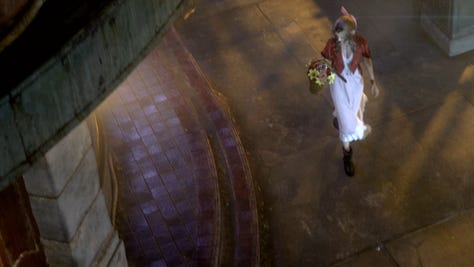
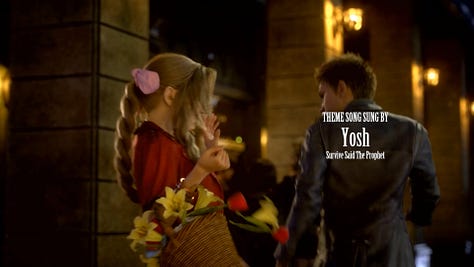

One of the vans passing by in the blurry background while Aerith picks up the flower is also cast in purple light, and so is another part of the street further south below the large Studio White sign.
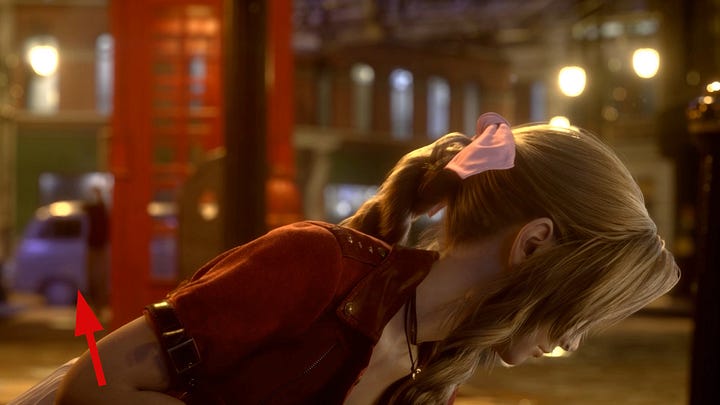
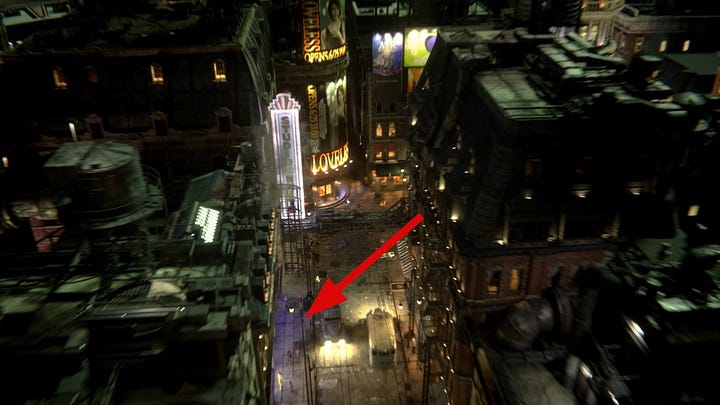
It seems like corruption is slowly spreading within a peaceful place, represented by a myriad of yellow lights in the rest of Midgar, as we don’t see any other purple light source during the rest of this intro.
The Banora White poster containing a purple Dumbapple is also quite suspicious, especially since it appears all over the place. It’s Genesis… there’s no escape… he’s everywhere!
President Shinra is the only one at the company wearing a suit with a purple hue. He’s the king parasite after all, slurping up all the Mako. His original design displayed his outfit in an auburn color, so this change was deliberate.
Some of Smogger’s and Chronomogger’s poisonous and silencing attacks which stick to the ground also bear the color purple. Those look very toxic and very unhealthy for soil and plants.
It’s also worth noting that Wall Market oozes with purple lights. Maybe it’s merely a design choice, but it’s also thematically fitting. Independence, chaos, consumerism, degeneracy and no regard for life in general.
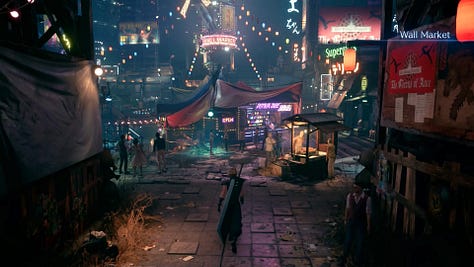
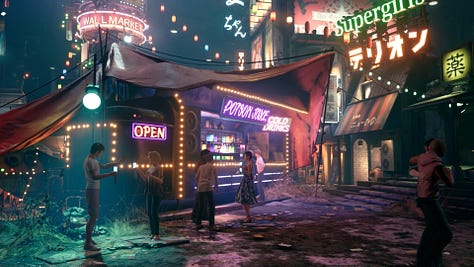
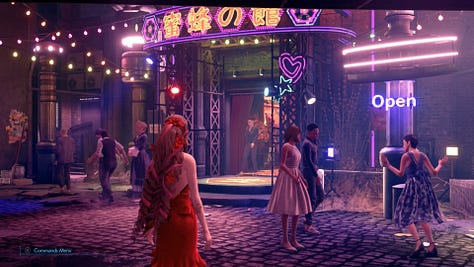
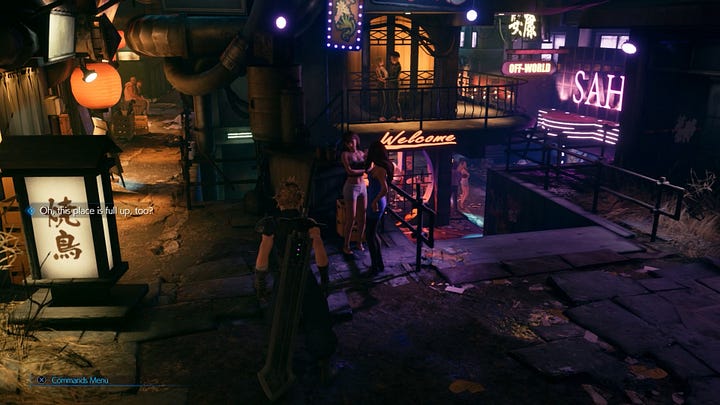
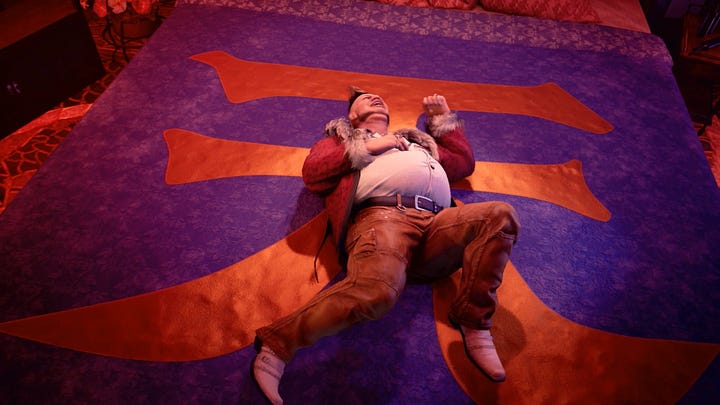
In chapter 11, many of the ghostly finger paintings are purple. The ghosts in the Train Graveyard are trapped and corrupted by Eligor, plagued by loneliness, fear and sadness. Their inability to return to the Lifestream disrupts the cycle of life and is thus bad for the planet. The painting on the sad ghost’s back presumably shows Eligor corrupting and controlling a ghost, which is illustrated as this purple effect around the latter.
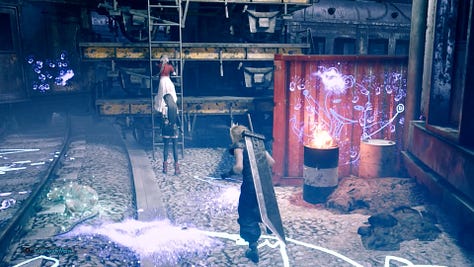
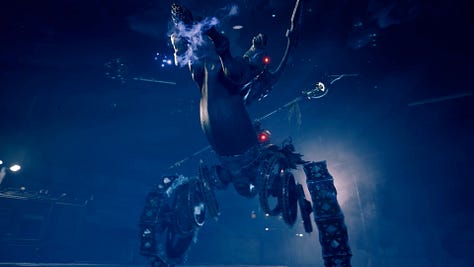
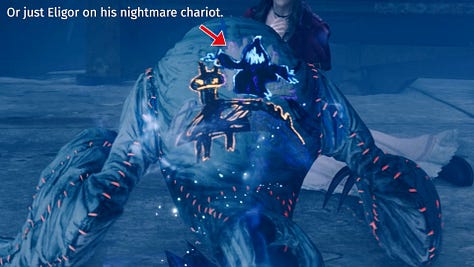
The Shinra building contains only a few elements cast in purple, even though it represents the heart of what’s presented as the planet’s worst enemy. Besides elements connected to Sephiroth and Jenova as we’ll see later. Interestingly, the only purple elements are light sources found in either key locations for, or the goal of Operation Save Aerith:
The information desks in the lobby and the reception desk on floor 59 where we receive the key cards as well as all over the structures Tifa needs to hop over or climb across to reach the first key card.
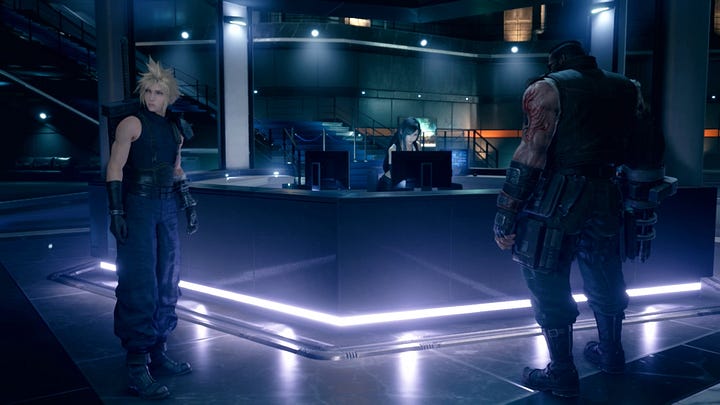
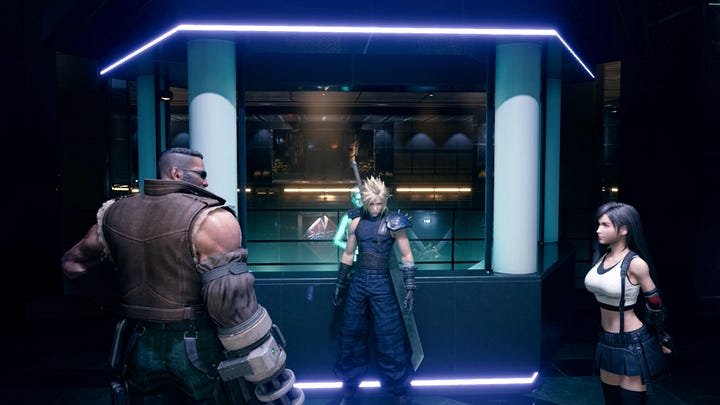
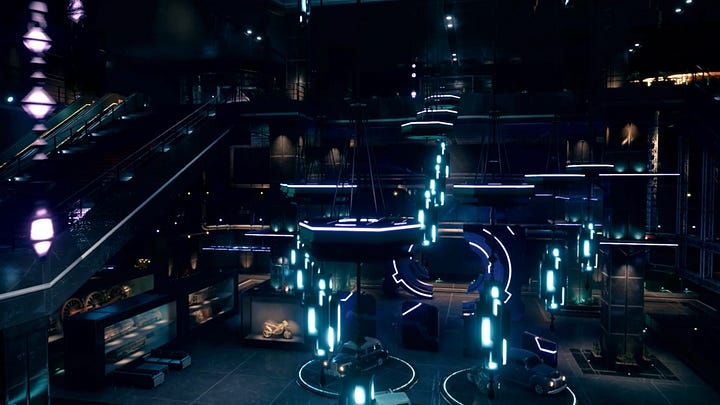
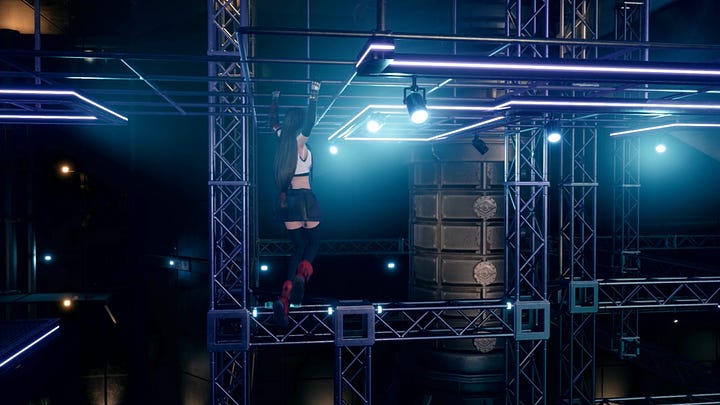
The test subject tank where Aerith is being held in, receives the only purple light source in the whole laboratory complex.
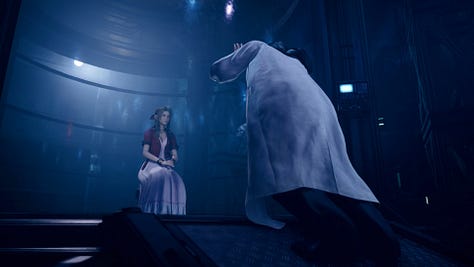
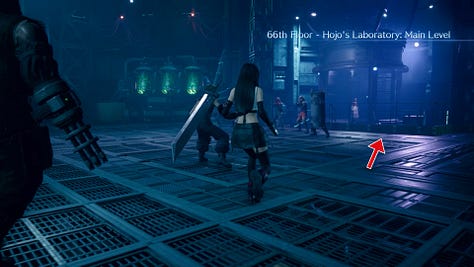
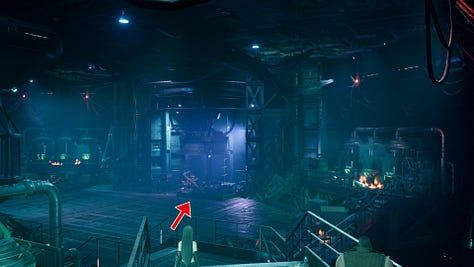
Not even Red XIII’s tank has one, which lies directly underneath. Nor the Drum—besides Jenova’s tank. Only green, blue and the occasional red.
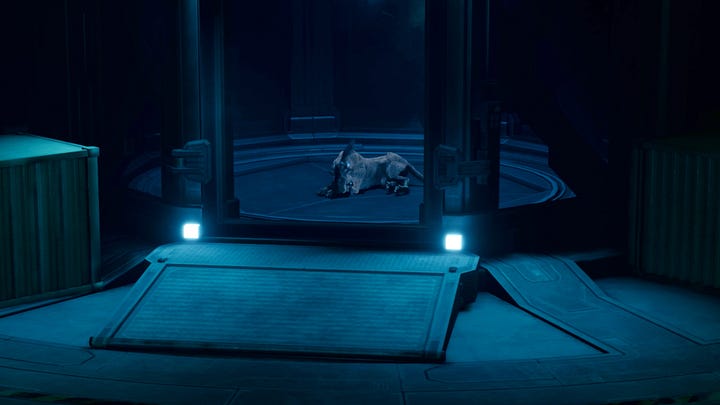
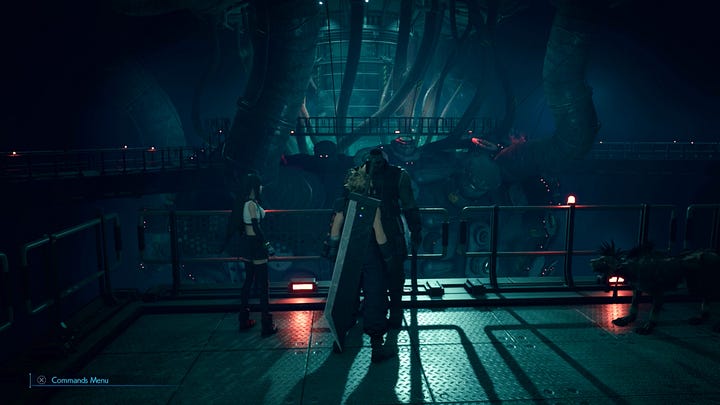
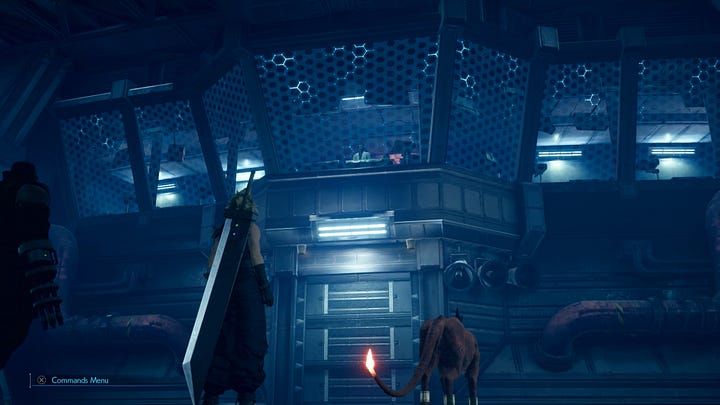
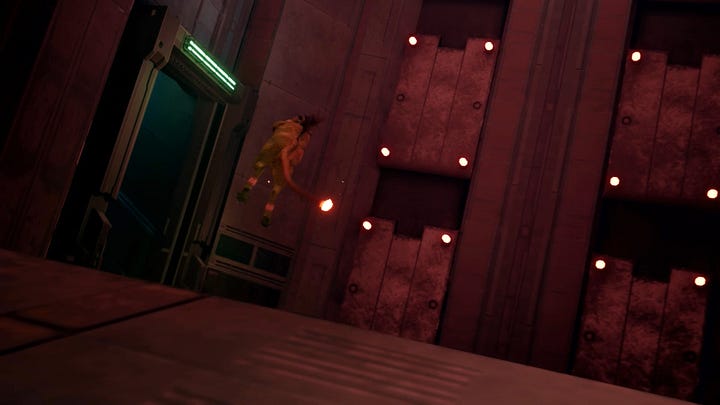
That’s it for the building interior. However, there’s more. During the phenomenal presentation in the Cosmos Theater, we can spot countless purple flowers growing on the fields alongside white and yellow ones. The perfect balance between order and chaos.
Just like the yellow and purple Materia floating by. While other balls also fly around, those 2 specific colors receive a purposeful focus, though the yellow command Materia is shown a bit longer and closer.
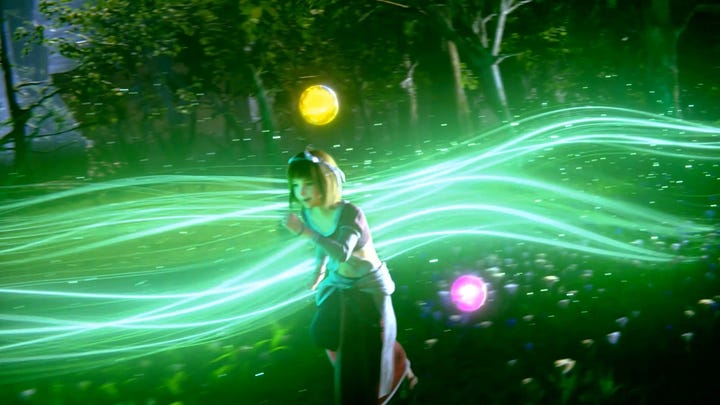
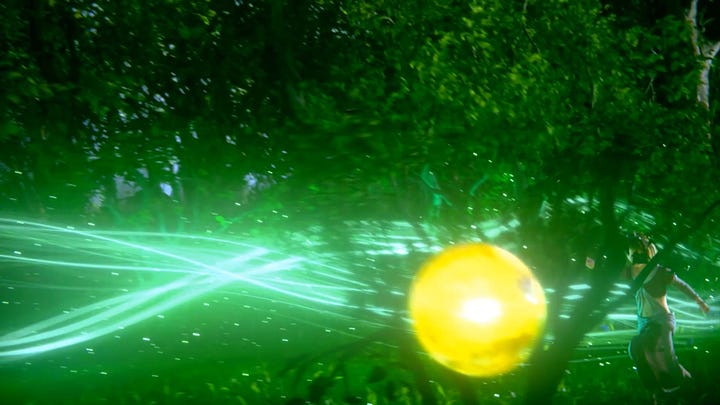
Later in the same presentation, we see Jenova’s meteor flying towards the planet. A bright yellow shooting star with a purple trail. Pretending to be good in the front while its corruptive nature is trailing behind?
Right after, Sephiroth’s part of the presentation begins with purple glitches which show up again when more elements appear, like the fleeing crowd, or when the hooded figure or the image of Sephiroth itself teleport.
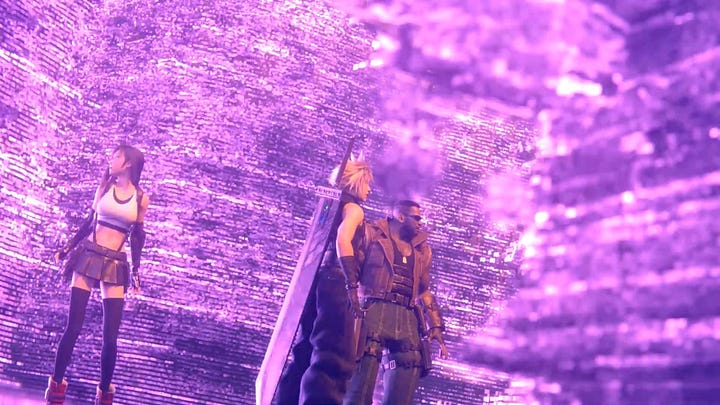
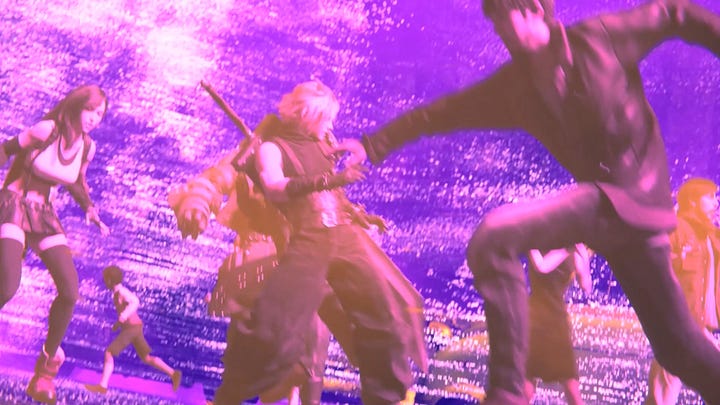
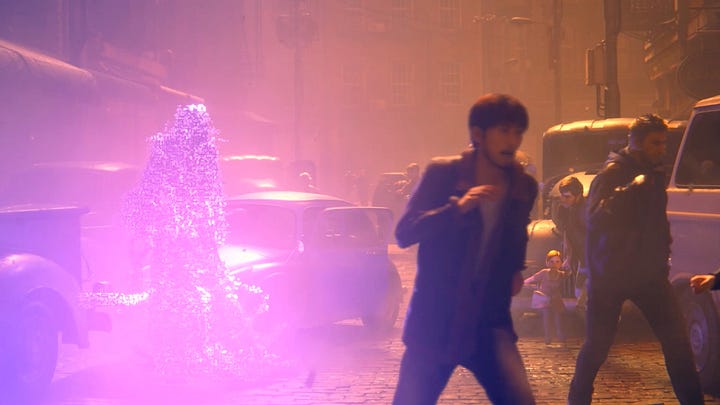
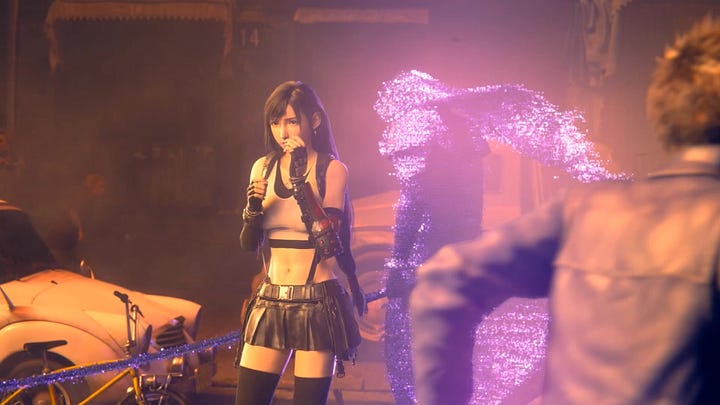
Before taking the elevator to The Drum, we get to see through the Unknown Entities’ eyes for a few seconds where everything is covered in a purple haze. That’s what a high concentration of Jenova cells in your body does to you.
Inside Jenova’s tank sits a purple light source glowing from below and a green one shining from above, presenting Jenova in this eerie duality of Mako green and corrupted purple. Life from above, death from below. The polar opposite of the tragic event at the heart of the Forgotten City…
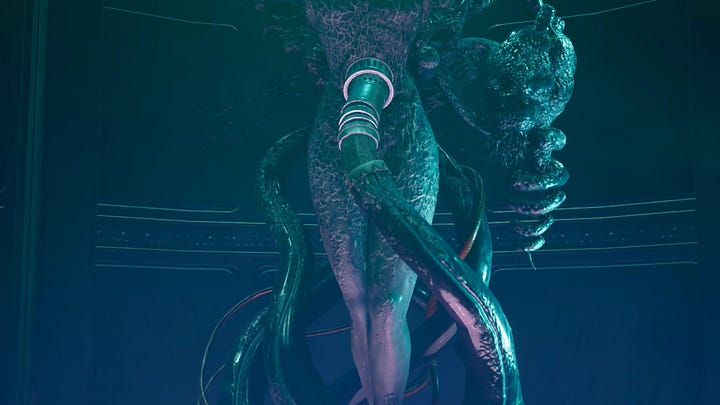
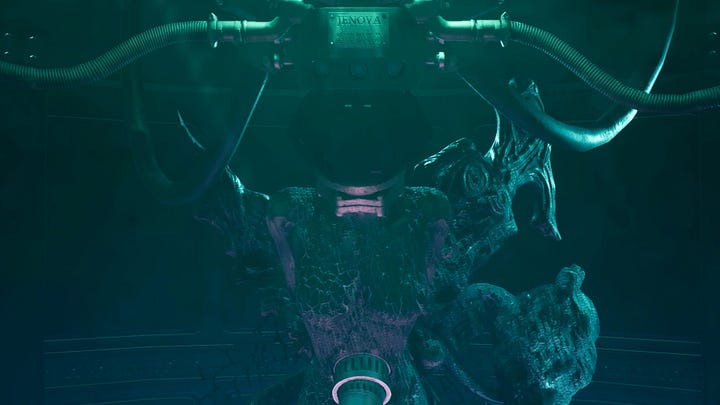
After Sephiroth takes Jenova away, we follow a purple trail of goo which looks quite alive, as if it tries to corrupt everything it touches.
In President Shinra’s office, Sephiroth engulfs himself in purple mist to transform into Jenova Dreamweaver.
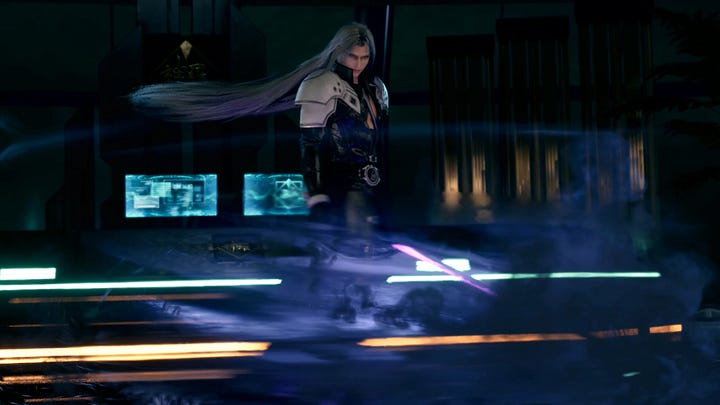
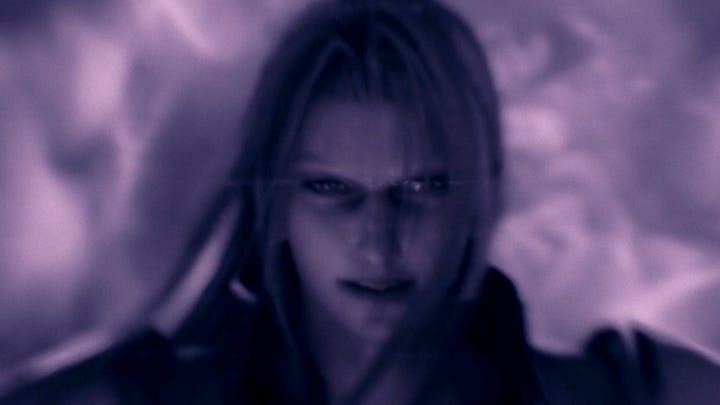
Within the battle, it summons countless tentacles which appear from portals emanating purple particles, purple vortexes inflict Stop and Jenova occasionally teleports, leaving purple smoke behind.
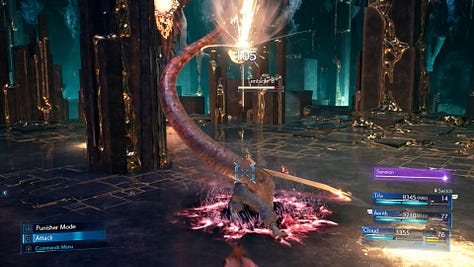
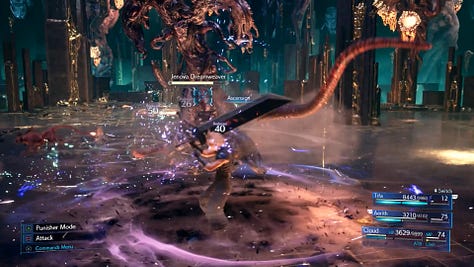
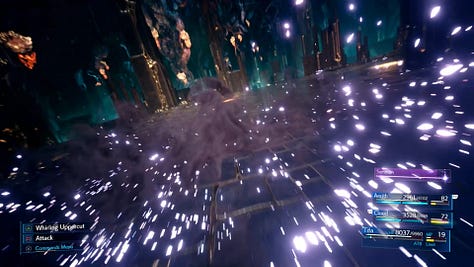
Beating Jenova transforms the area back into the President’s office and through purple mist, Number 49 is revealed and dies, dispersing into purple smoke and particles. Jenova’s body appears the same way.
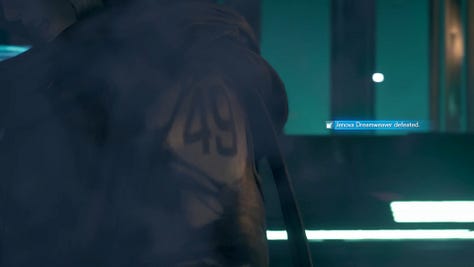
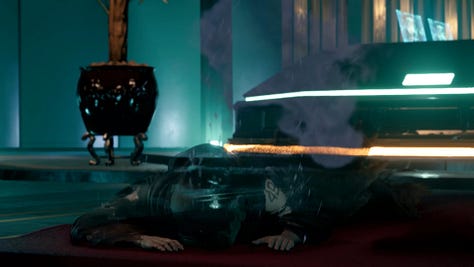
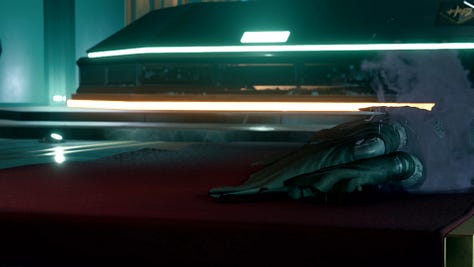
The backside of Rufus’ coins depicts purple mandrake or mandragora flowers in addition to his dear dog Darkstar.
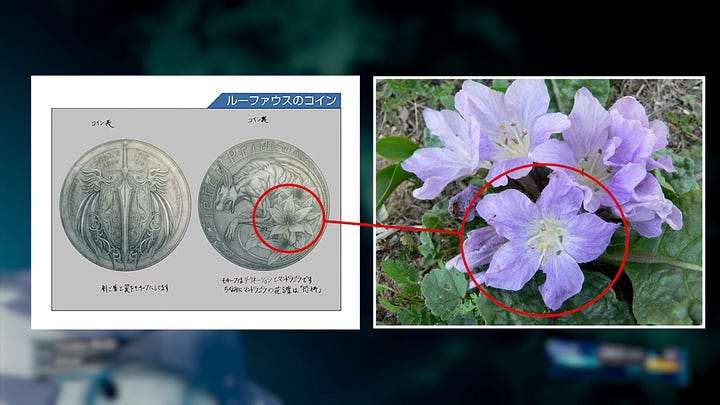
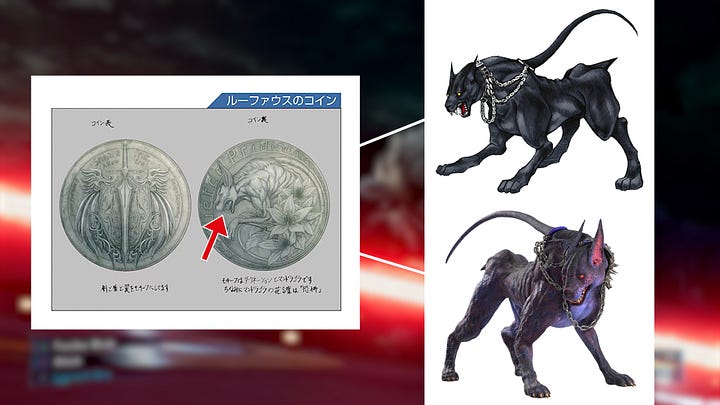
These flowers symbolize fear, a negative emotion, according to the Ultimania.
Chapter 18 is full of purple colors:
Sephiroth’s portal,
lightning, tornadoes, and other weather effects in the Singularity,
Whisper Harbinger’s main color is also purple, especially its heart and brain,
its three minions appear and disappear through purple smoke,
and to defeat Whisper Harbinger for good, we need to shatter its purple heart.
Negative Lifestream energy then gathers in a single spot, which glows purple.
During the battle against Sephiroth, his sword sometimes glows purple or even emits purple particles.
Before the third party member appears, he traps Cloud and his first ally in a purple circle.
His sword also glows in the same color in that scene.
At the Edge of Creation, Sephiroth’s sword swings leave purple streaks in its wake.
And during the ending, Sephiroth’s feather in Cloud’s hands shimmers in a purple hue and dissipates into particles of the same color.
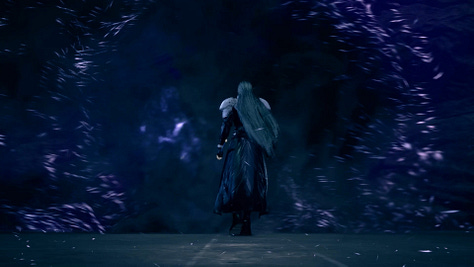
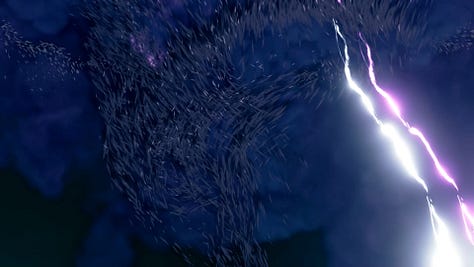
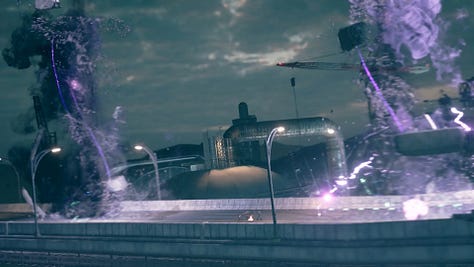
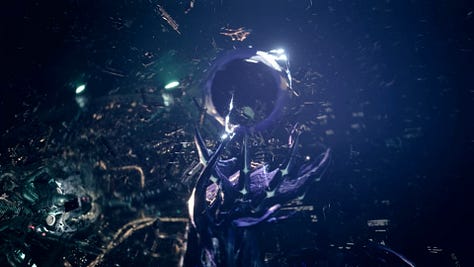
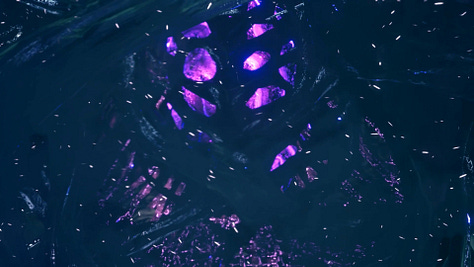
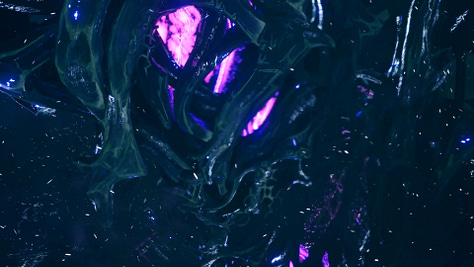
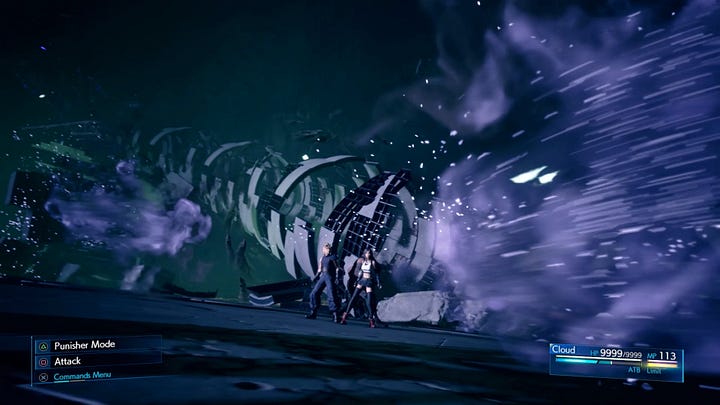
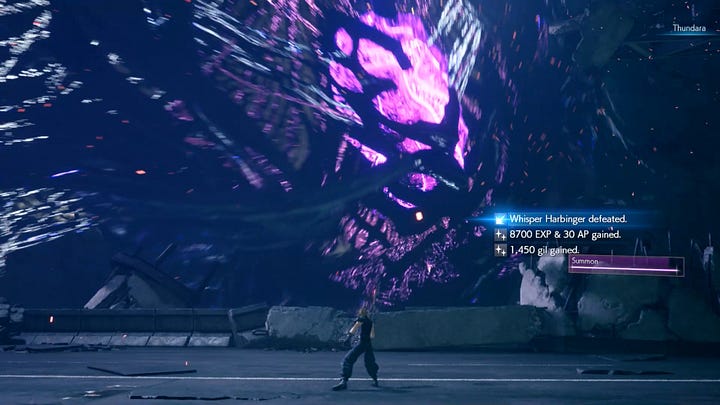
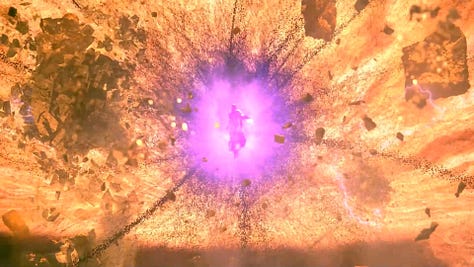
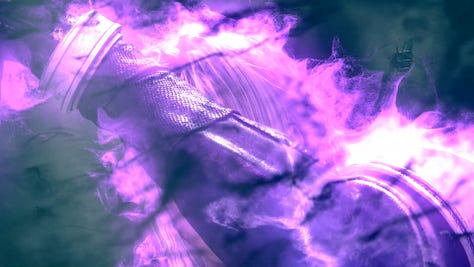
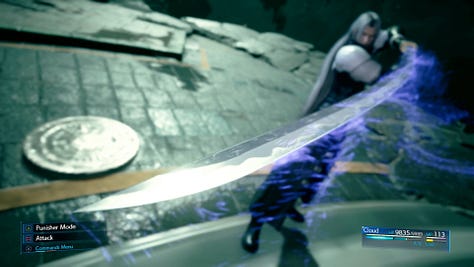
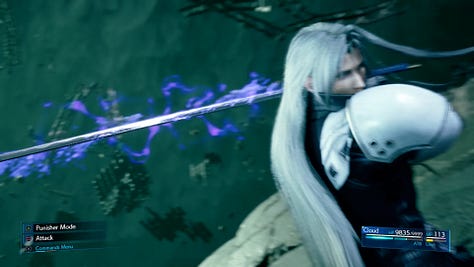
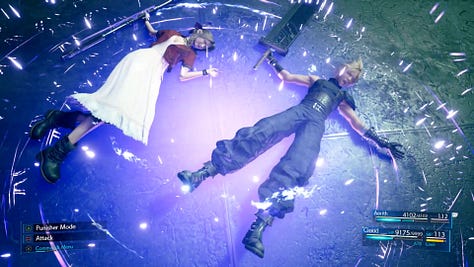
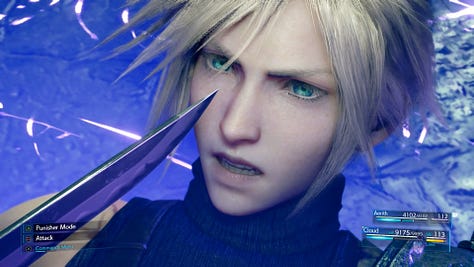
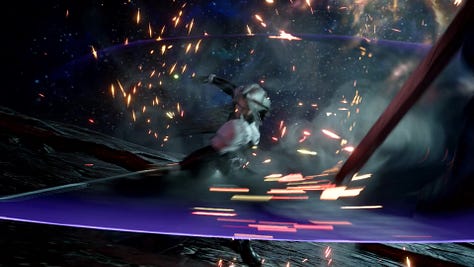

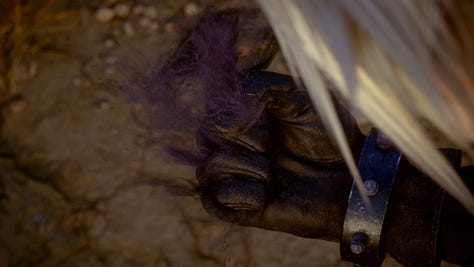
The color Purple also exists in gameplay on the side of the characters.
One thing we haven’t seen or heard anybody mention is the purple light on weapon treasure chests. Sure, it just signifies their special content, but what’s the color of the lights on normal chests?
Correct: yellow.
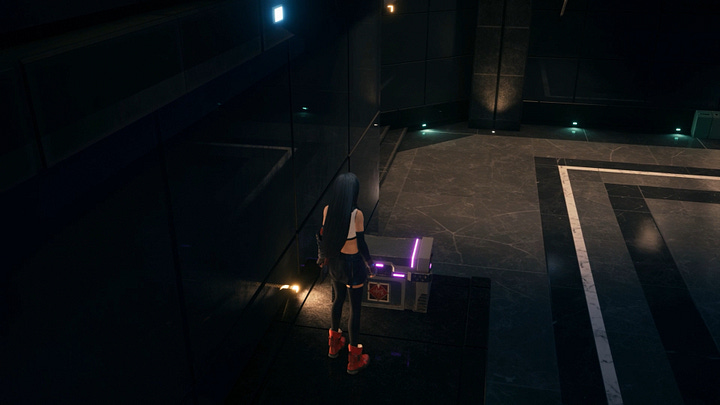
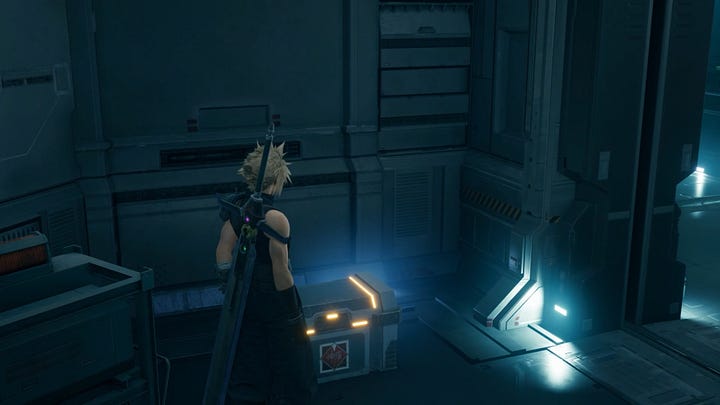
Besides Grenades or Hazardous Material, all items in yellow chests are of a supportive nature: potions, remedies, bangles, accessories… everything which heals or protects.
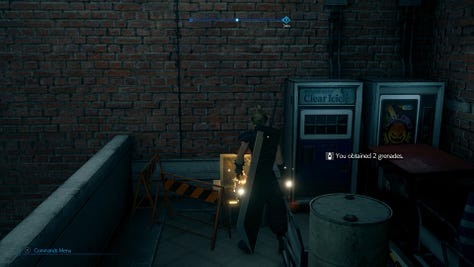
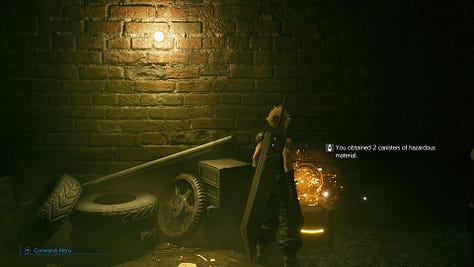
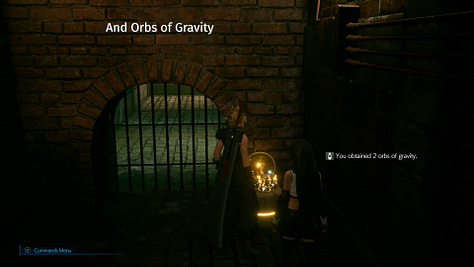
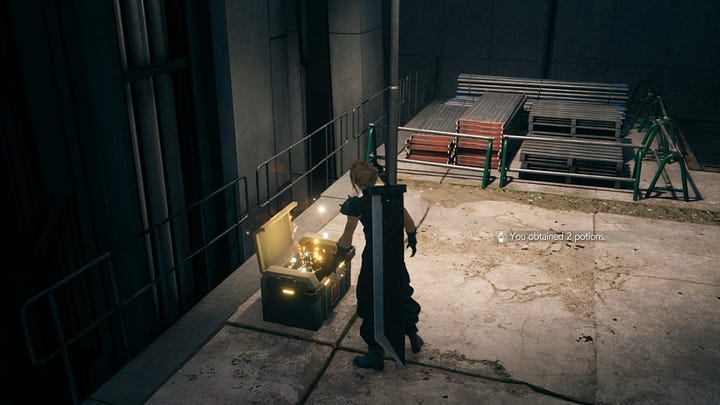
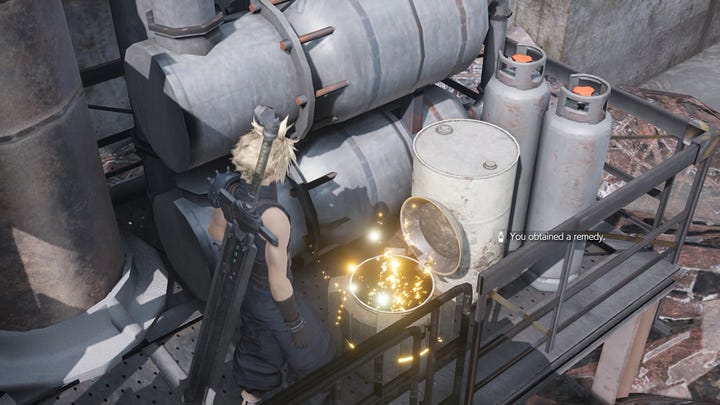
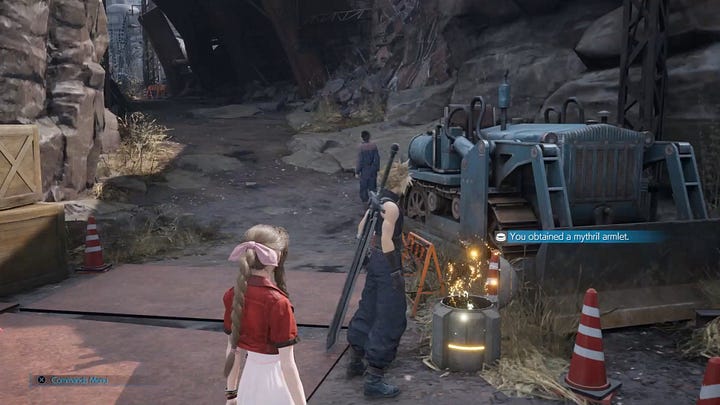
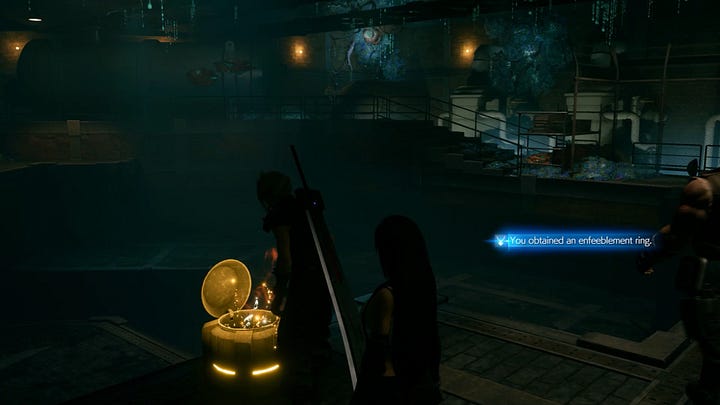
Weapons on the other hand are meant to inflict harm or cause destruction and are eventually used to combat the Whispers and defy fate, which is bad for the planet in its eyes, hence the color purple.
They could have used colors other than yellow and purple for chests. Why not green and orange?7 Why even distinguish between weapon chests and the rest? It’s too deliberate to be a mere coincidence and beautifully continues the established dichotomy.
Purple is also used for particles of certain ability effects, like Cloud’s Triple Slash, Tifa’s Focused Strike and the Limit Break Refocus which is granted through a purple independent Materia. Then we have Aerith’s Sorcerous Storm and her Tempest unique ability. They all represent either an offensive and destructive force or enable a higher damage output.
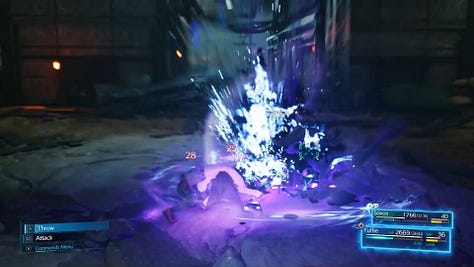
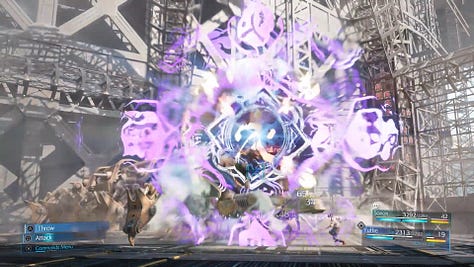
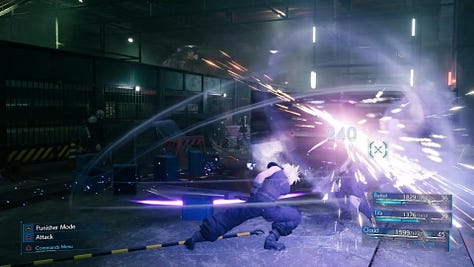
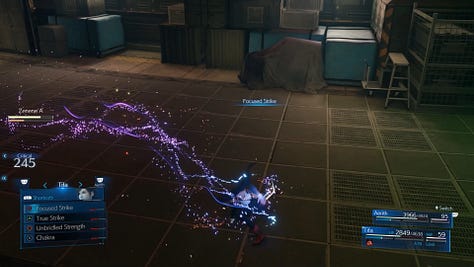
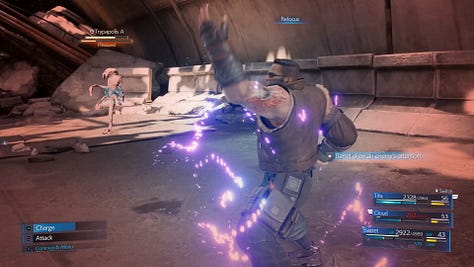
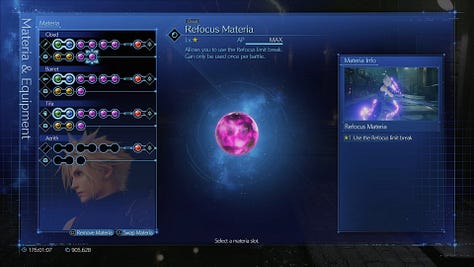
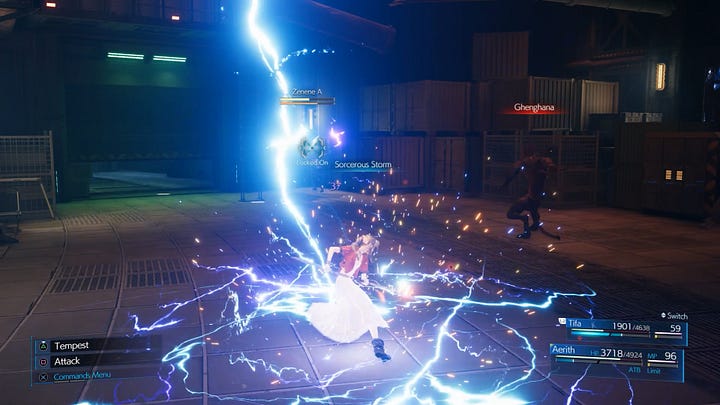
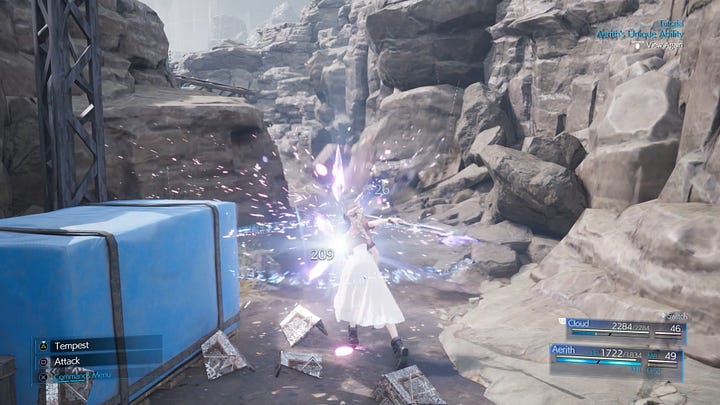
While Cloud and Tifa’s abilities might just be coincidence, Refocus and Aerith’s attacks certainly have meaning, especially the explosive purple crystals summoned by her Tempest attack.
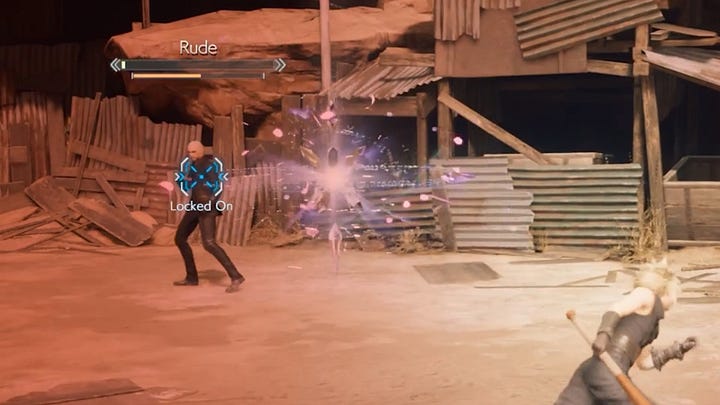
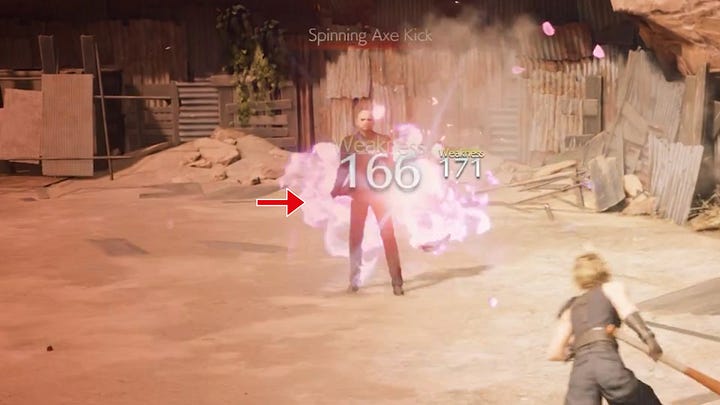
Refocus increases the action capacity by 50%, which is different than just manipulating ATB speed. Attacks like Maximum Fury even increase in effectiveness by using up to three instead of two ATB segments.
And if you still think all of this is just coincidence, what about the Armored Shock Trooper? It contains yellow lights on its armor which protects the Enhanced Shock Trooper inside and purple lights on its weapons.
In Episode INTERmission, the stronger and more deadly version called Armored Magitrooper bears only purple lights.
Of course, those colors could merely be a visual design choice and don’t necessarily connect to plot and story.8 Nonetheless, too many fitting examples9 exist across the board to write off the significance of those two colors.
Sephiroth’s Obsession
Why is Sephiroth so obsessed with Cloud?
Cloud was the one who achieved the unthinkable. He essentially defeated Sephiroth while being a mere infantryman. With this, however, he unintentionally laid the groundwork for Sephiroth’s future. Sephiroth died, yes, but his body and Jenova’s head traveled the Lifestream and ended up at the northern crater where he began to reconstitute his body. He also gained a lot of knowledge from the Lifestream. This is what kickstarted his plan to absorb the Lifestream, become a God, and reshape the planet’s future.
The combination of hatred and admiration towards Cloud made him a great target in Sephiroth’s plan. Hojo’s experimentation also helped as Cloud is now prone to manipulations through Jenova cells.
At the end of the original game, Cloud defeats Sephiroth again. Together with his allies but also alone in their spirit battle. To not fade into oblivion, Sephiroth reached out and made Cloud’s memories of him his spirit core, his anchor. Sephiroth tried to succeed a third time by using Geostigma—essentially corrupted, negative Lifestream—to remind everyone, especially Cloud, that he still exists. Using those memories, his Remnants and eventually the remains of Jenova’s head, he returned to the planet’s surface, to finally reach his goal: Choking and corroding the planet with negative Lifestream before traveling the cosmos with the planet as his vessel to inhabit a new planet, just like Jenova did before him.
Alas, Cloud manages to defeat him once again, not even providing Sephiroth the satisfaction of giving him despair. After all of their adversarial encounters, losing to Cloud over and over again despite being the more powerful entity, they share a very special and tight but unhealthy bond.
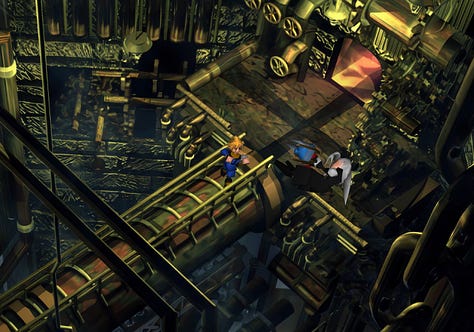
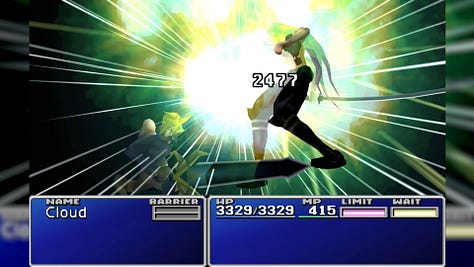
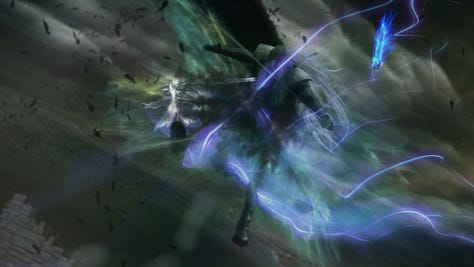
The question is, how is Cloud even able to stand up to Sephiroth and thwart his plans over and over?
The first time during the Nibelheim incident, the most rational explanation is a combination of Sephiroth’s unpreparedness, hubris, and underestimation of Cloud. Being impaled seemed to have filled up Cloud’s Limit gauge paired with his hatred for Sephiroth made Cloud capable of standing up to him, similar to mothers seeing their child in mortal danger.10
At the end of both the original story and Advent Children, Cloud defeats Sephiroth using his ultimate Limit Break. Cloud’s Limit Break paired with strong emotions seems like a force to be reckoned with.11 Furthermore, Cloud seems to cheat death over and over and over and over and over, again and again and again and again and again.
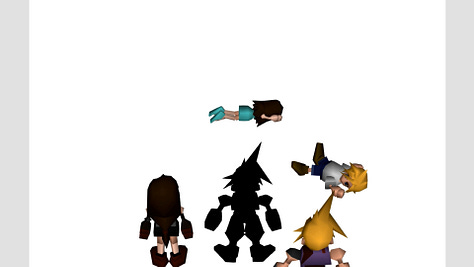
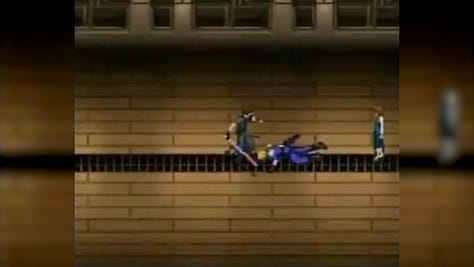
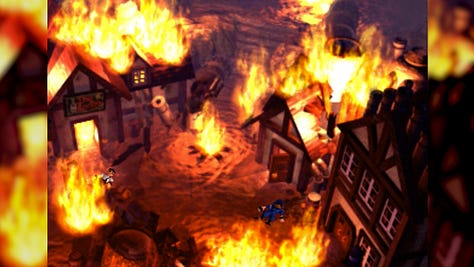
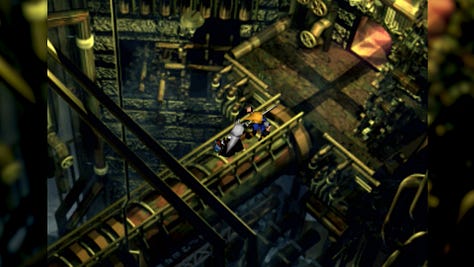
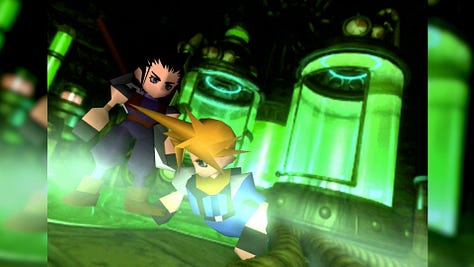
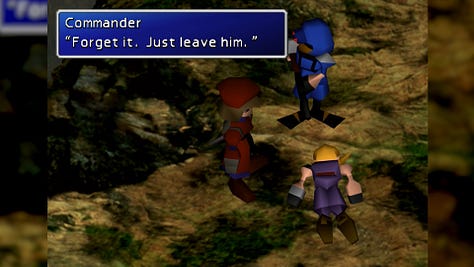
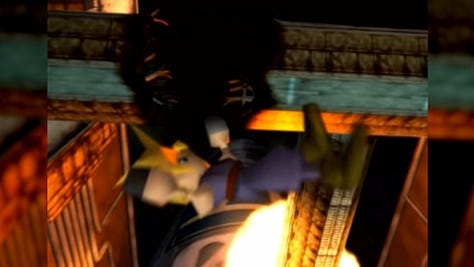
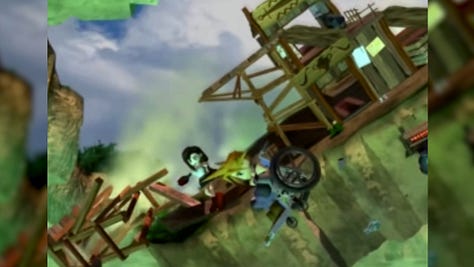
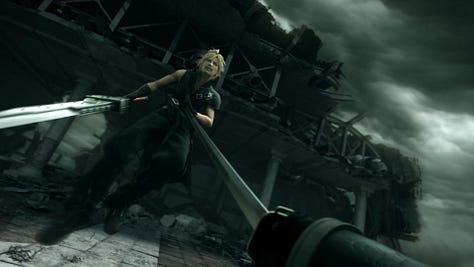
Thus, their special bond and Cloud’s continued resilience happen to be the only tools for Sephiroth to change his destiny where he’s bound to lose. To overcome those bonds, he needs a different approach.
His Ultimate Goal
What is Sephiroth’s ultimate goal and how does he try to achieve it?
Based on the previous section, is it even possible to escape or defy one’s destiny? In our previous analysis about Aerith’s secrets, we proposed that the main chain of events will remain, even with fate seemingly overcome. Why? The planet’s will and the still existing framework, especially the latter. A few things have changed, yes, but the story, the characters, their motivations, and backstories have largely remained intact, providing a very similar starting position for their journey.
Imagine a rigid framework with a lot of free room in between. Fixed points in the story that need to remain in order to retain a stable future and ensure our main players’ pursuit of their goals. Anything can happen between those fixed points as long as the events in between lead to said fixed points.
But what does this mean for our main players?
Aerith seems to secretly wish for a different future for her, one where she doesn’t need to die at the altar in the Forgotten Capital, one where she can eventually live a normal life with her friends. Still, she knows that this dream will remain just that. She needs to stop Sephiroth and Jenova, and save the planet. That’s her calling as the last Cetra.
Sephiroth tried to resist destiny multiple times but failed every time. Which leads him to “go back” and change past memories; to load a previous save state and try a different approach, so to speak. As discussed earlier in this analysis, we witness Sephiroth attempting to change the flow of the story multiple times. By appearing to Cloud in Sector 8, Sephiroth seems to try and divert him away from his original path and make him miss Aerith as well as the train where he would meet up again with Avalanche.
With regaining control over Cloud and his hatred towards his nemesis, Sephiroth would be able to guide Cloud on his journey to the northern crater on Sephiroth’s own terms, without anybody interfering. However, Cloud still met Aerith and regrouped with Avalanche and Tifa. Then Sephiroth tried to prevent Cloud from joining them on the second bombing mission after which he’d meet up again with Aerith.
From there on out, Sephiroth’s interventions remain minimal and focus on messing with Cloud’s head and self-worth. Sephiroth’s initial plans seem to have revolved around ejecting Aerith and Tifa from the equation.
Aerith, the only one able to summon Holy, communicate with the planet and alleviate Cloud’s hatred.
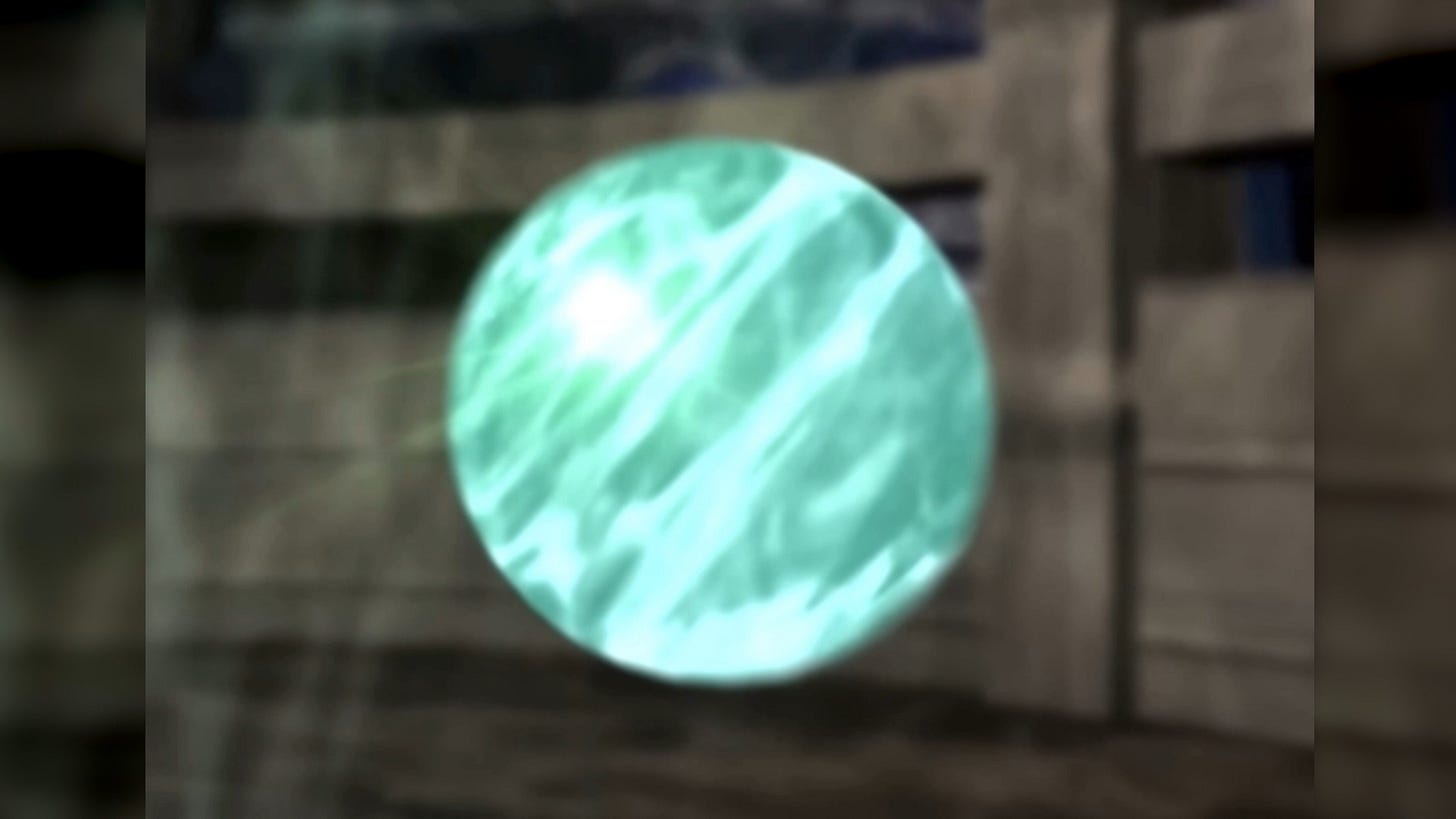
Tifa, the one and only key to unlocking Cloud’s real past and with it locking the door for Sephiroth.
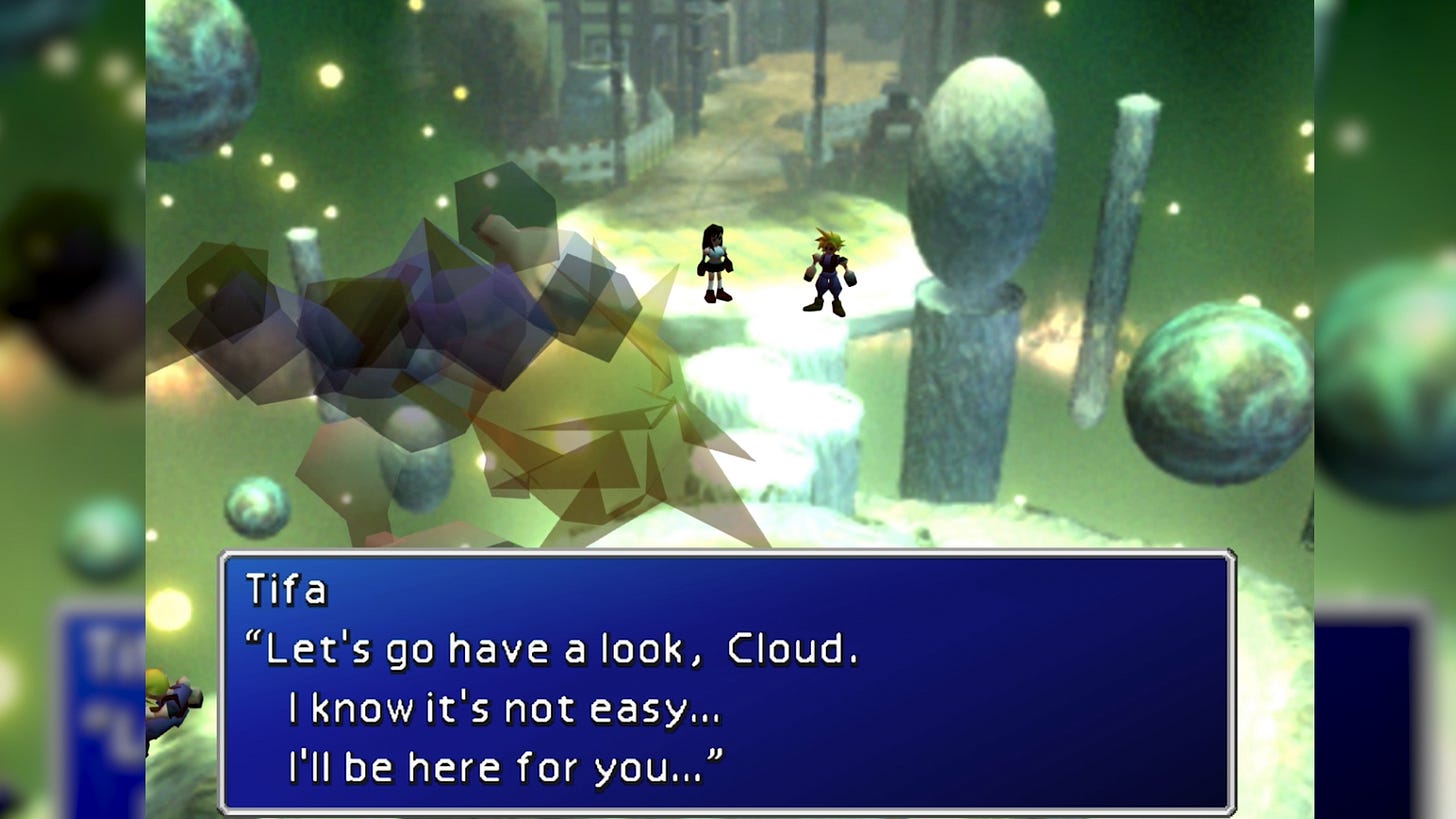
Thanks to the planet’s intervention, the original chain of events in Midgar and thus everyone’s destiny and the original framework remain intact, which provides a very similar starting point for the unknown future.
Cloud and friends still pursue Sephiroth.
Cloud is still prone to manipulations and Sephiroth’s takeover until he regains his true identity.
Sephiroth still needs to get a hold of the Black Materia and have Cloud be the one to deliver it.
To break Cloud and bring him over to his side, Sephiroth still needs to separate him from his friends and make Cloud believe that the only way to defy their destiny is to join him, Sephiroth.
Otherwise, it will be Cloud who defeats him, yet again. Their confrontation at the Edge of Creation showed him that Cloud is not ready yet. He’s still too conscious and attached to his friends.
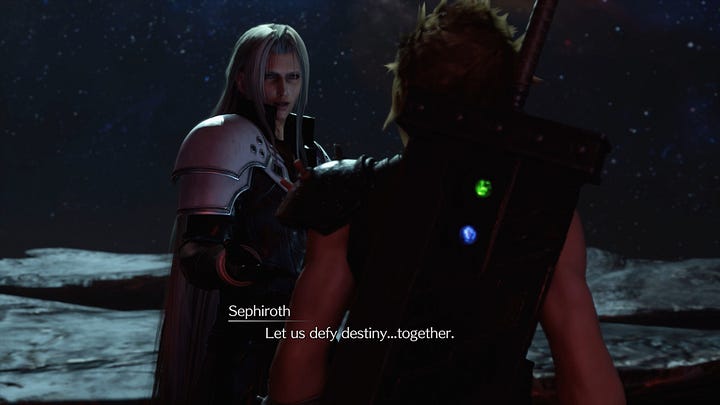
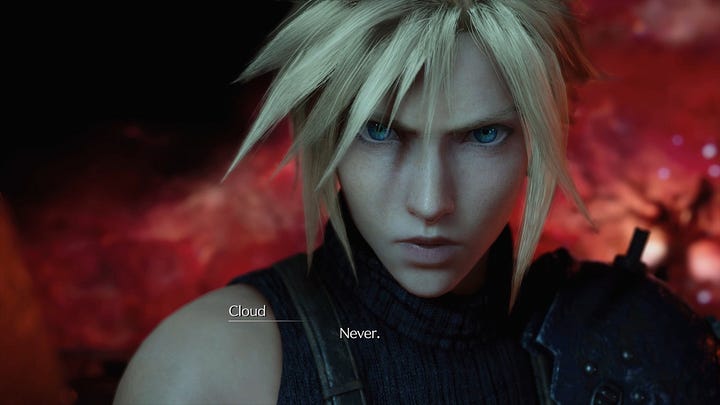
Aerith still needs to summon Holy to counteract Sephiroth’s actions, a preventative measure before he manages to summon Meteor. This in turn forces Sephiroth to step in and get rid of her. However, in order to stoke the flames of hatred, especially in Cloud, and to keep their pursuit going to make Cloud deliver the Black Materia to him as described before, he has to wait until the others arrive. Unless he finds a way to make them arrive before Aerith can summon Holy, she’ll have already done so by the time the party arrives, keeping the original story intact.
Additionally, if Sephiroth then tries to suppress the effects of Holy, which is crucial to not endanger his plan, Aerith has to join the Lifestream to ask the planet to help Holy repel Meteor, basically sealing her fate.
Lastly, Sephiroth still needs to summon Meteor to cause a wound big enough to absorb the Lifestream and eventually travel the cosmos. And then there’s the game’s logo, which still contains Meteor.
However, for the whole Final Fantasy VII Compilation to finally reach an end, there needs to be more to Sephiroth’s plans and his endgame, which is what we’re going to cover in the next and last part of this analysis.
This concludes the fifth and penultimate article covering Sephiroth’s Endgame.
Due to the sheer amount of content, I decided to split it into 6 parts. Not only for the first video releases of this analysis back then (10 videos) but also for their transcripts here, even though I linked the full video up top. The table of contents will also encompass all 6 articles eventually and be present in all of them for easy navigation, all the while keeping the article length and footnotes at a manageable size.
Visualizations for simple recollections for reference:
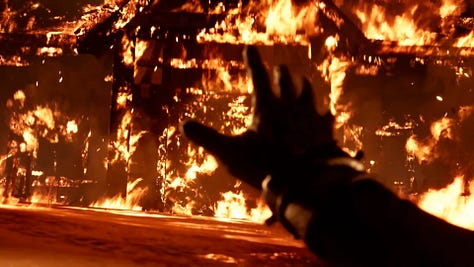
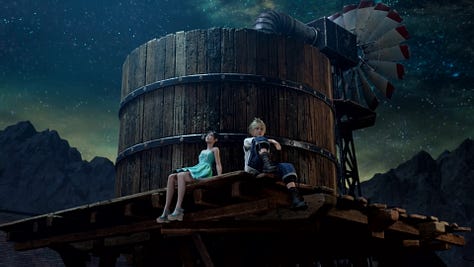
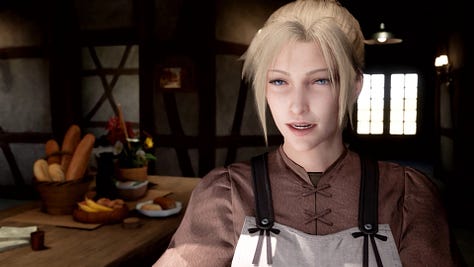
For more information, feel free to read the Memory transfer chapter of Game Analysis #24 about Aerith’s Secret.
Additionally, those three visions happen after the complete defeat of Whispers Rubrum, Viridi, and Croceo respectively.
His name was never mentioned anywhere until the Final Fantasy VII Remake Ultimania (page 57) and the light novel Traces of Two Pasts (page 6) amended this oversight.
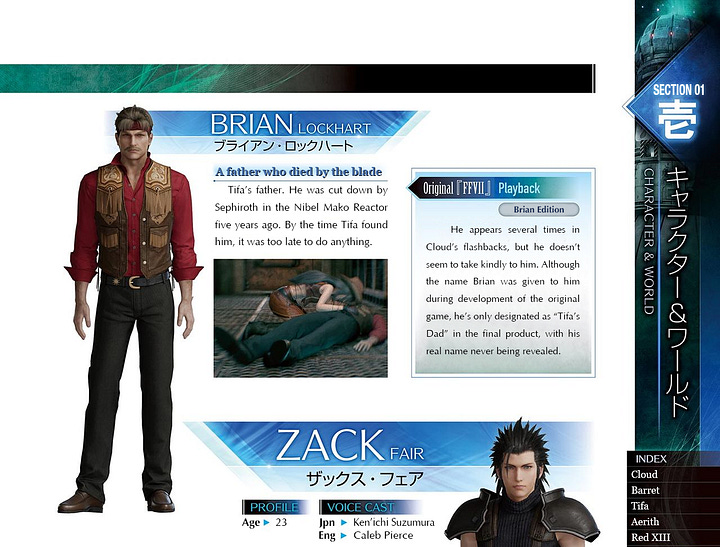
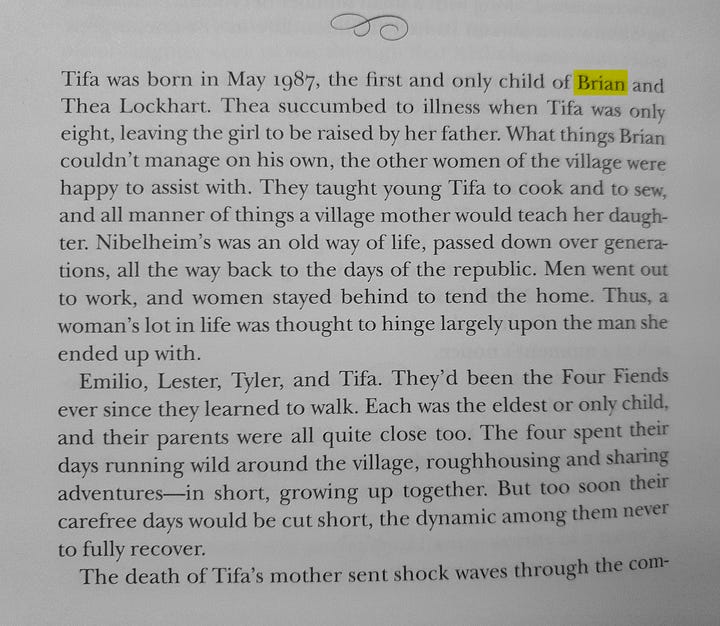
For a partial and unofficial English translation of the Ultimania book, please check out the Shinra Archeology Department’s phenomenal “scanlation,” which the left image above is taken from.
Final Fantasy VII Rebirth adds a new suppressed memory scene with Zack and Cloud in Nibelheim’s Nidhogg Inn. In it, Zack does talk about his girlfriend after teasing Cloud about visiting one here in his hometown. Zack mentions that “she’s real pretty,” “great to be around,” and a “real city mouse.” However, this information does not provide anything to go on, which is why Cloud wouldn’t recognize Aerith as Zack’s girlfriend anyway, unless explicitly told. Which does happen, though Cloud’s memory suppression mechanism kicks in that prevents his true memory from Nibelheim to surface.
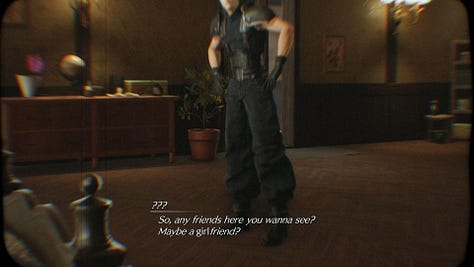
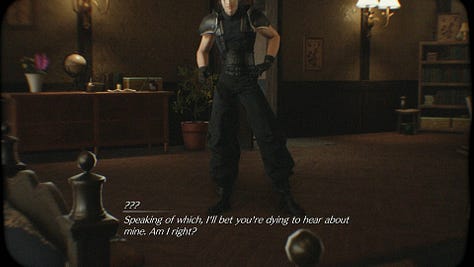
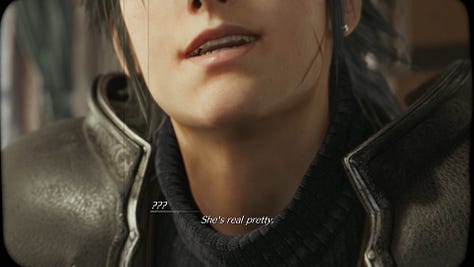
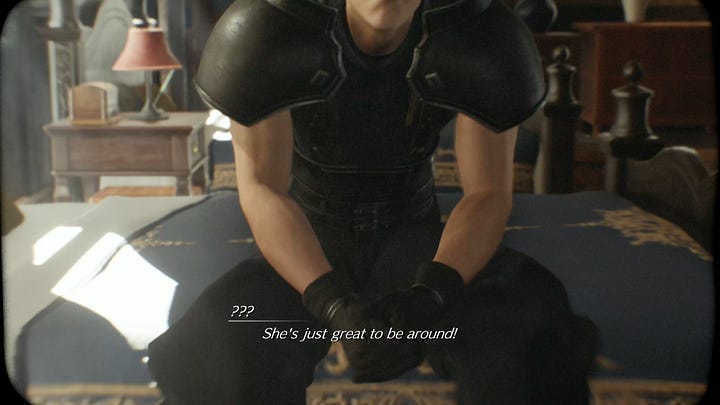
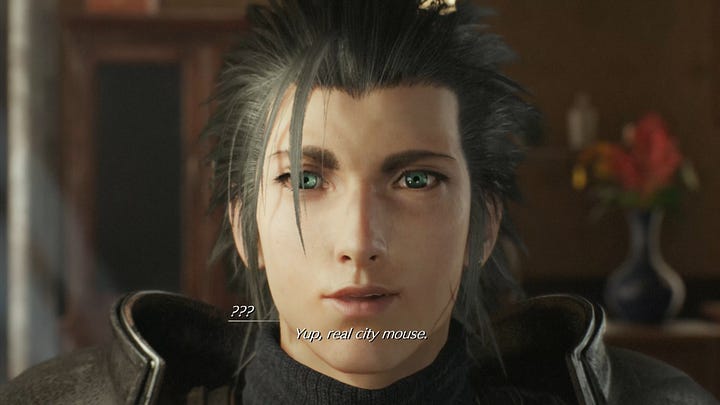
As an alternative, @istanleyff7 posted a well-done translation on Twixter.
Because that would most likely screw over some colorblind players.
Yellow and purple are also complementary/opposites on the color wheel and usually used to signify good and evil in visual media.
Here are a few more examples of purple particles from enemy attacks and auras:
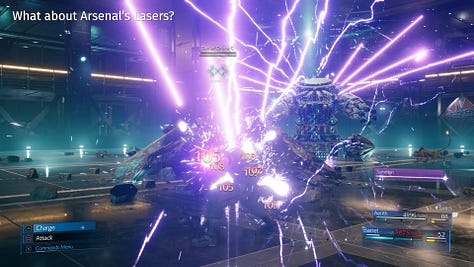
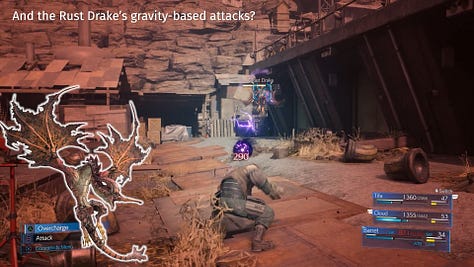
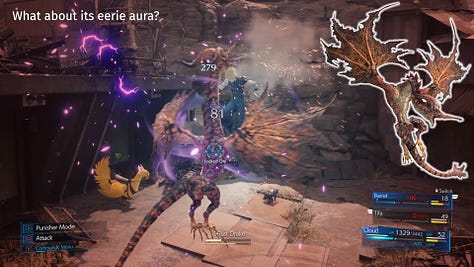
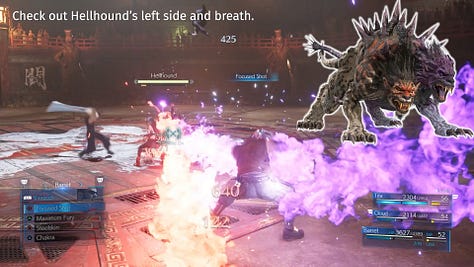
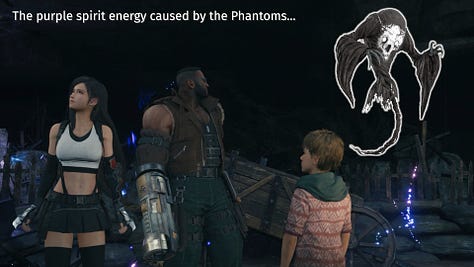
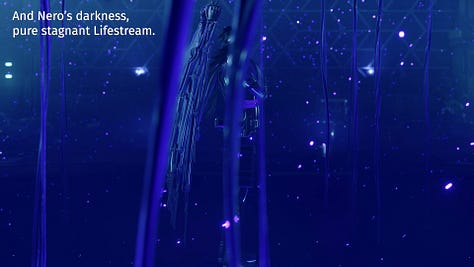
This is referred to a phenomenon called “Hysterical Strength“ which allows a human to vastly overstep usual limitations when being themselves or seeing somebody dear to them in mortal danger.
This is even explained in the original game’s Limit Break tutorial in the Sector 7 slums’ Beginner’s Hall where Cloud teaches a girl how to stand up to a boy bully.
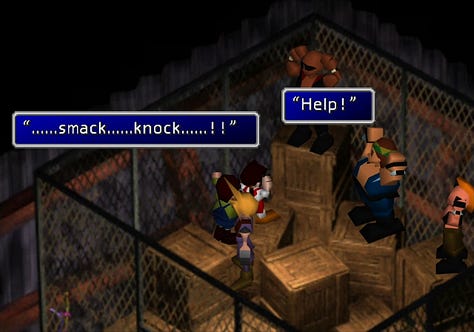
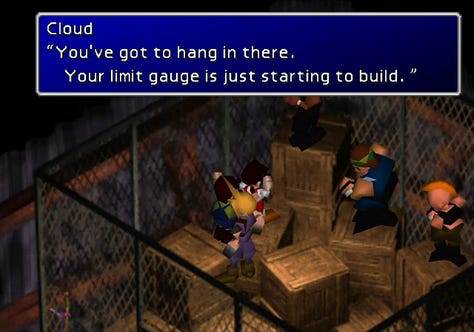
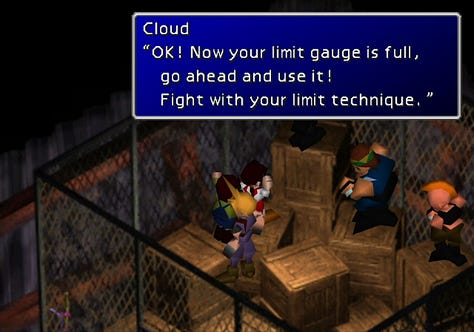
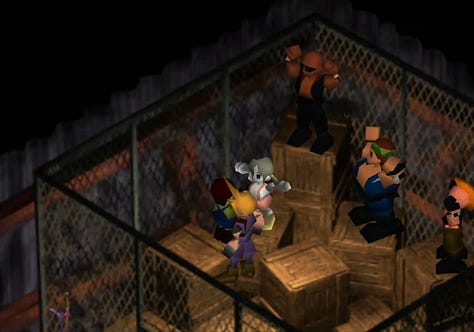
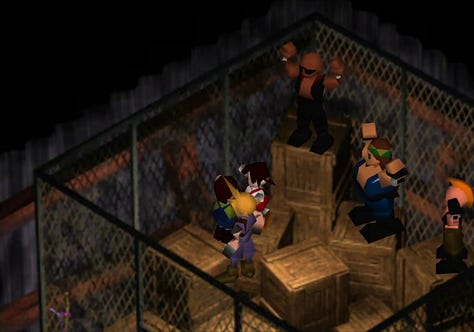
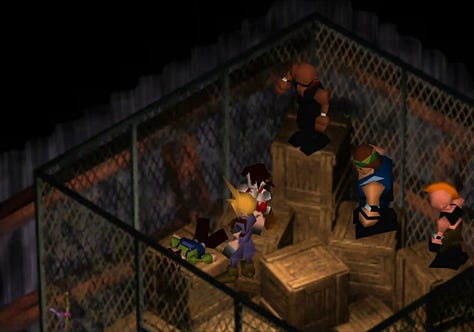



![Sephiroth's Endgame [4/6] - FFVII Remake Mysteries [3/4] | Game Analysis #26](https://substackcdn.com/image/fetch/$s_!ufzd!,w_1300,h_650,c_fill,f_auto,q_auto:good,fl_progressive:steep,g_auto/https%3A%2F%2Fsubstack-post-media.s3.amazonaws.com%2Fpublic%2Fimages%2F1f5102d2-e52f-4f61-9c6e-c1c20dedb1cc_3840x2160.png)
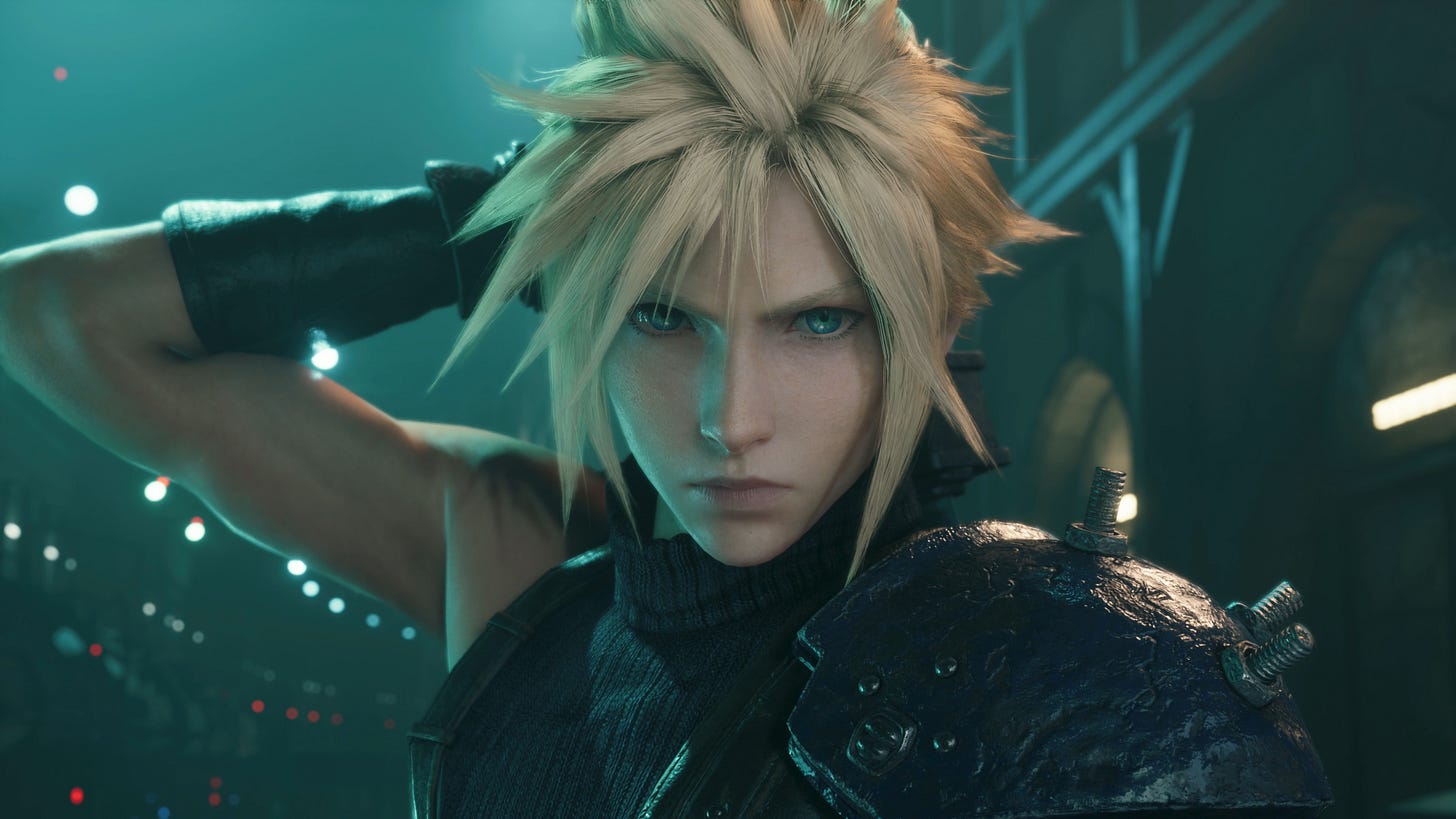
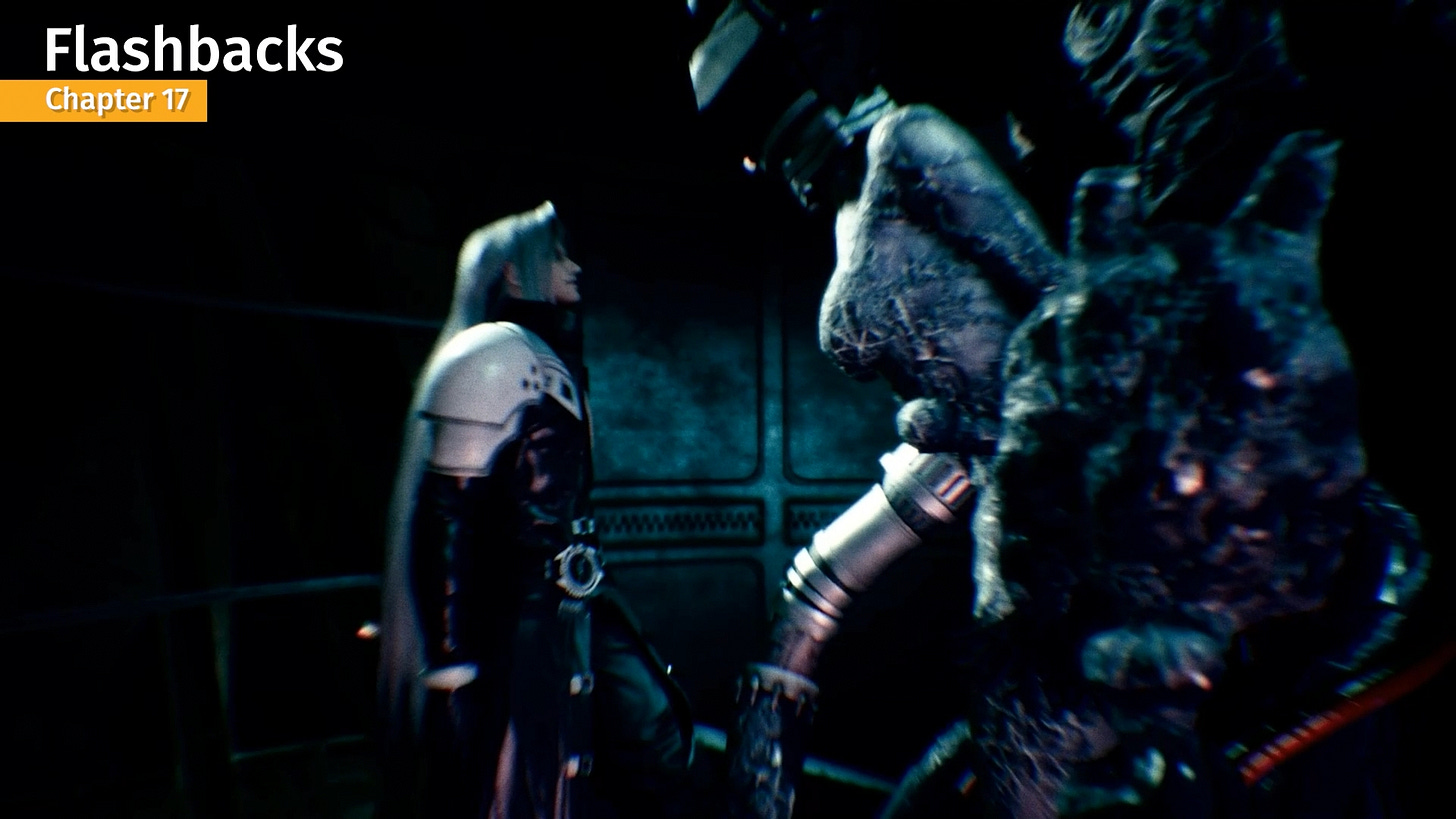
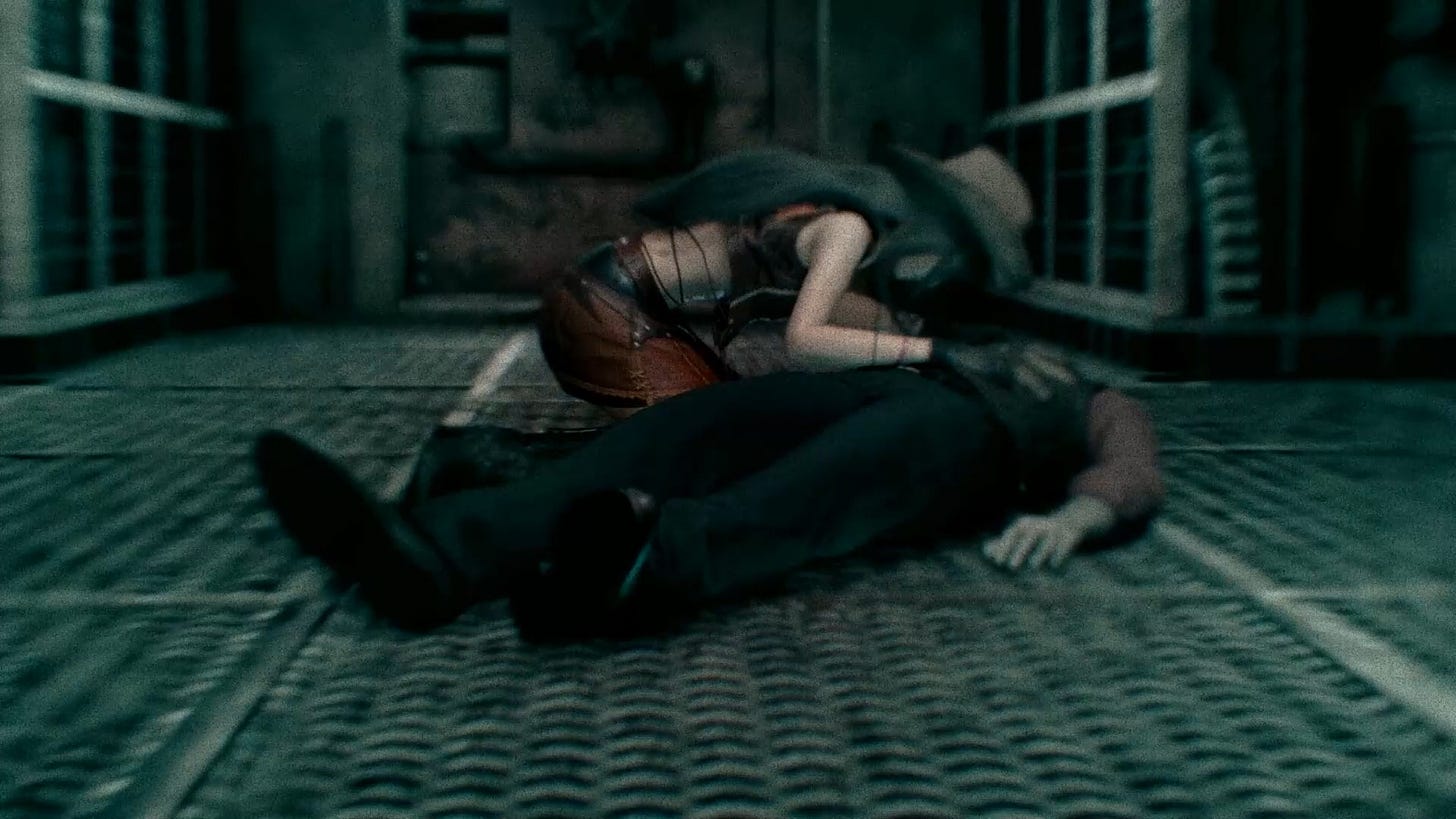
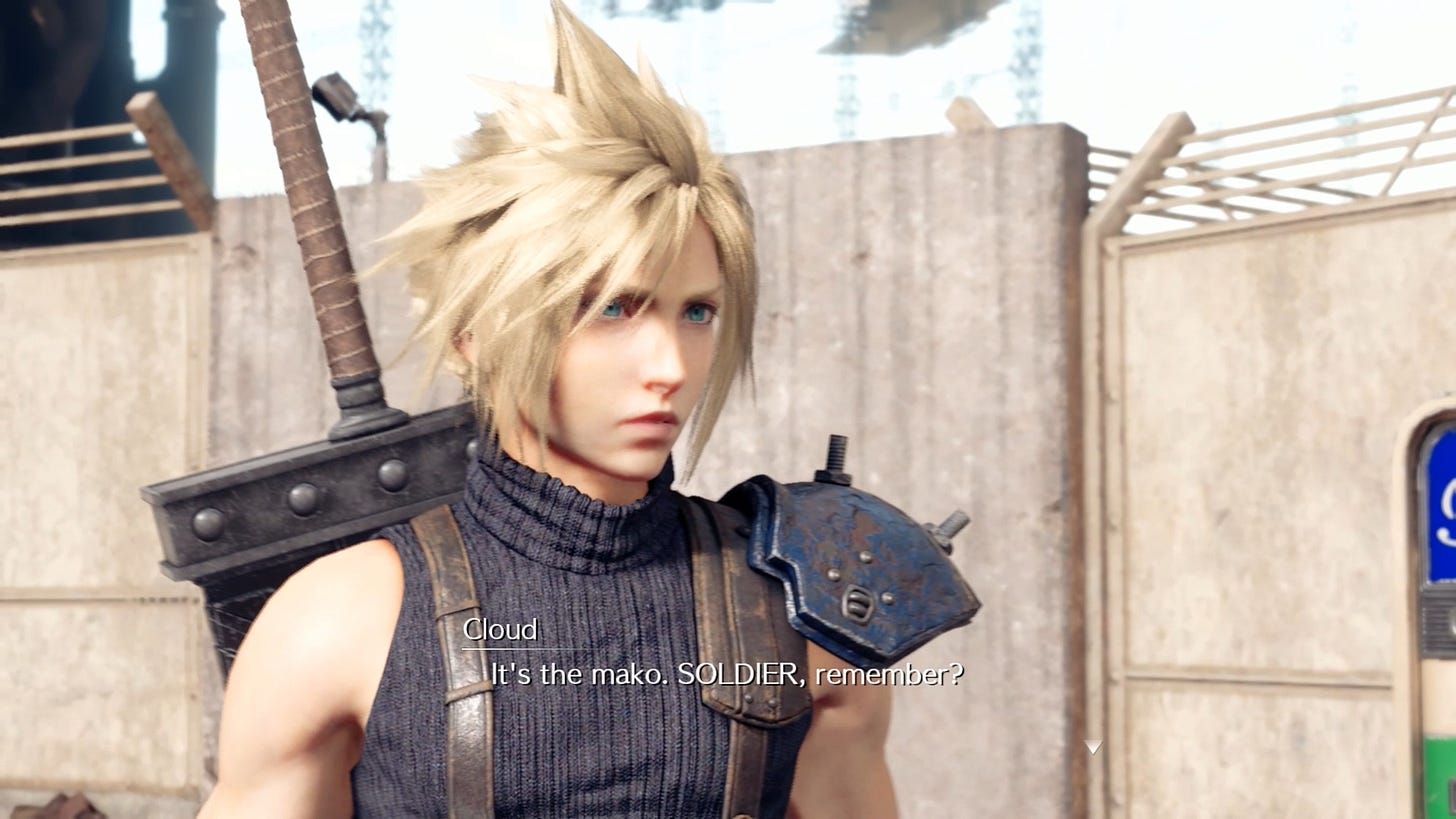
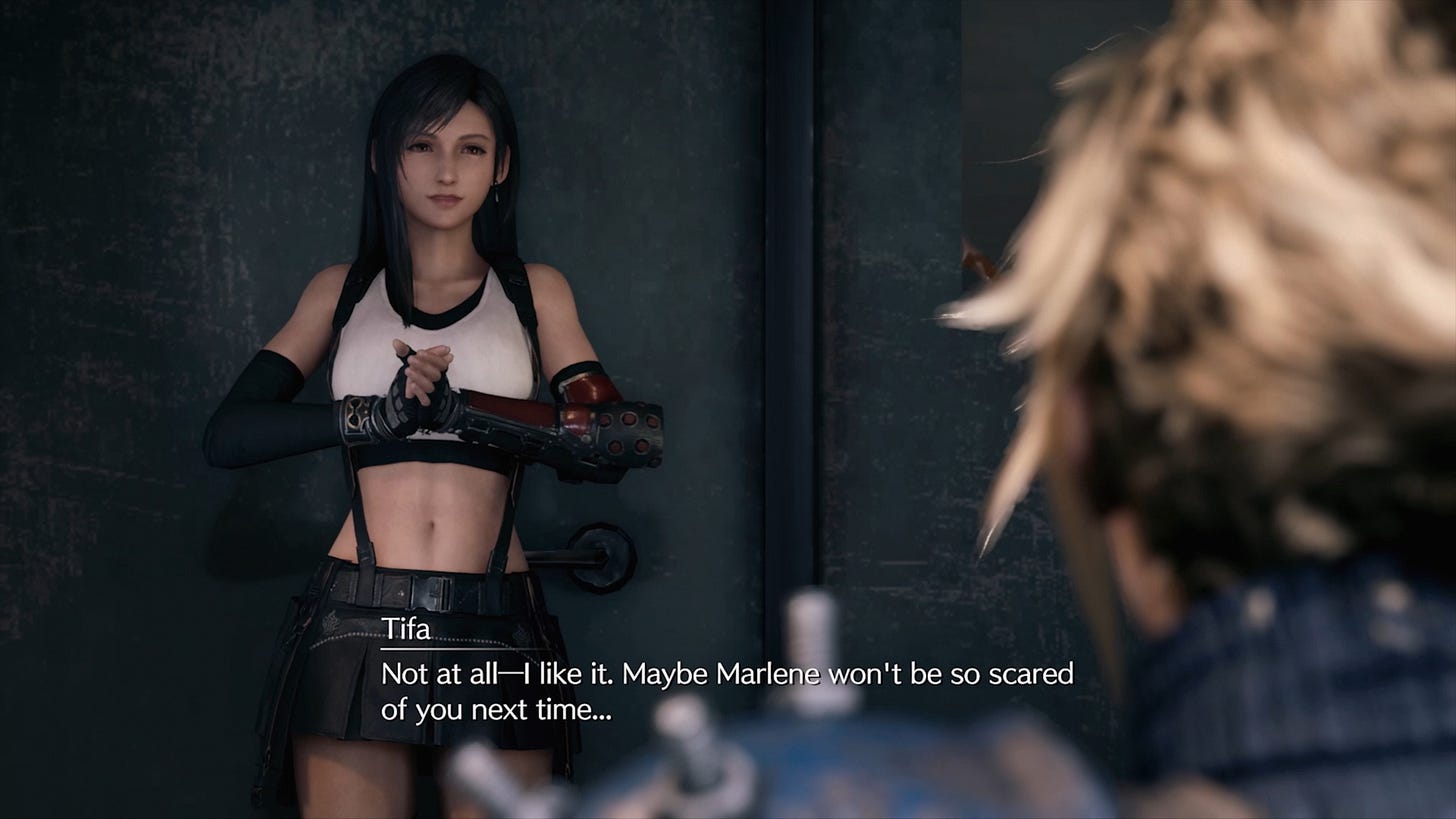
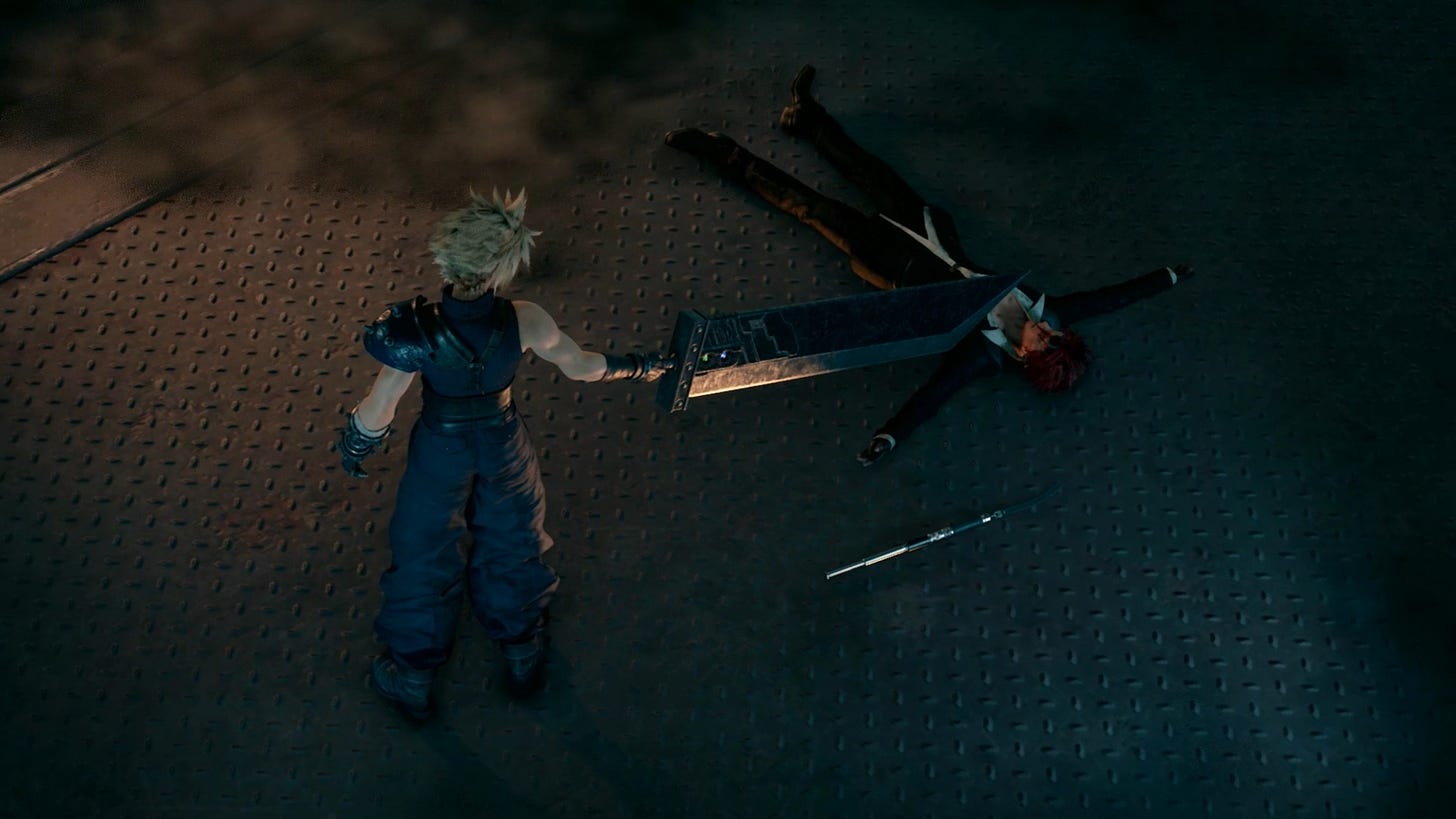
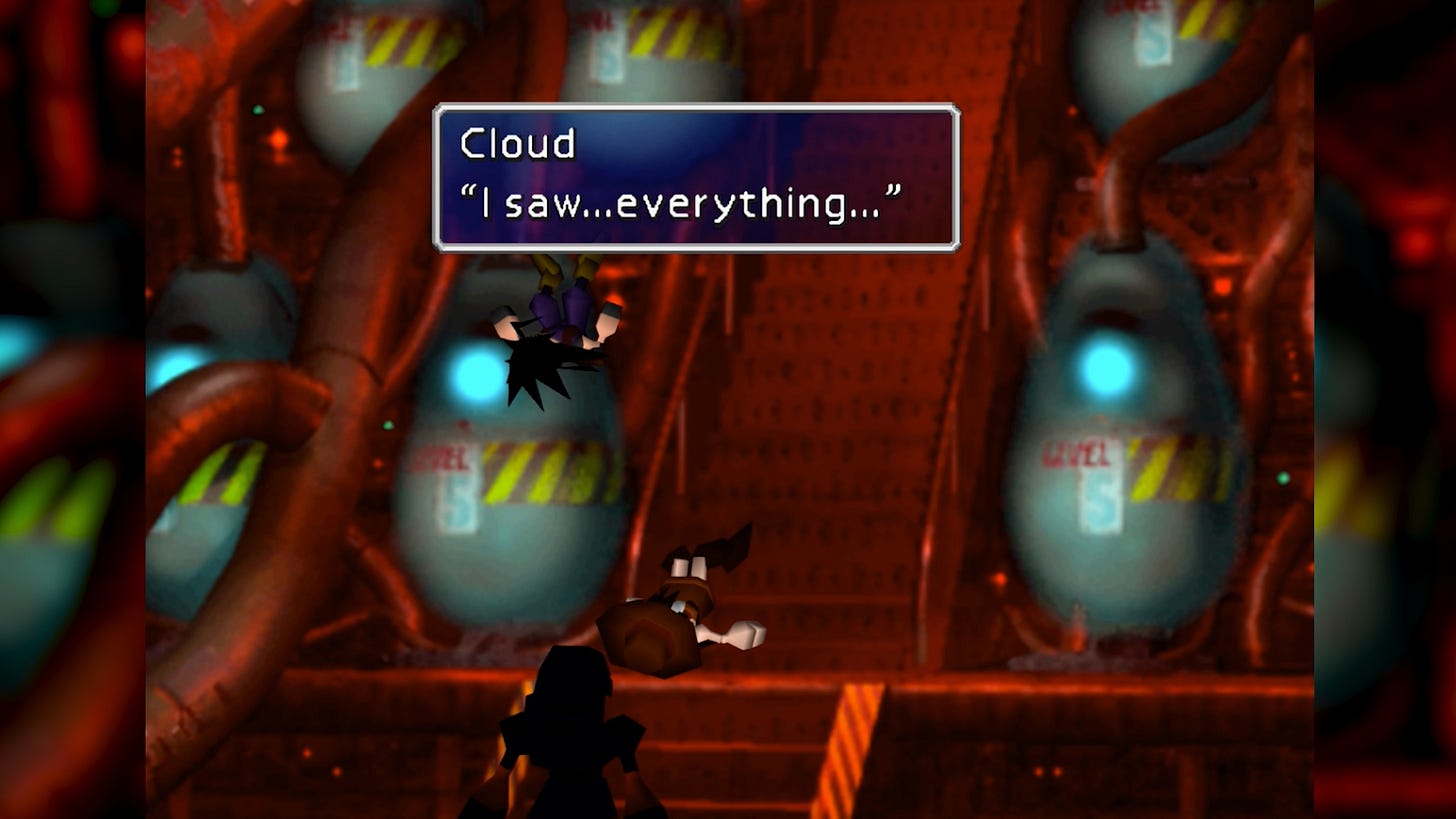
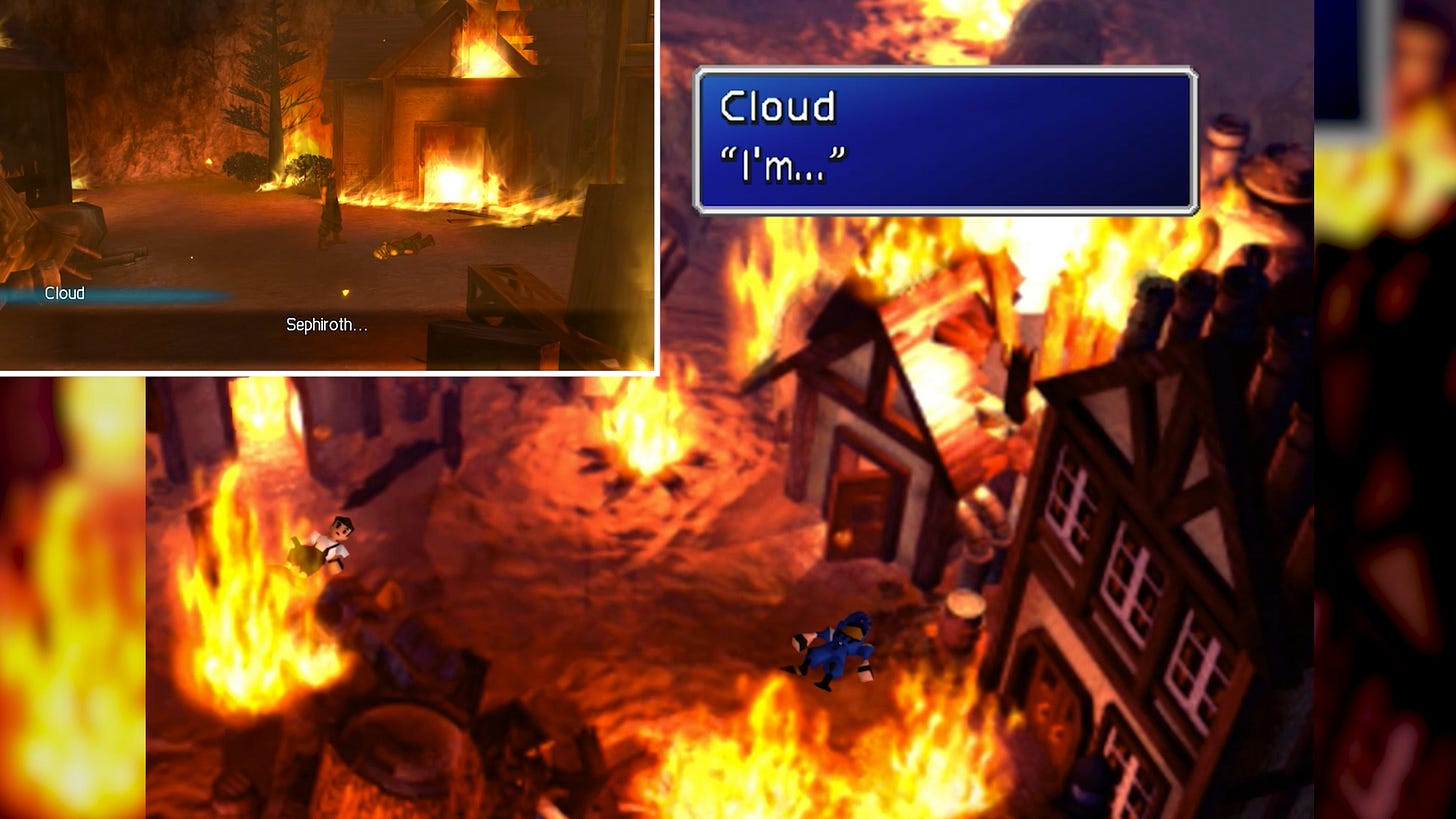
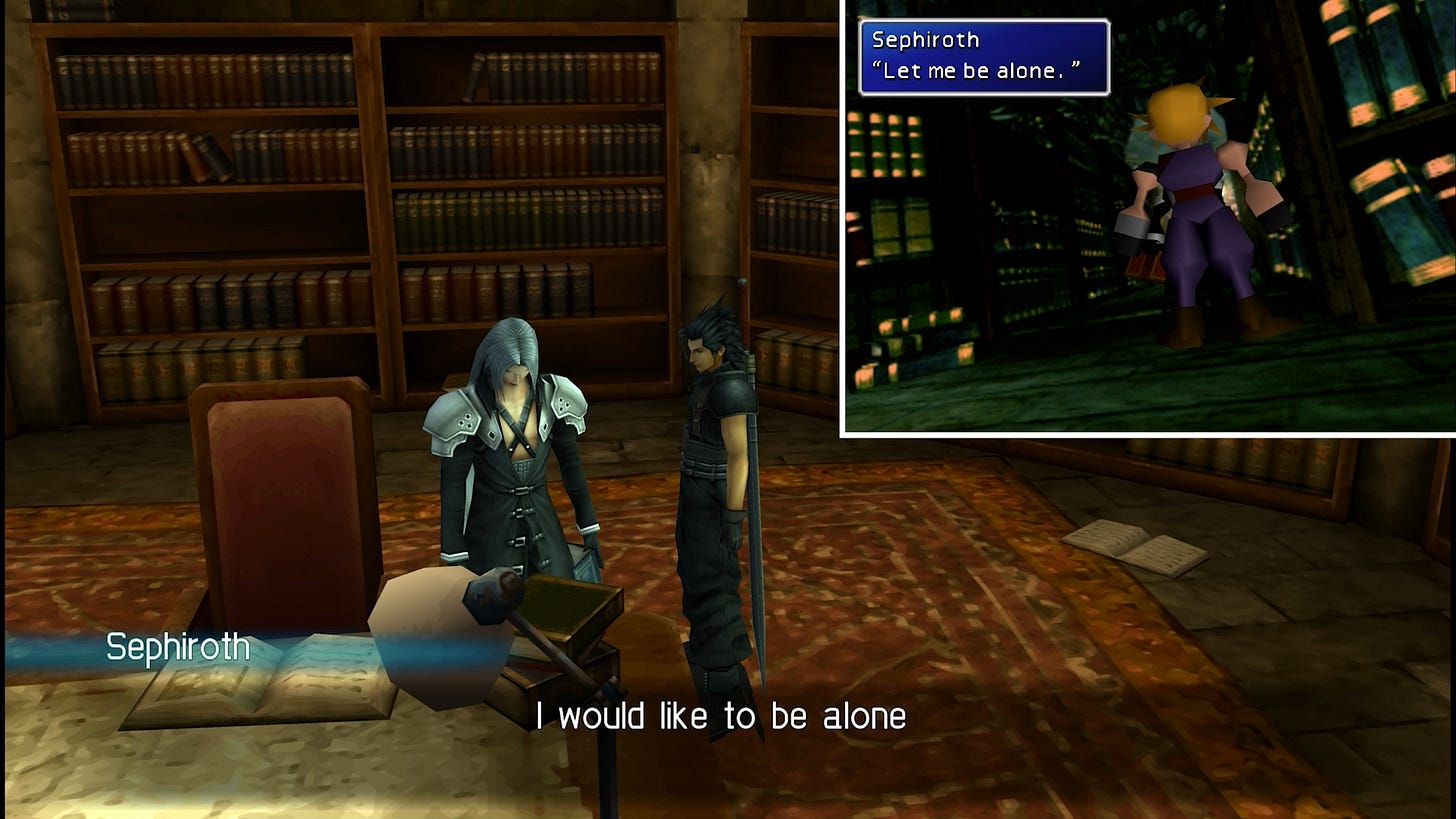
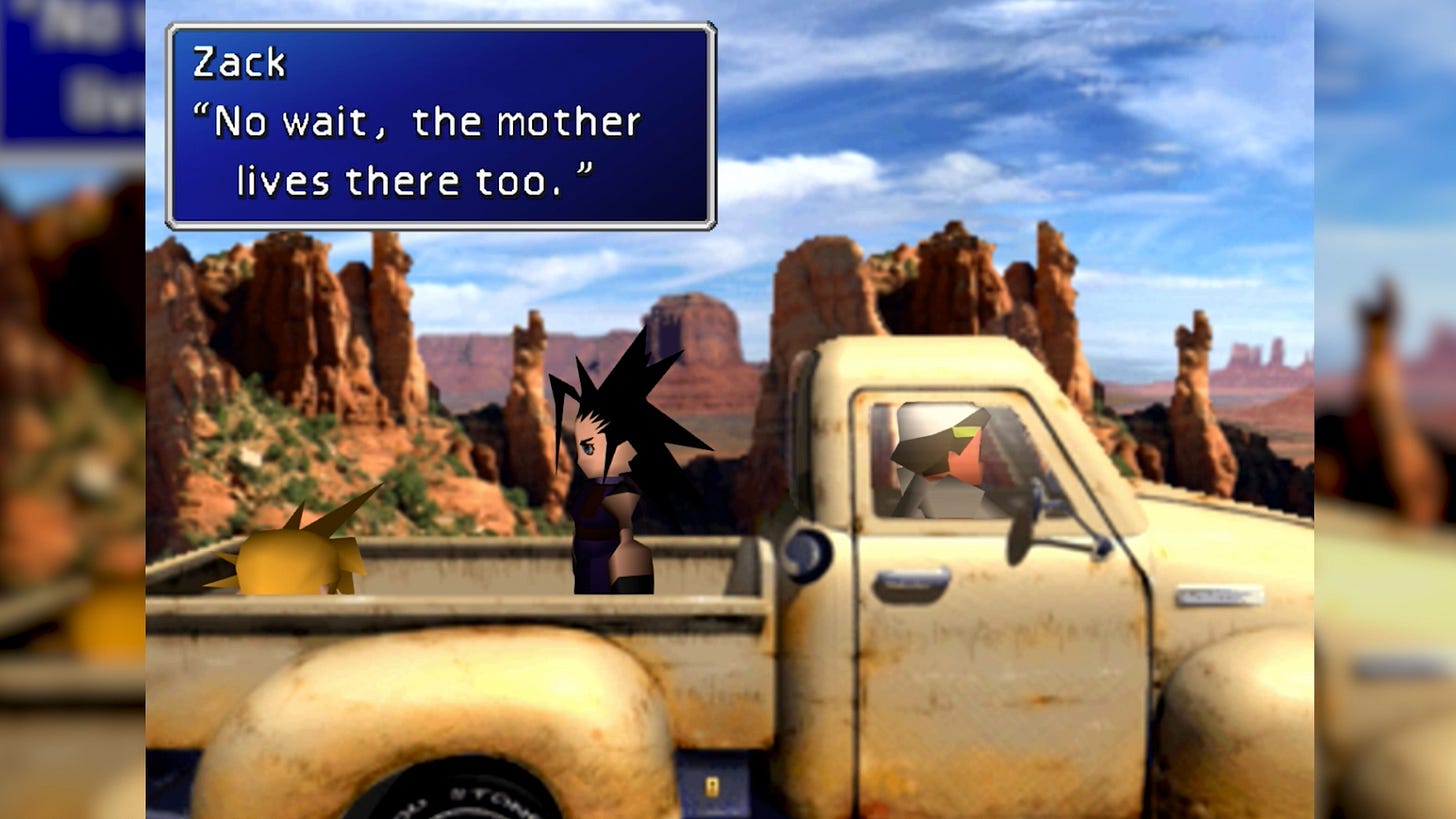
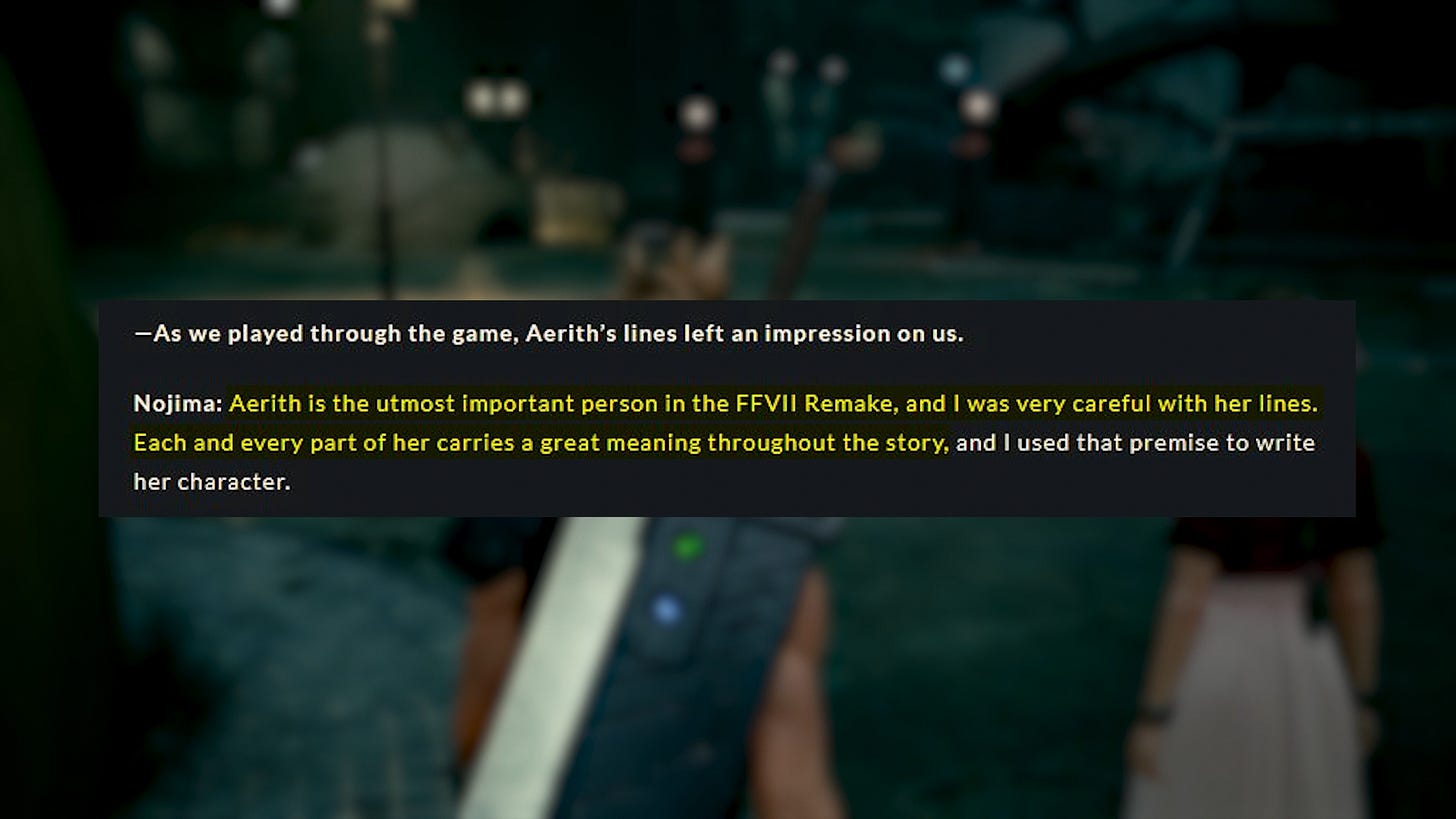
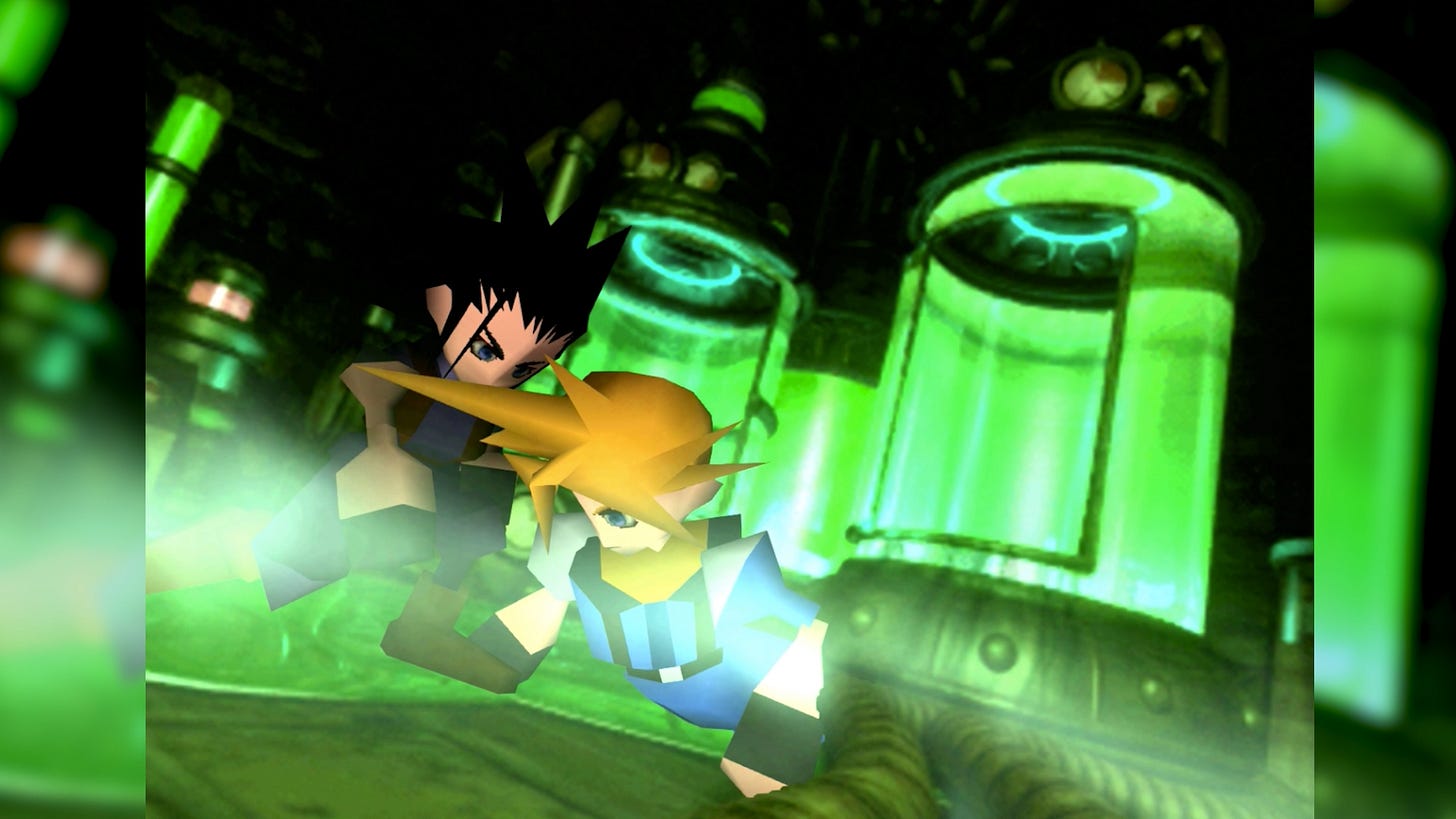
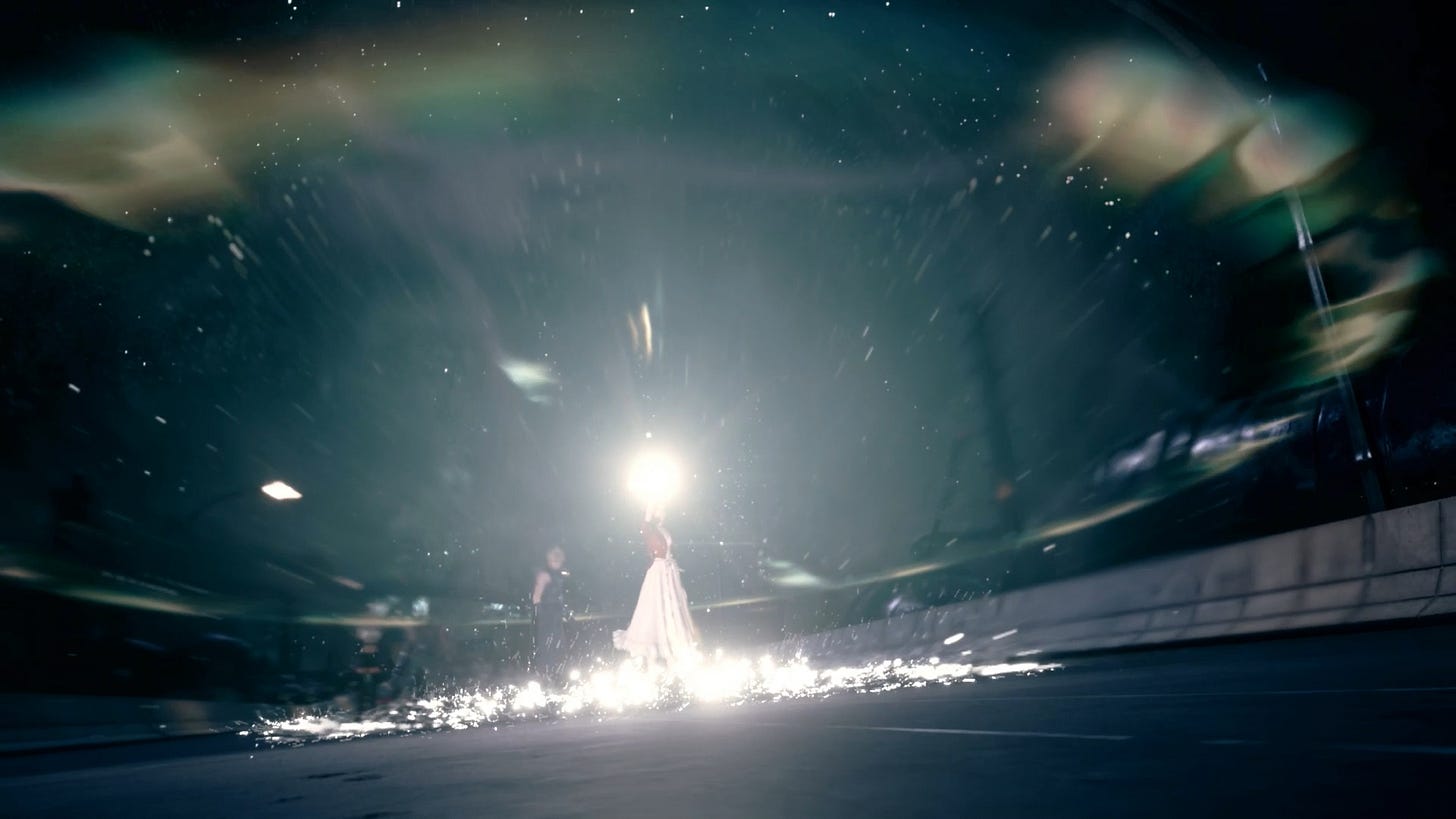
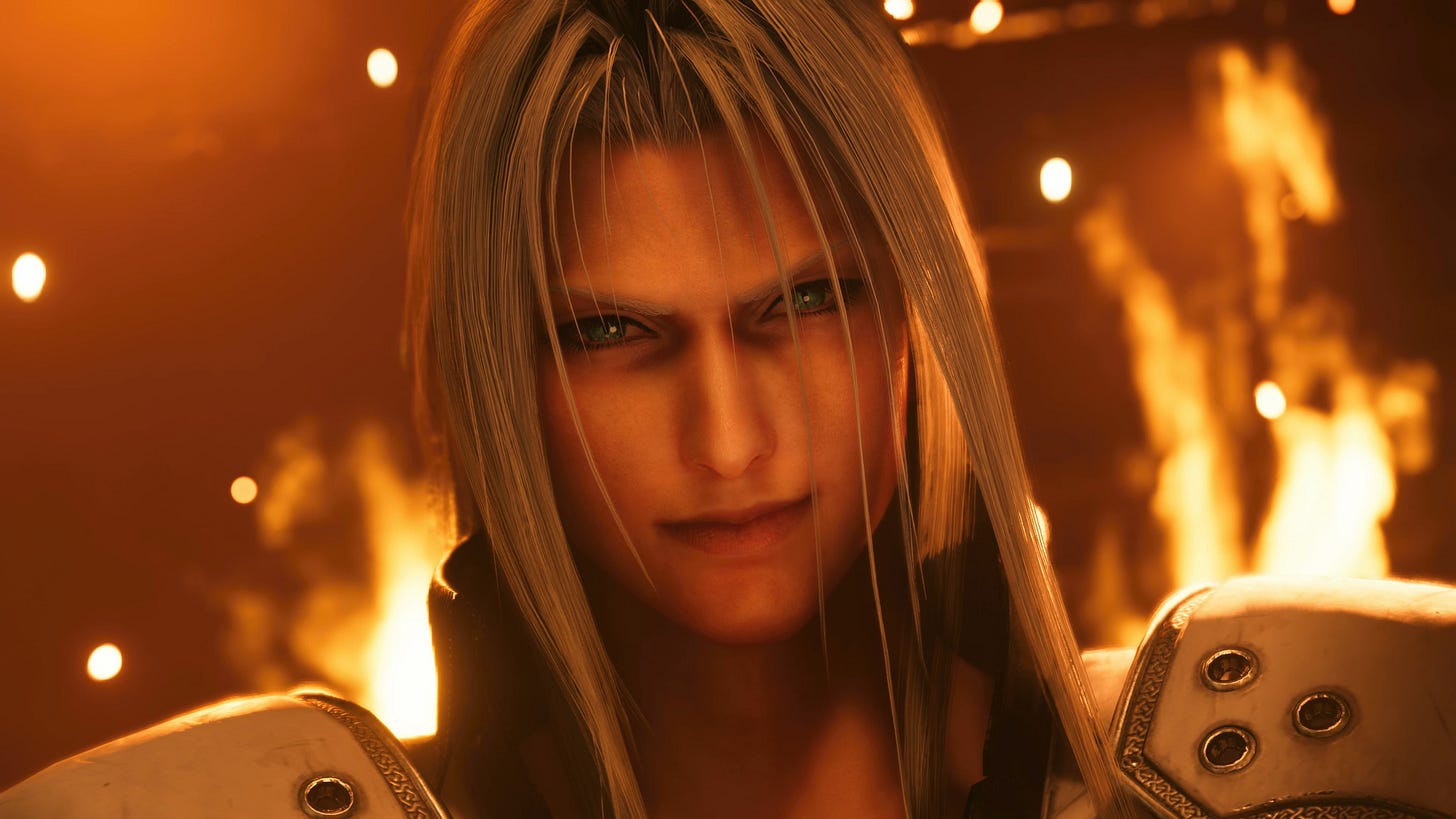
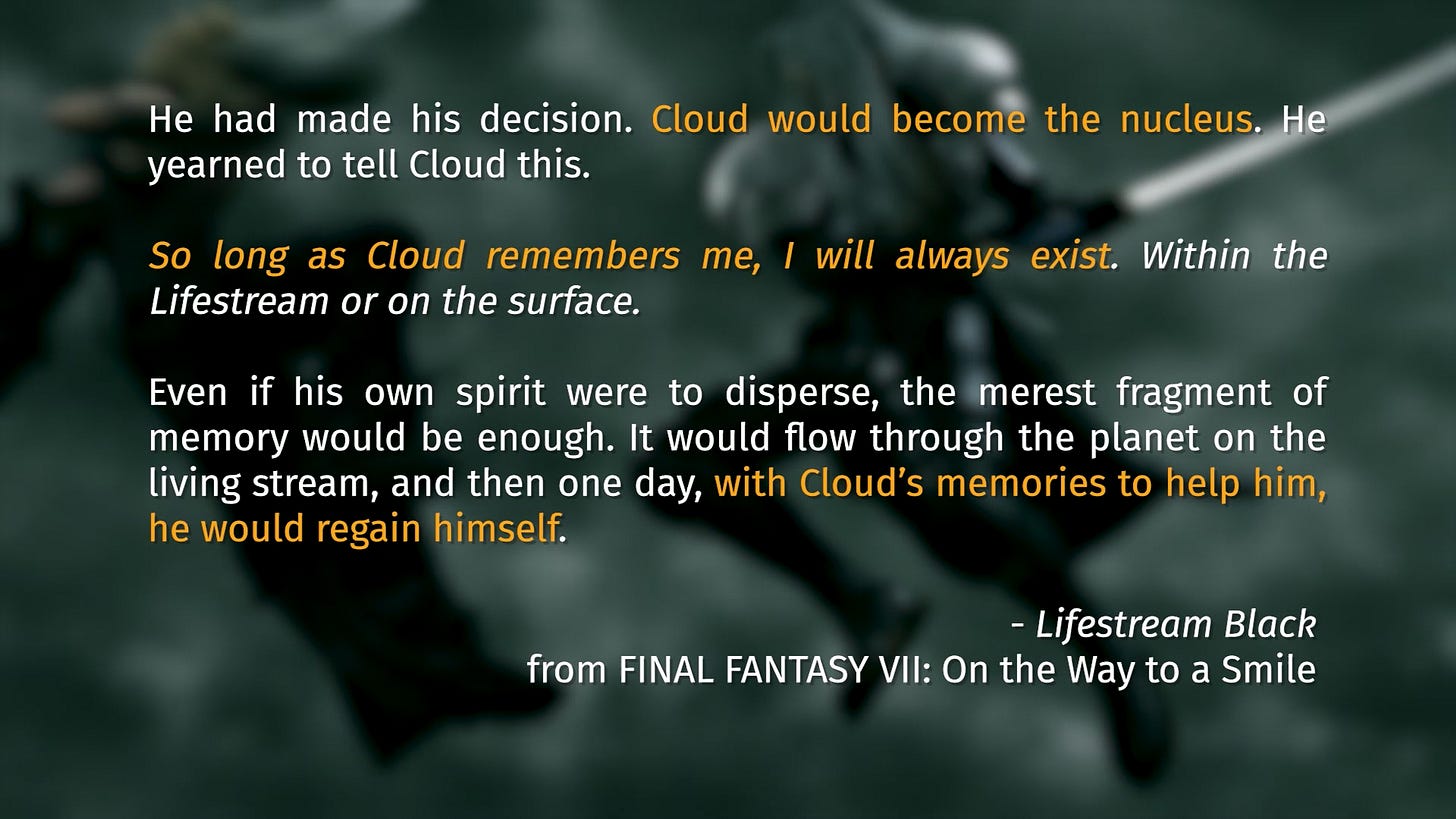
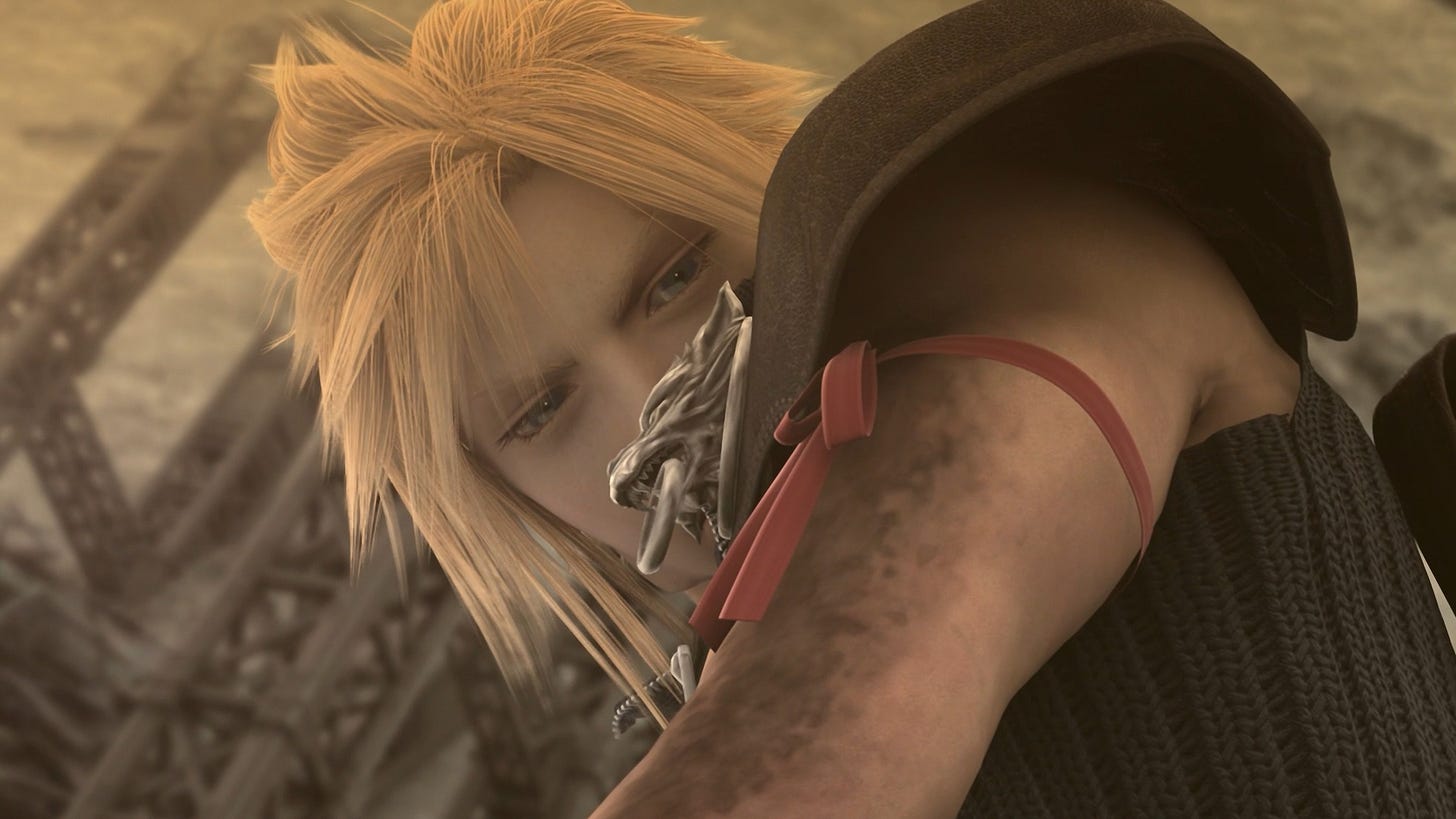

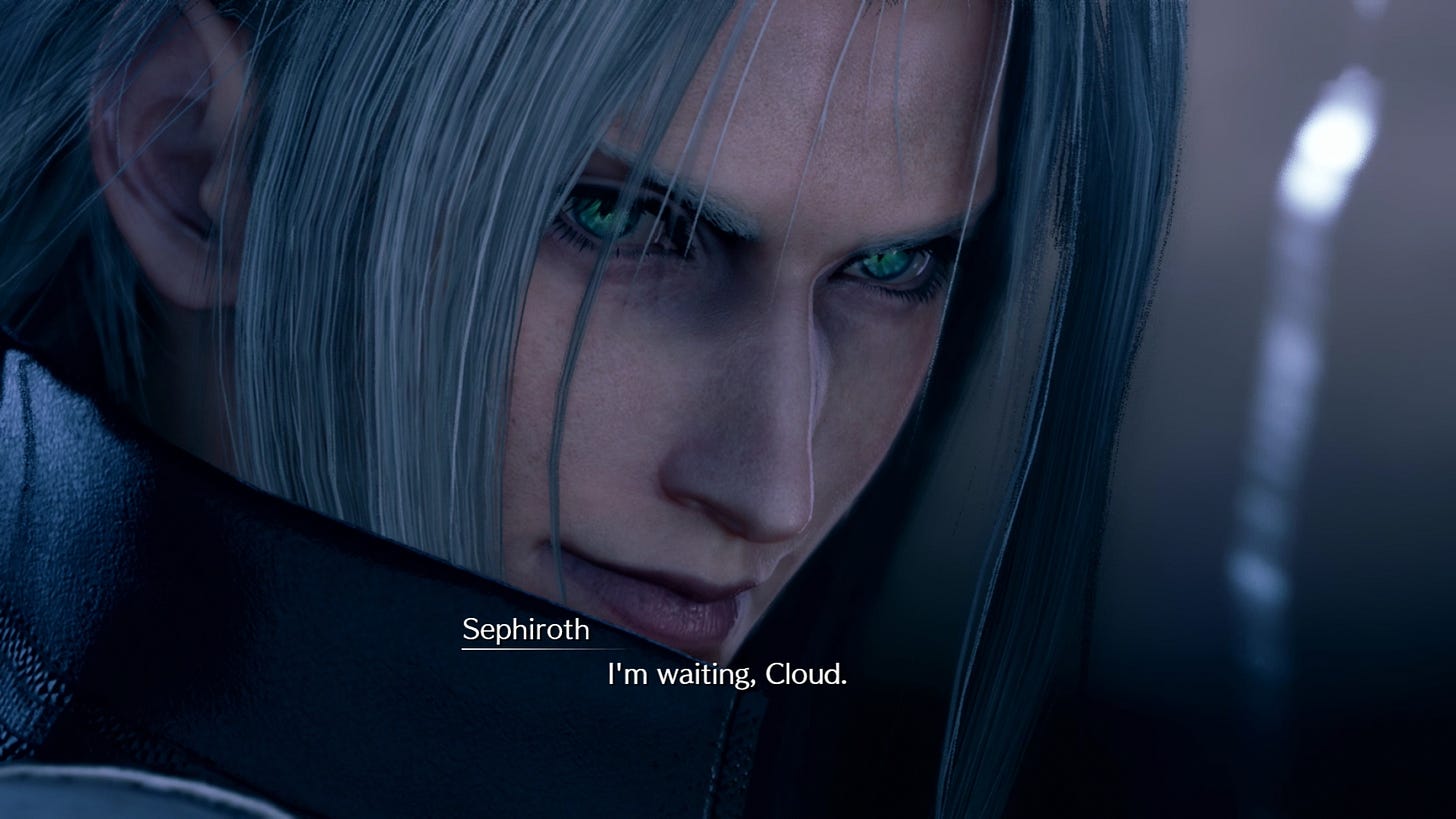
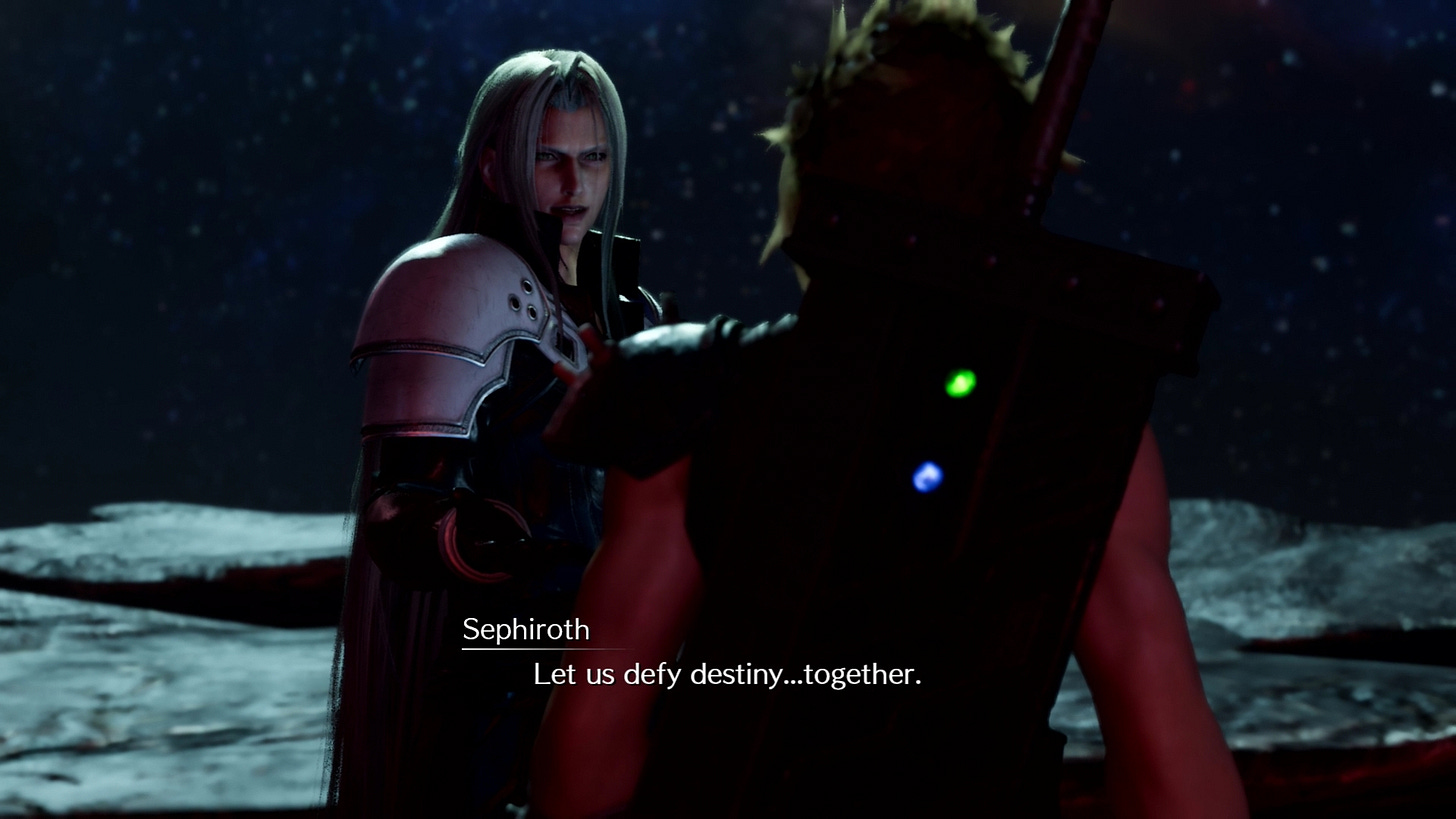
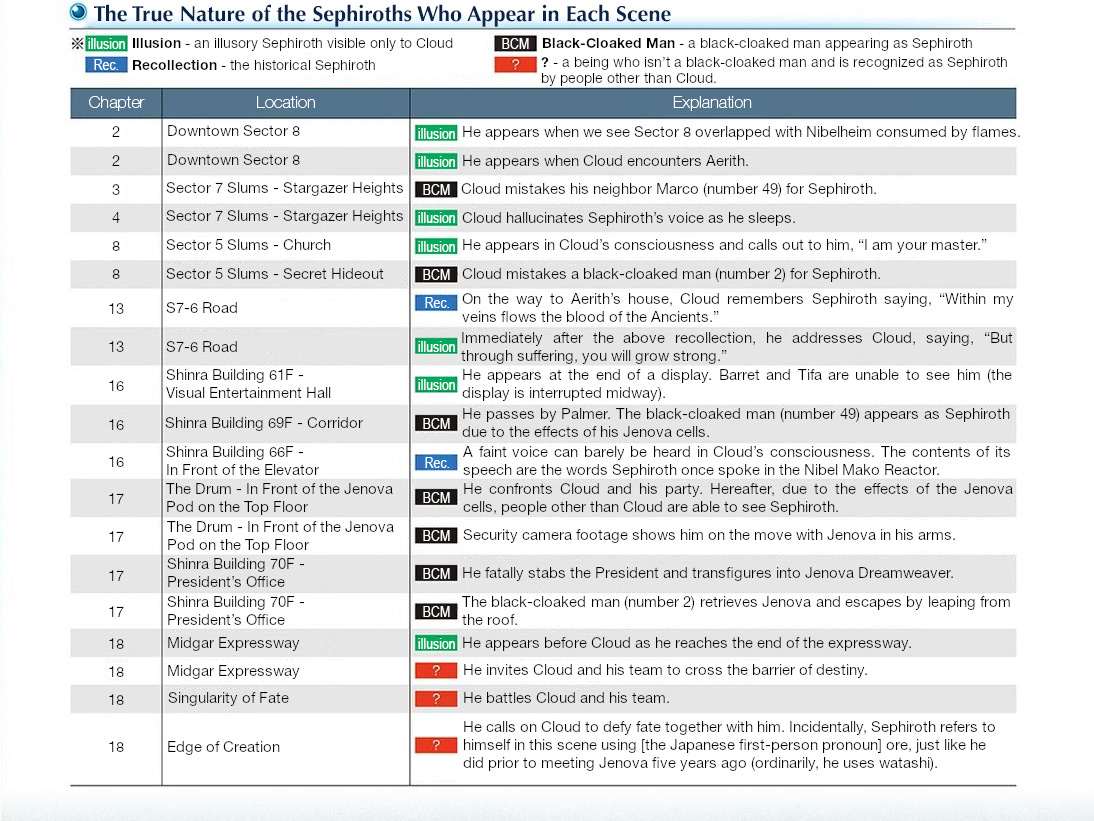
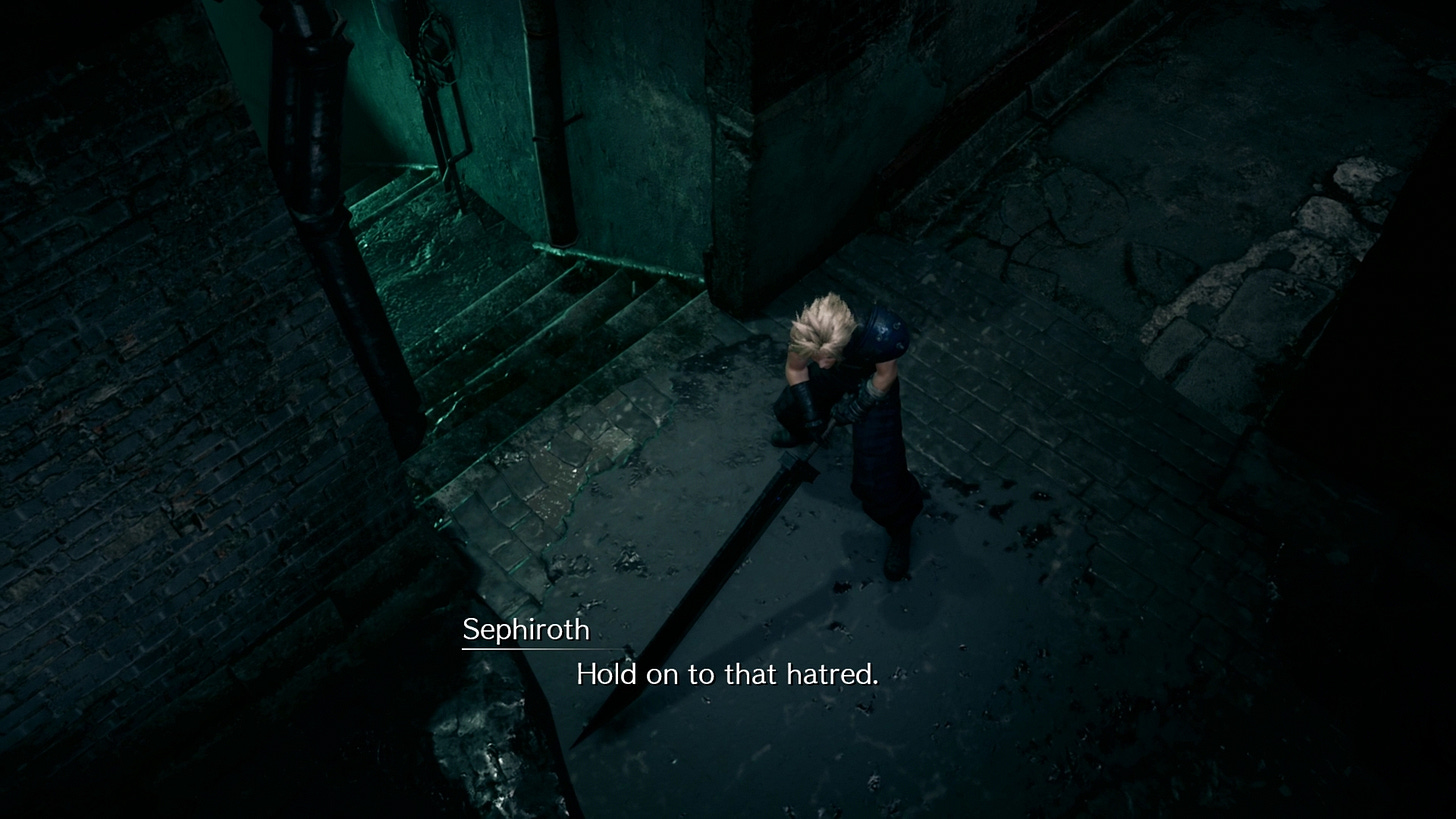
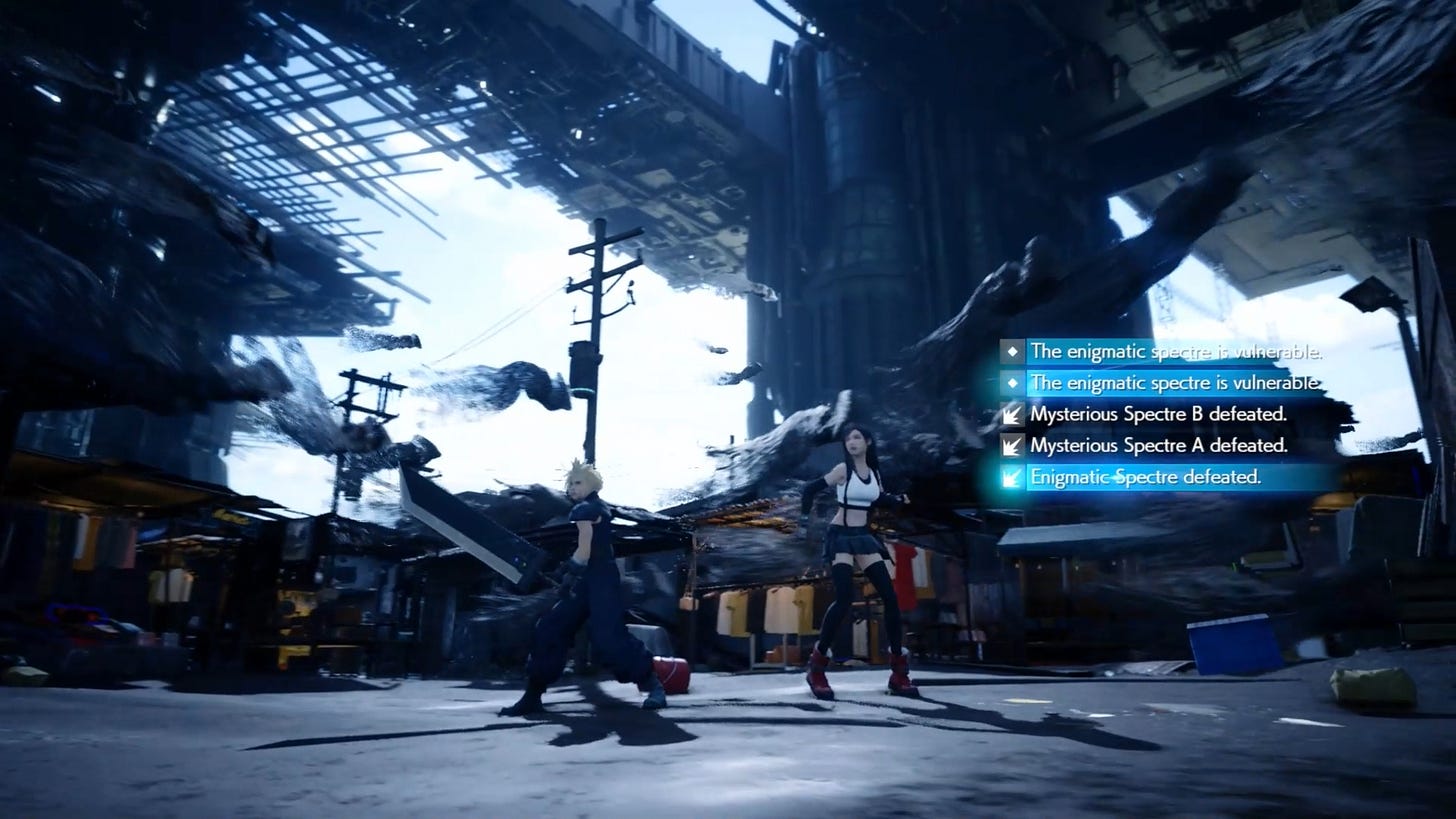
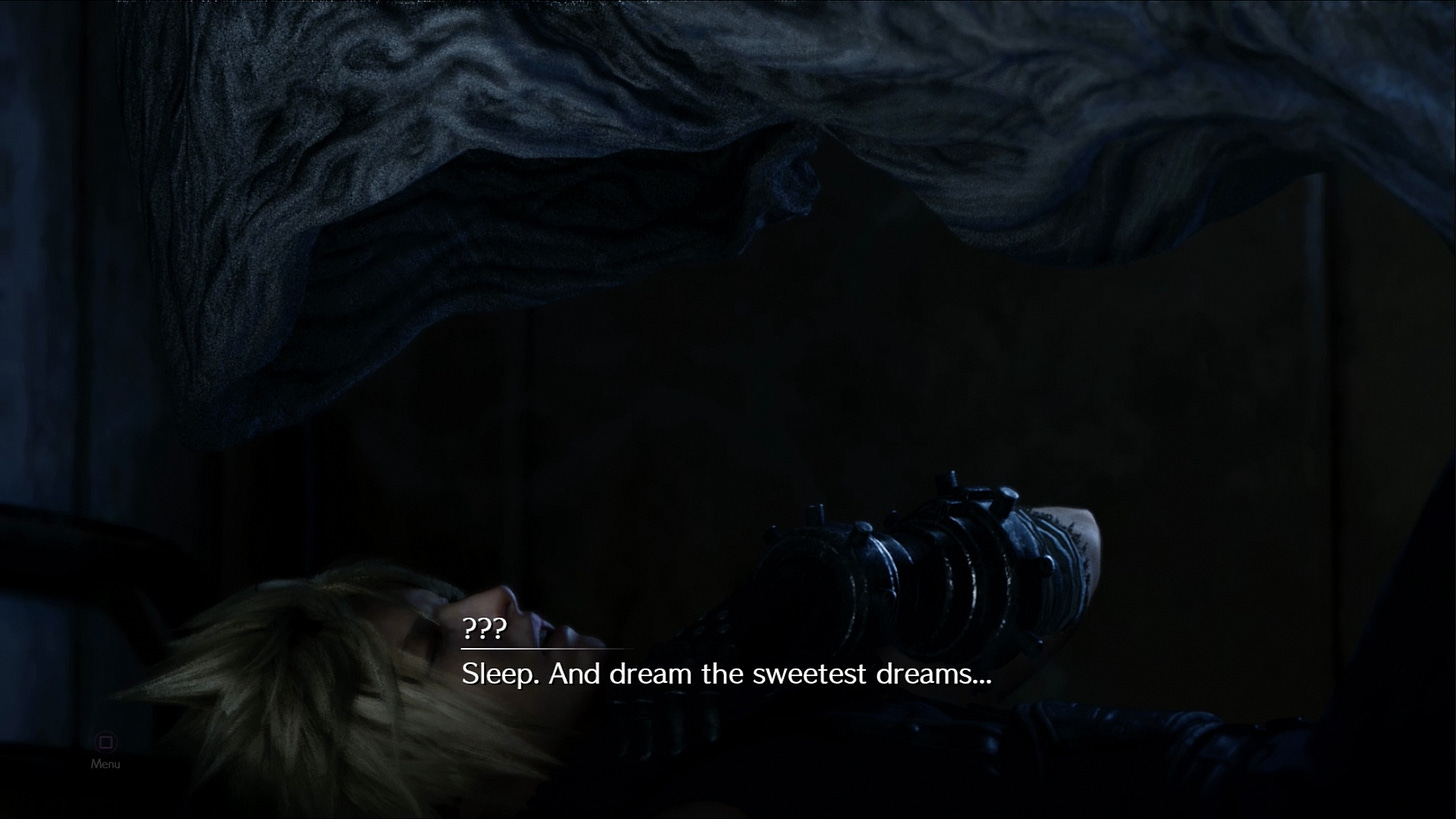
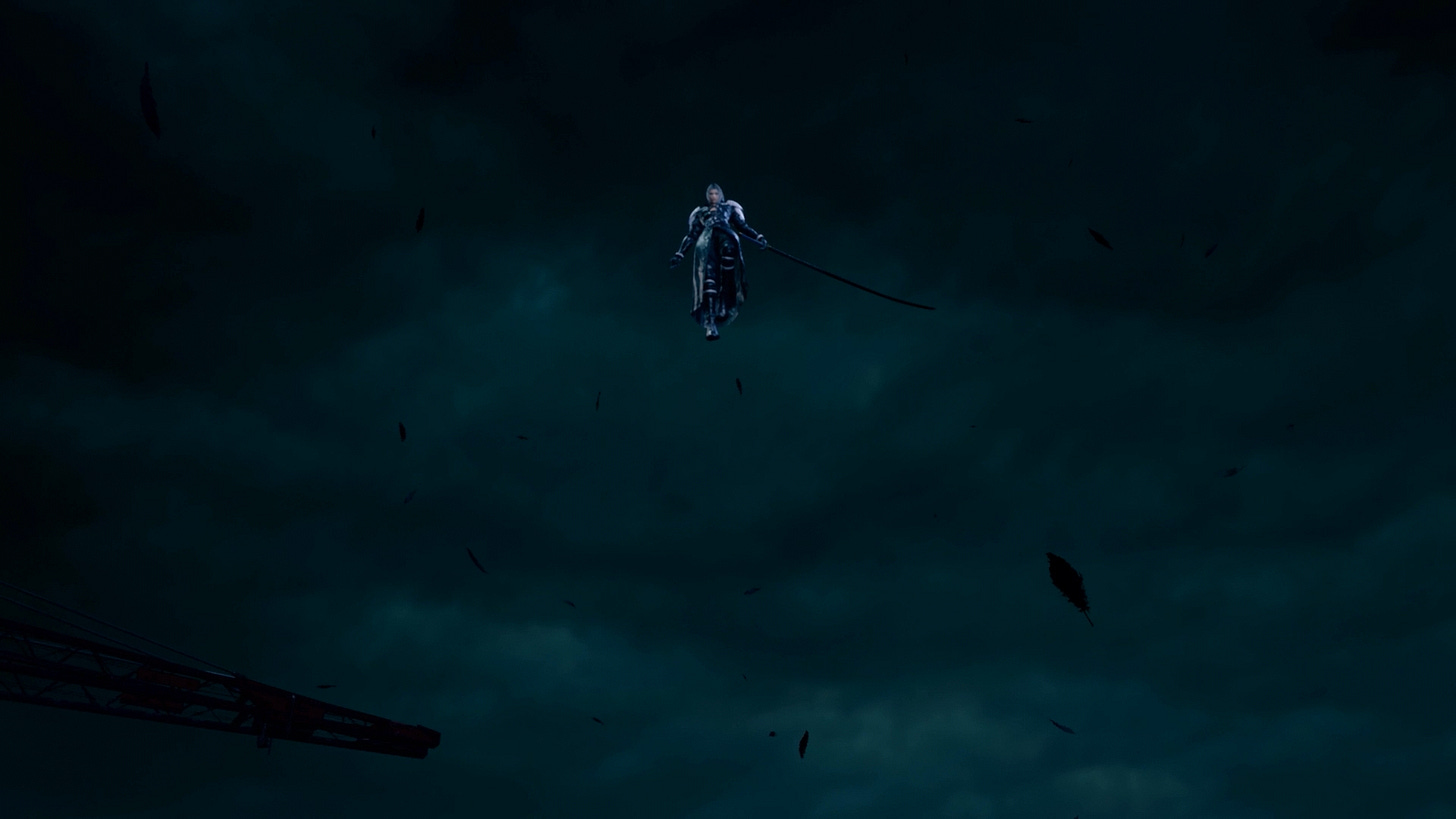
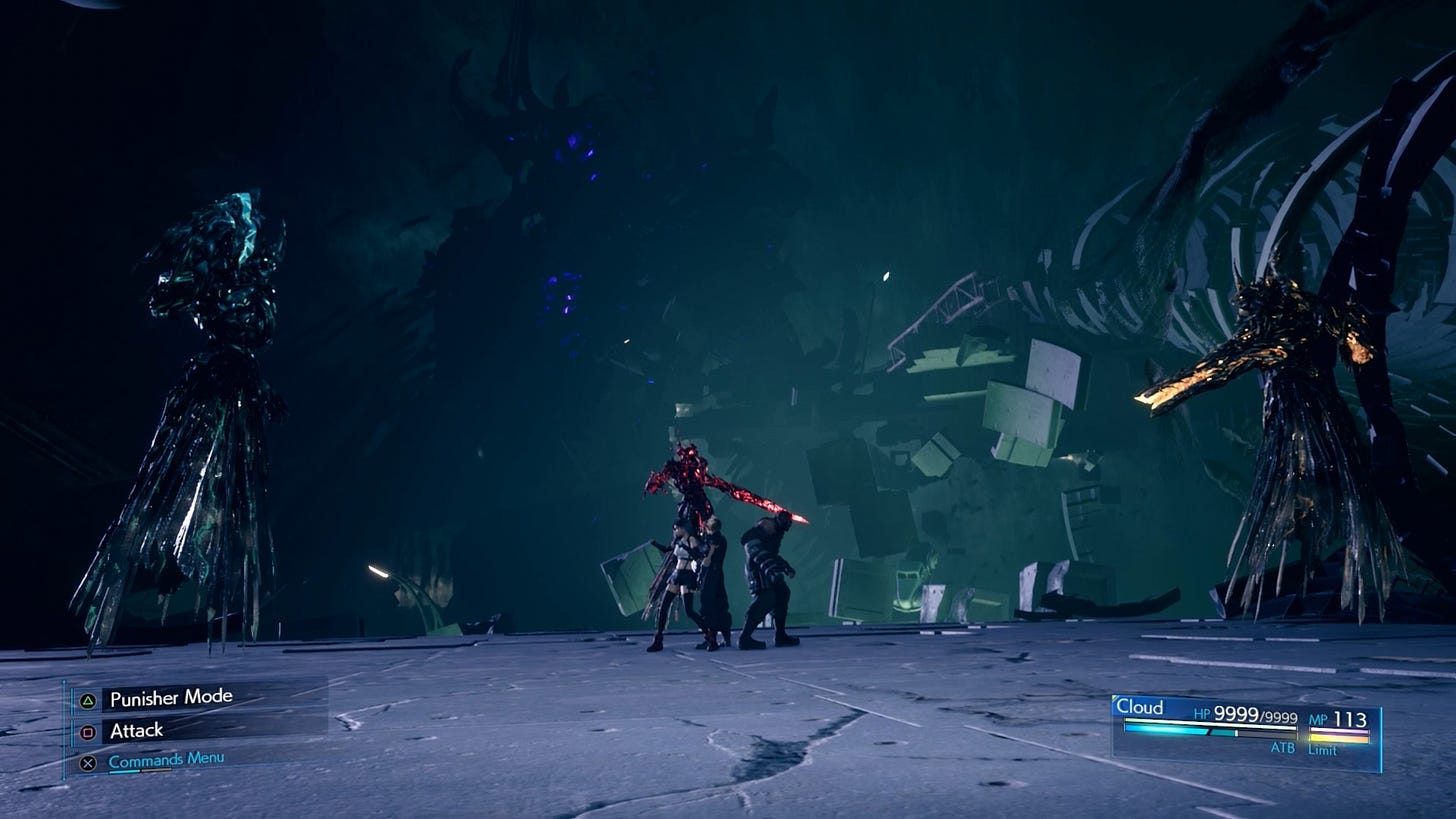
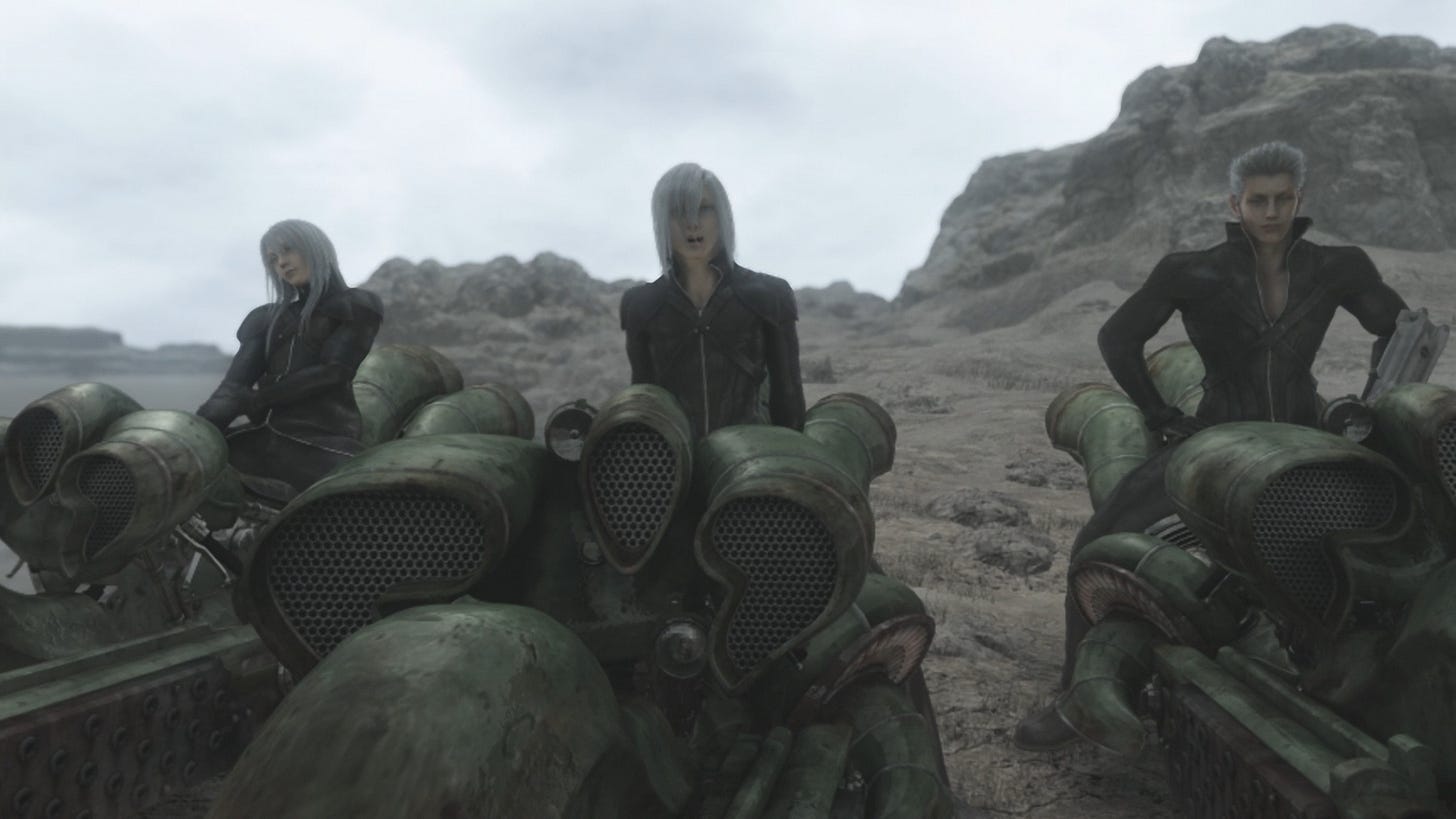
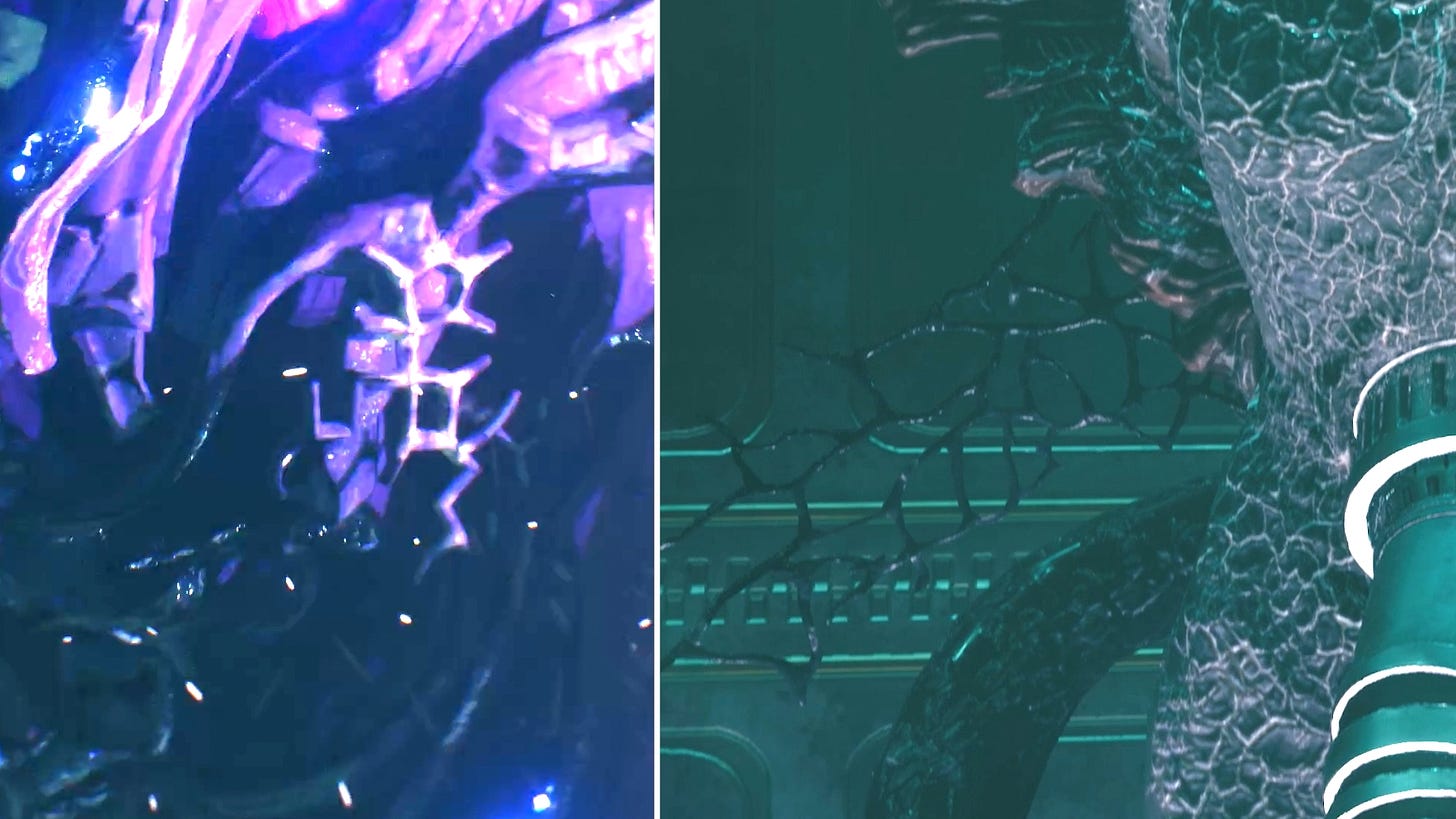
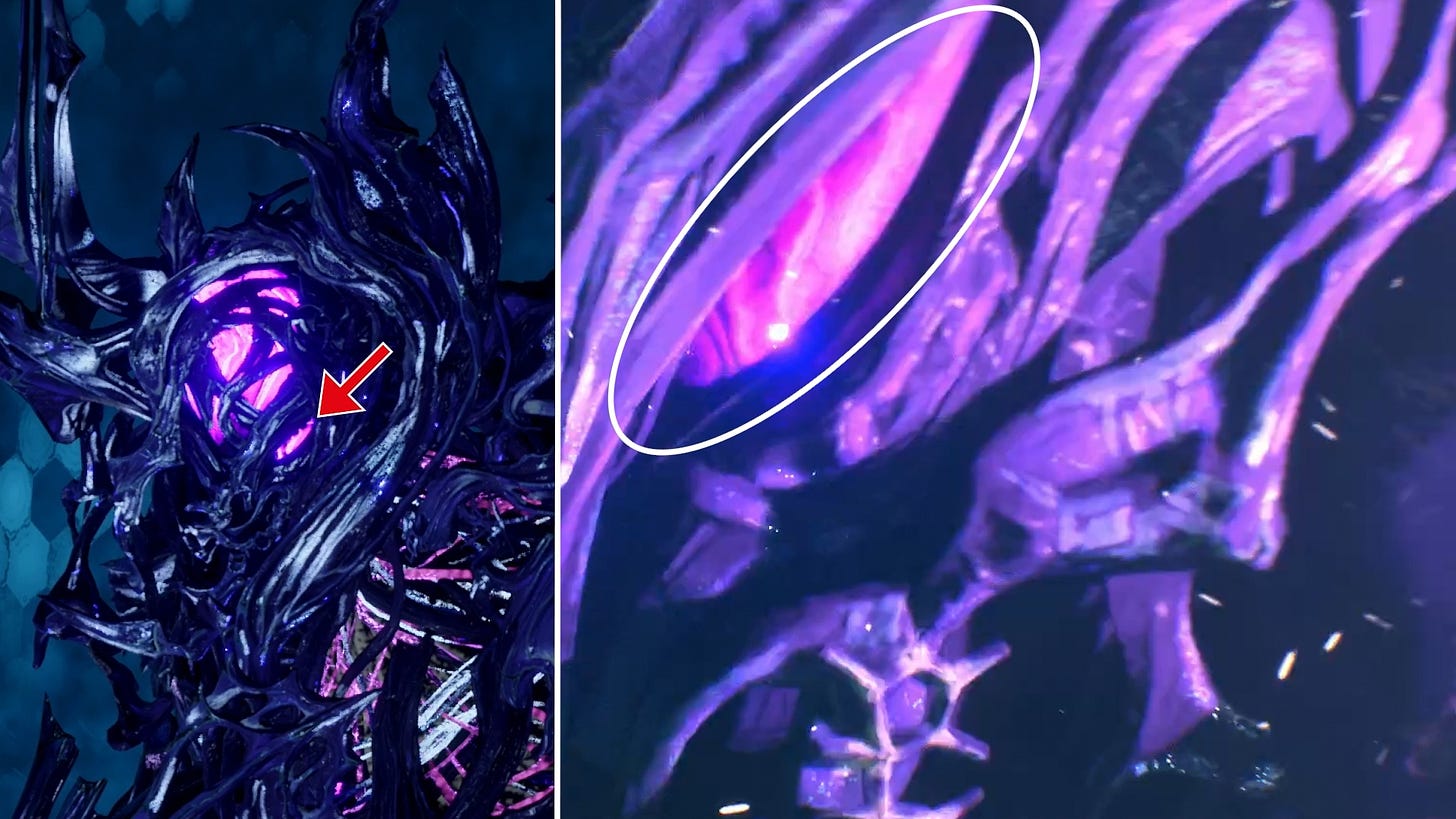
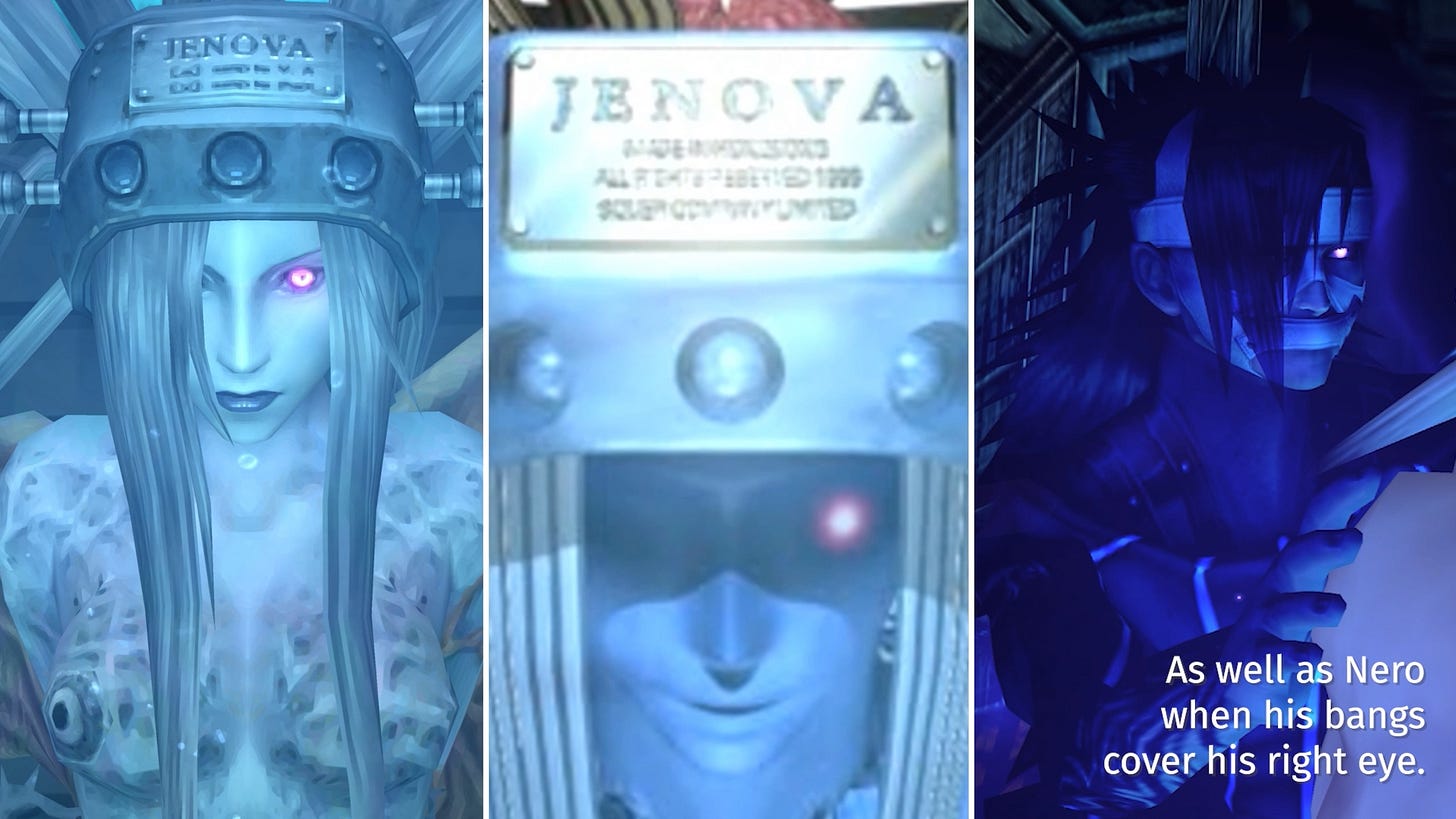
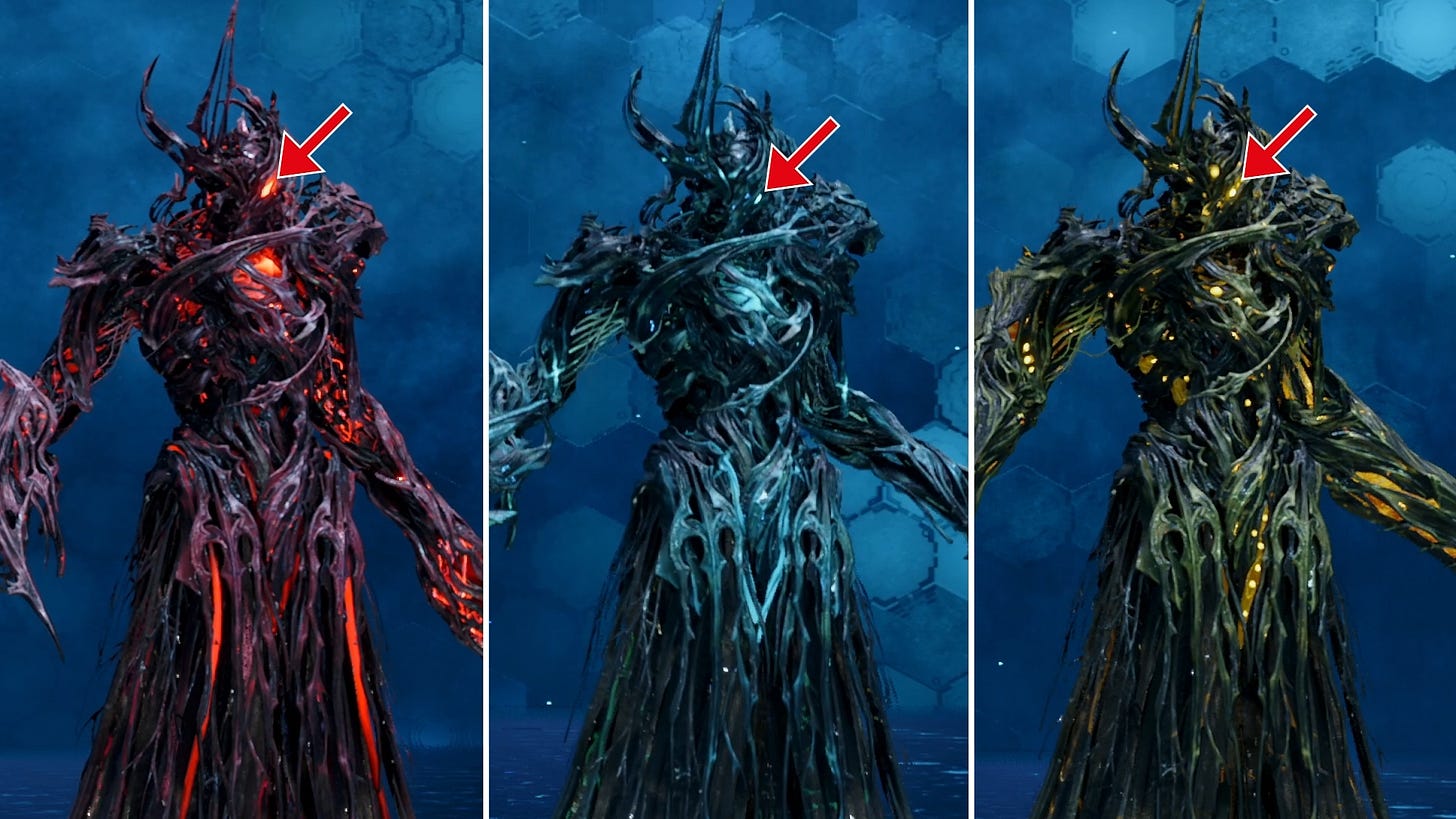
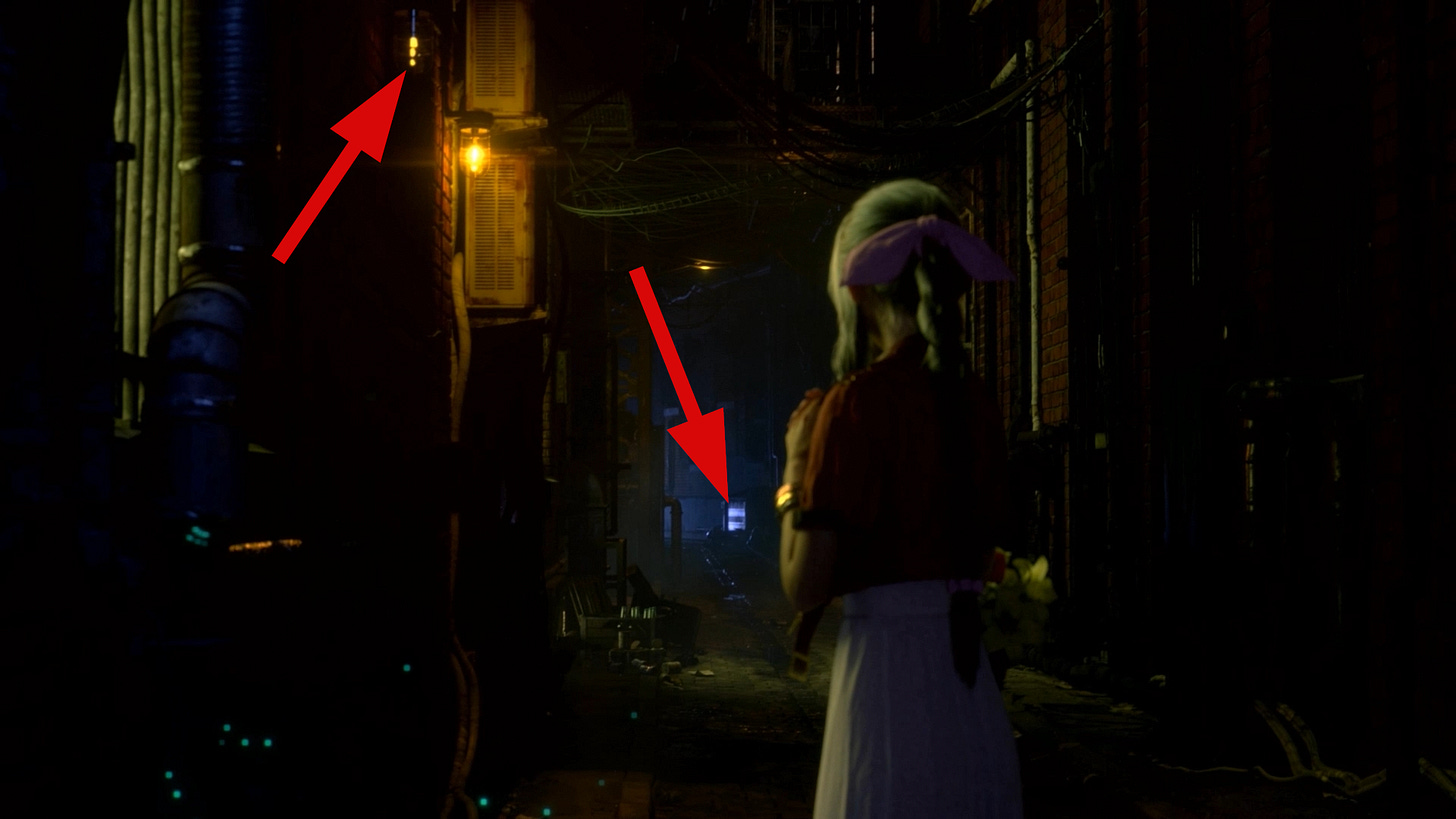
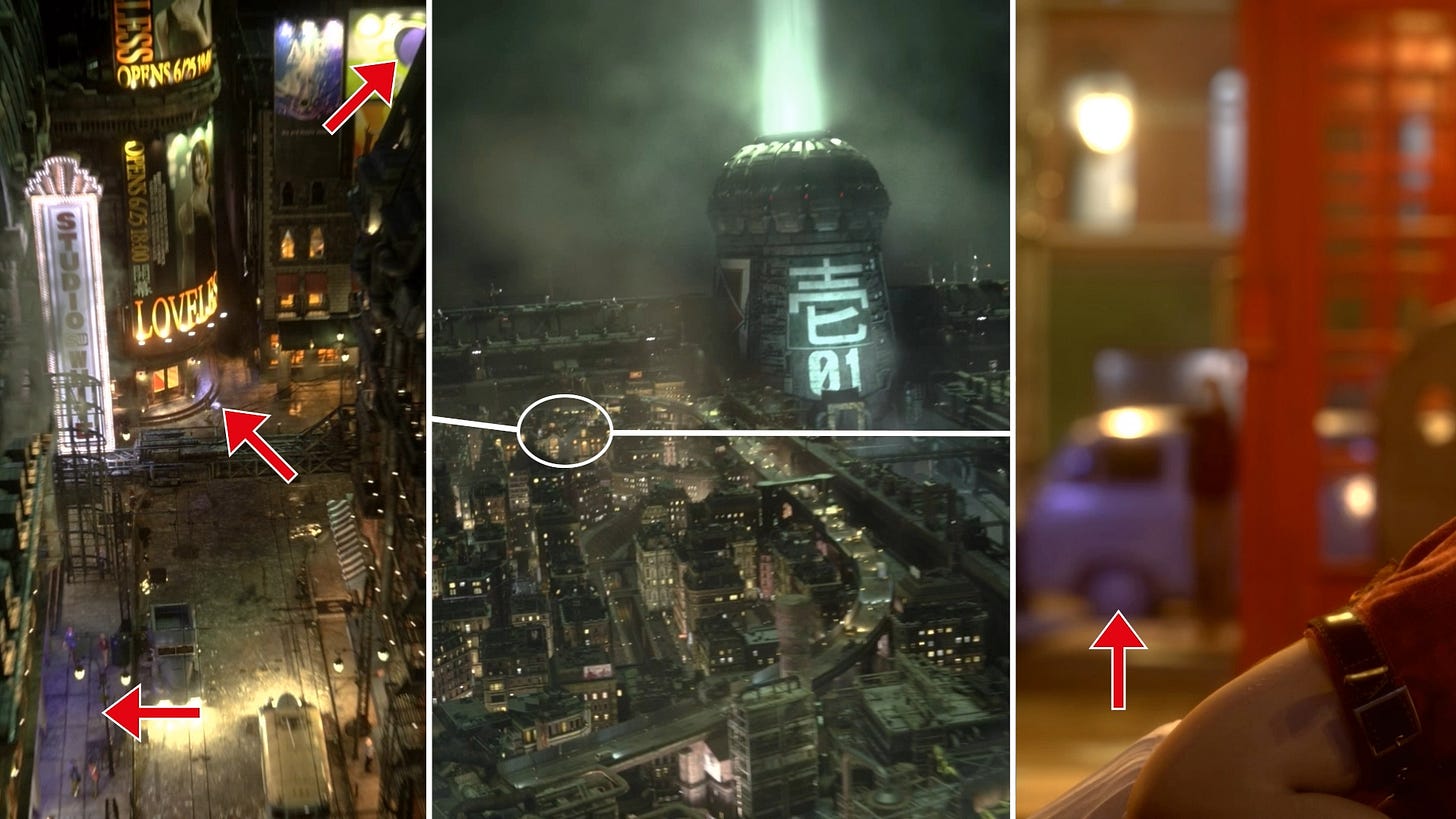
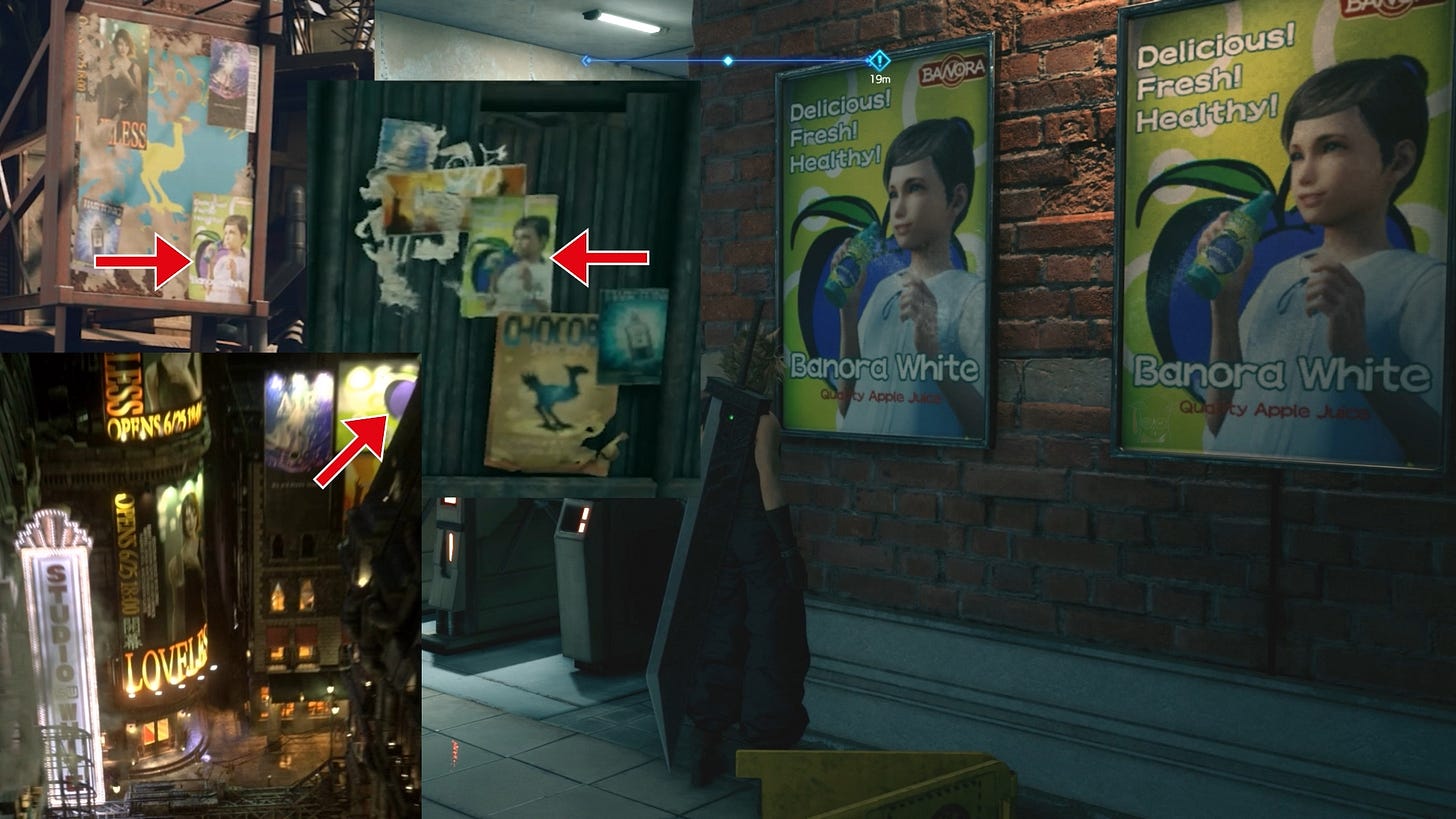
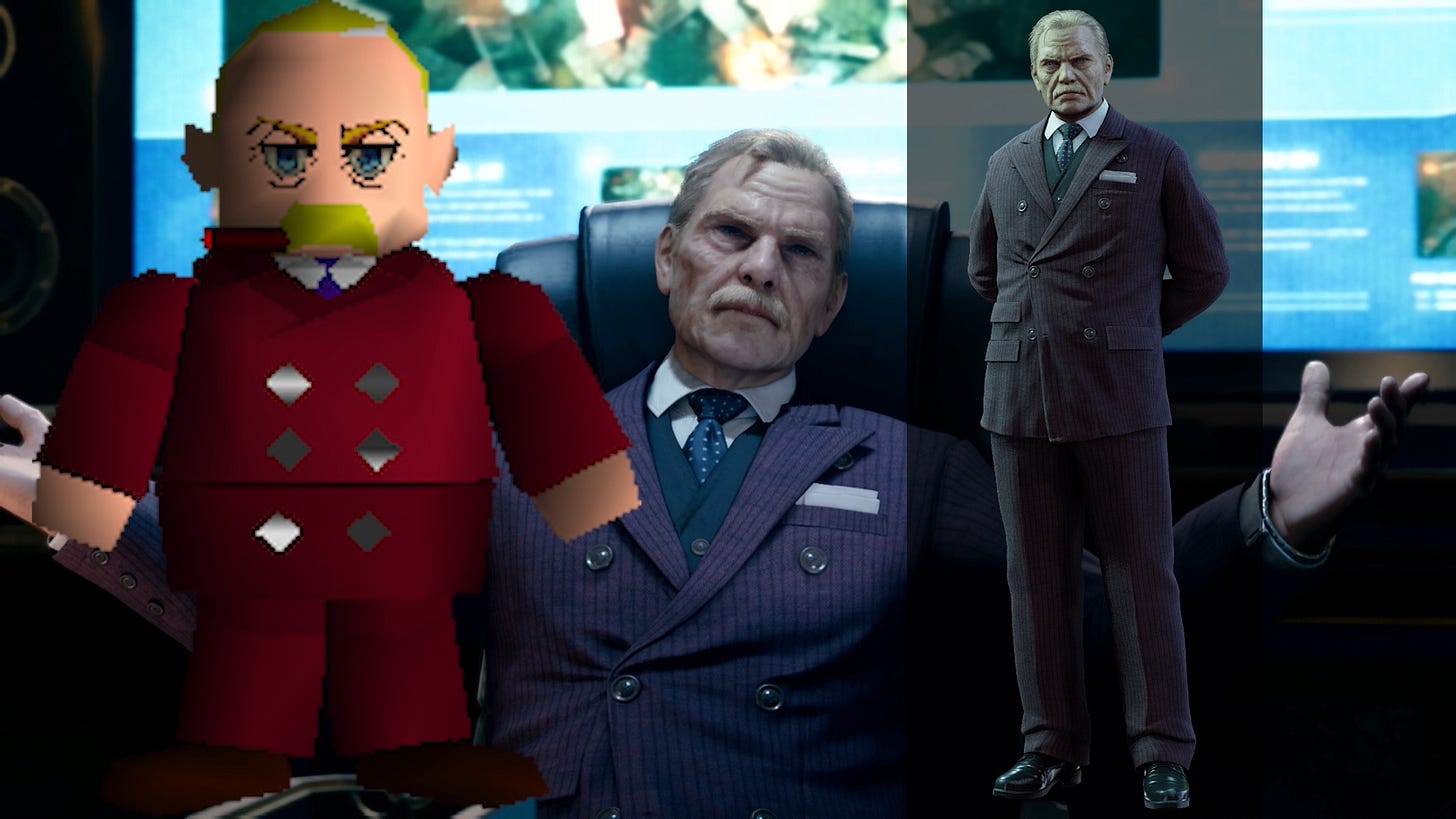
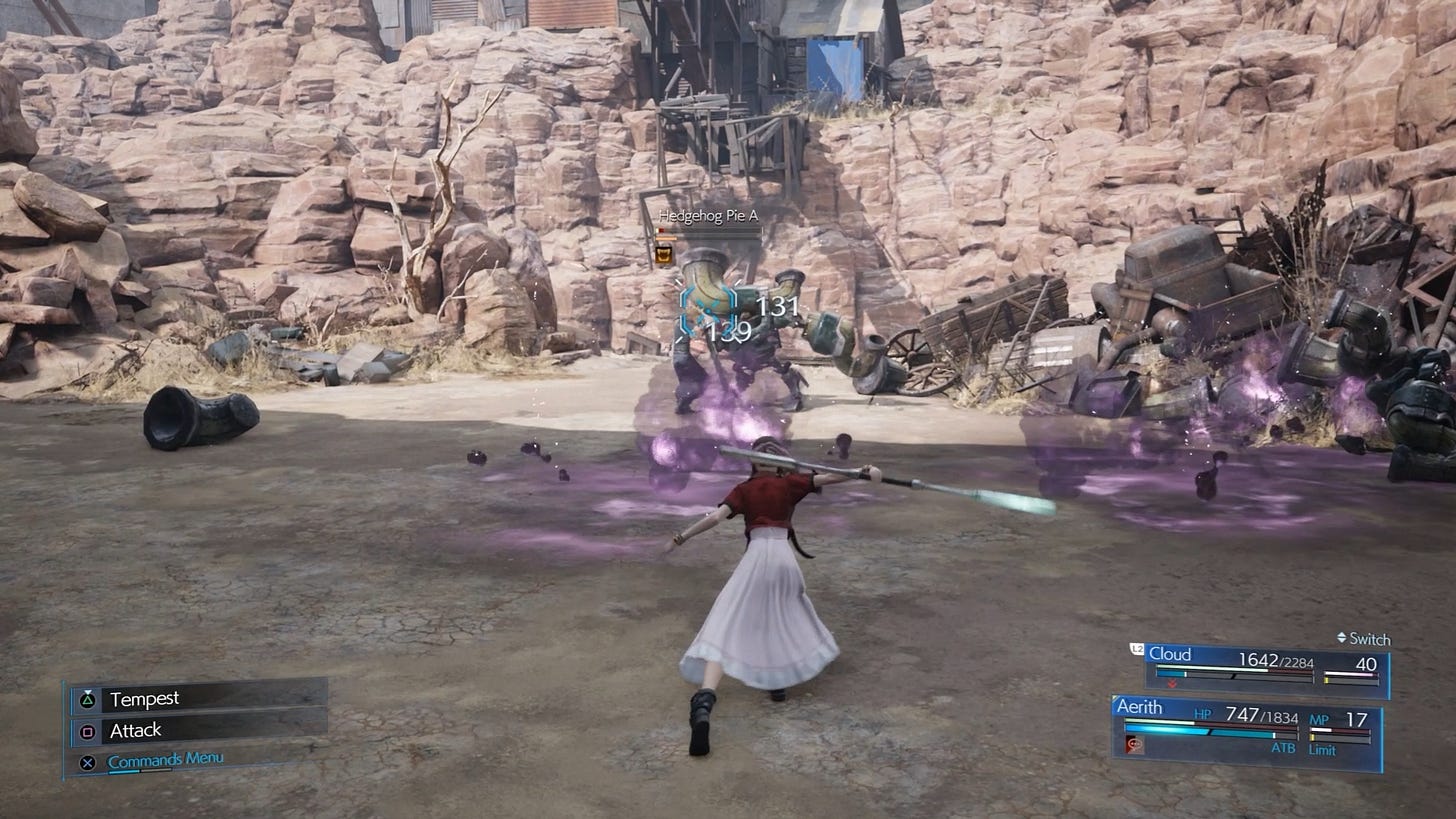
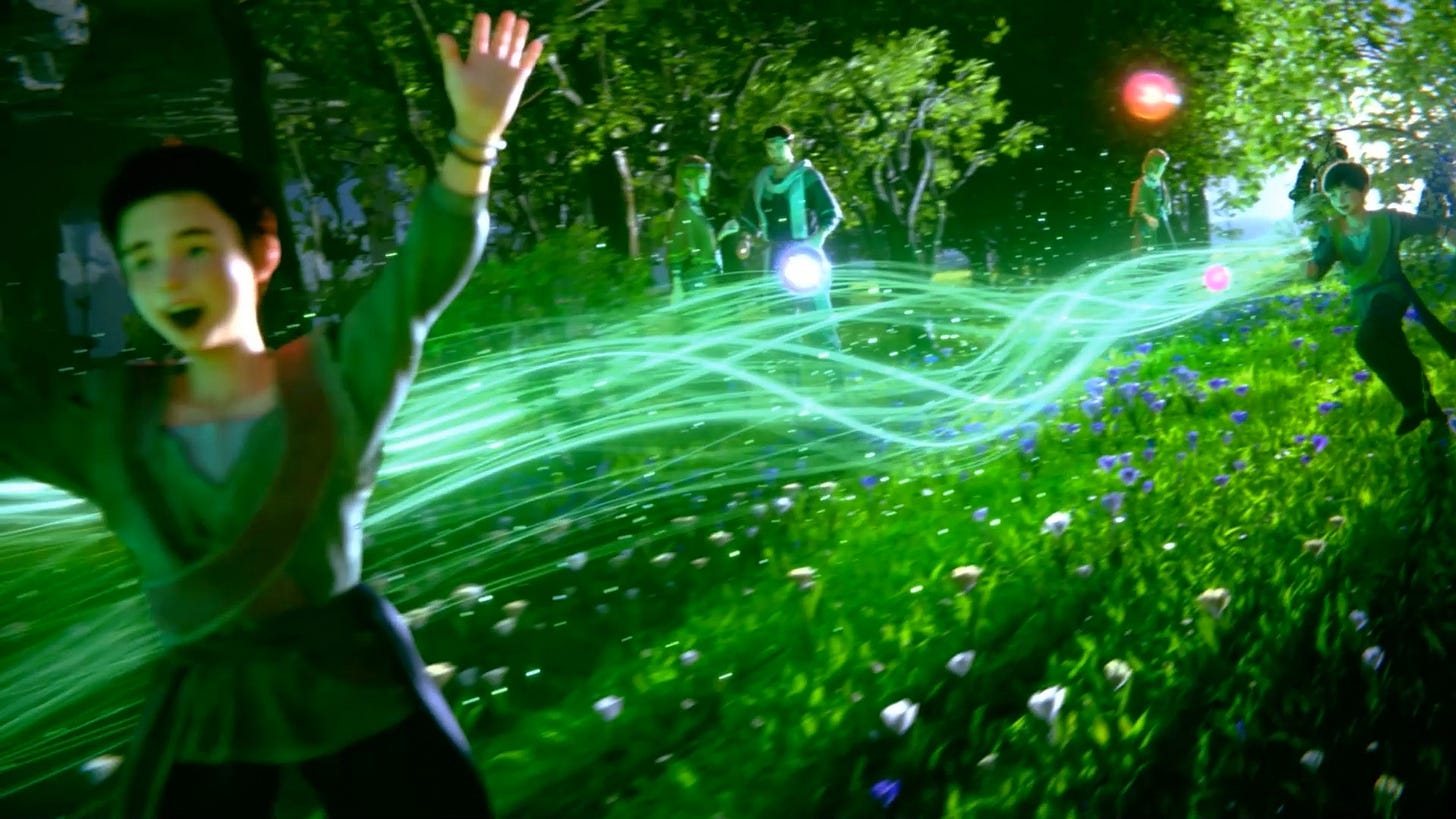
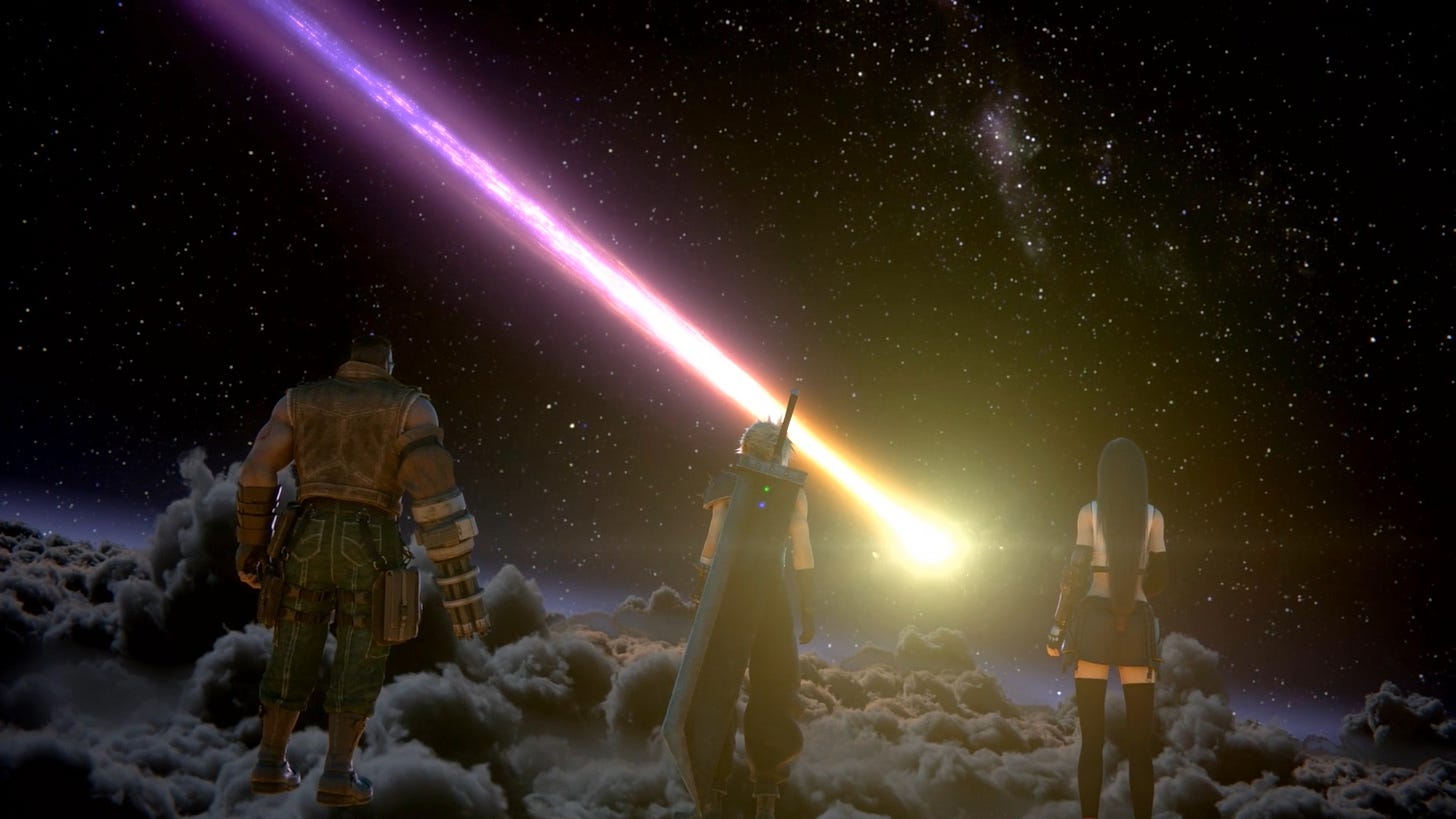
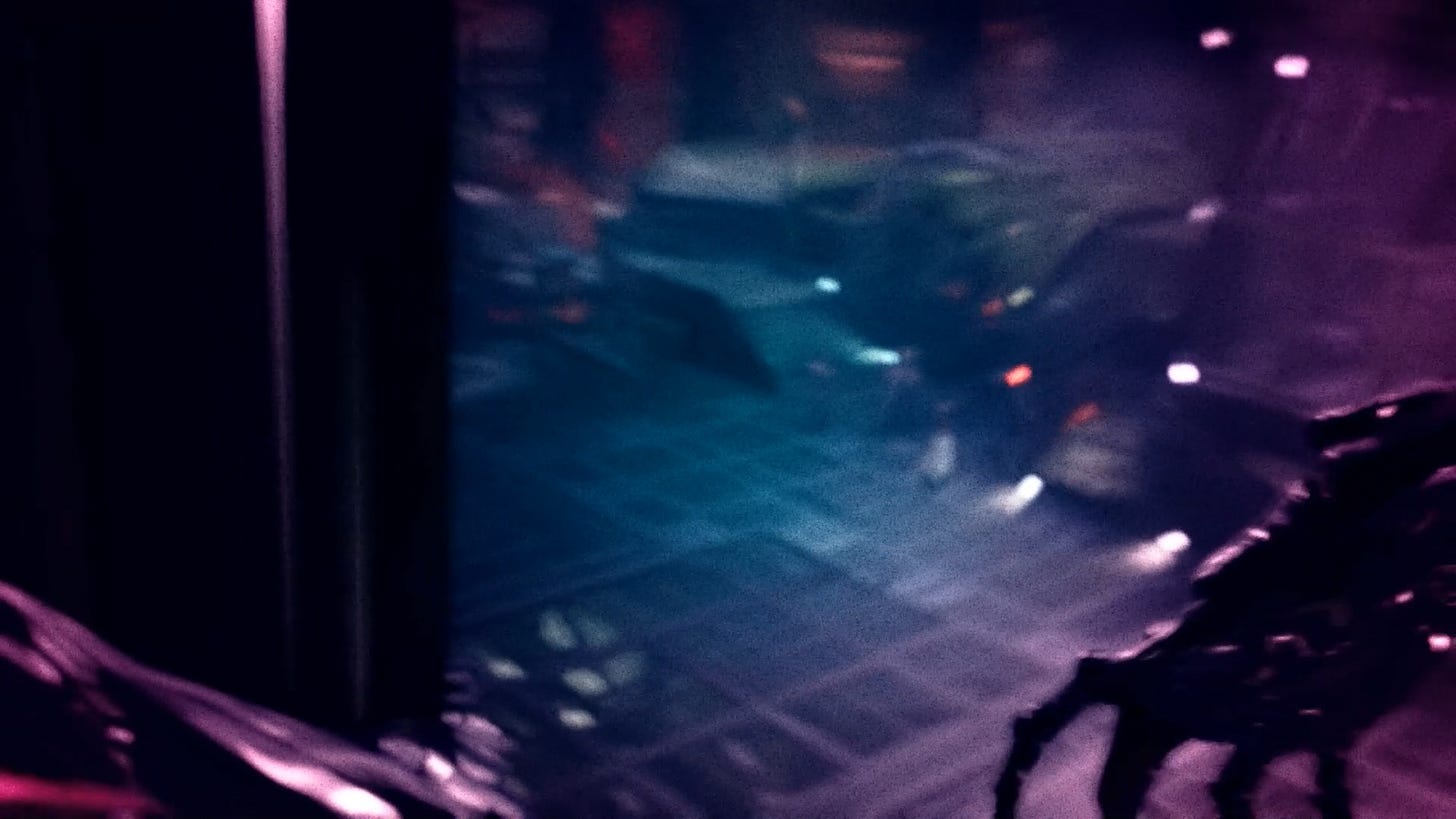
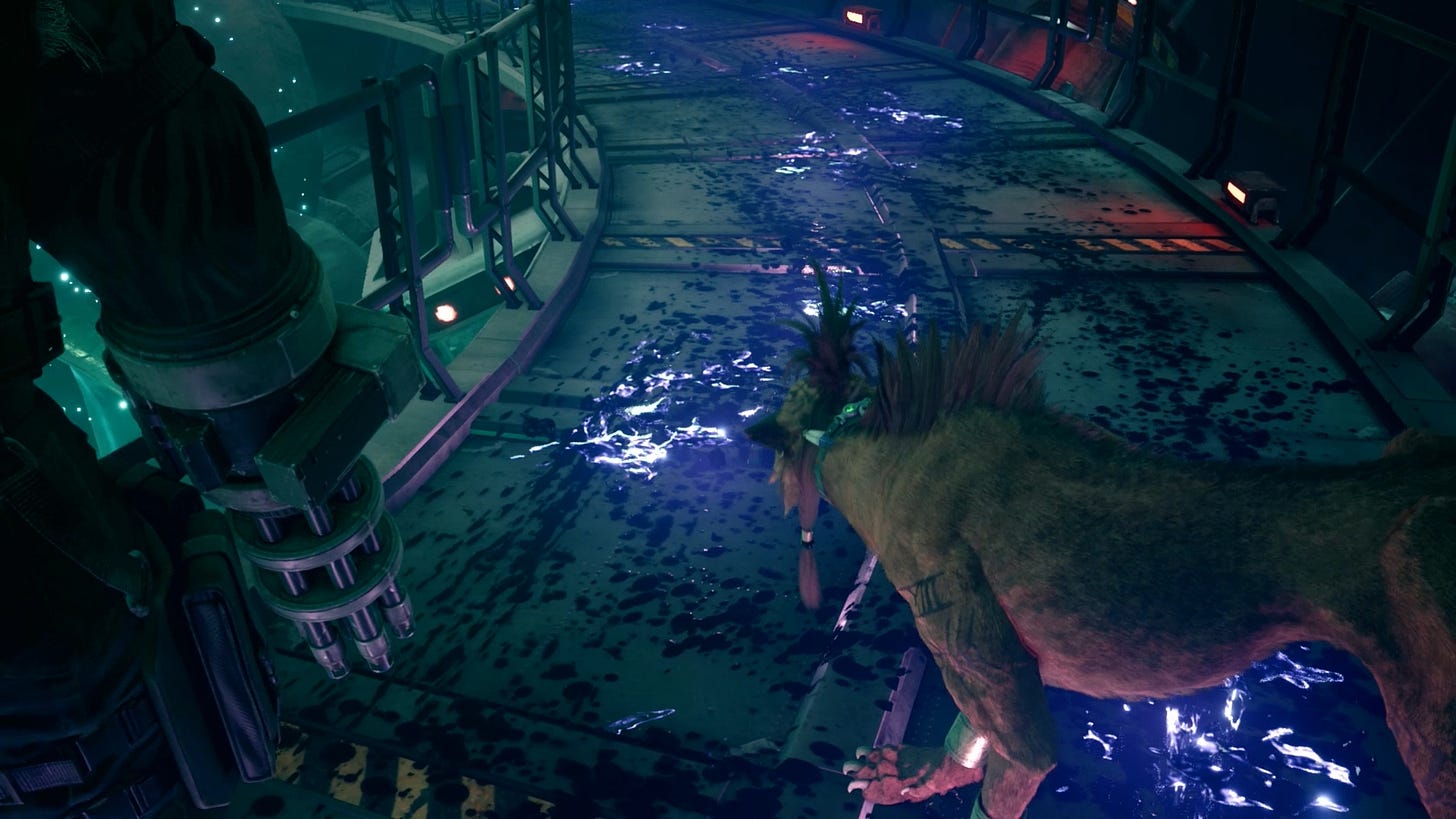
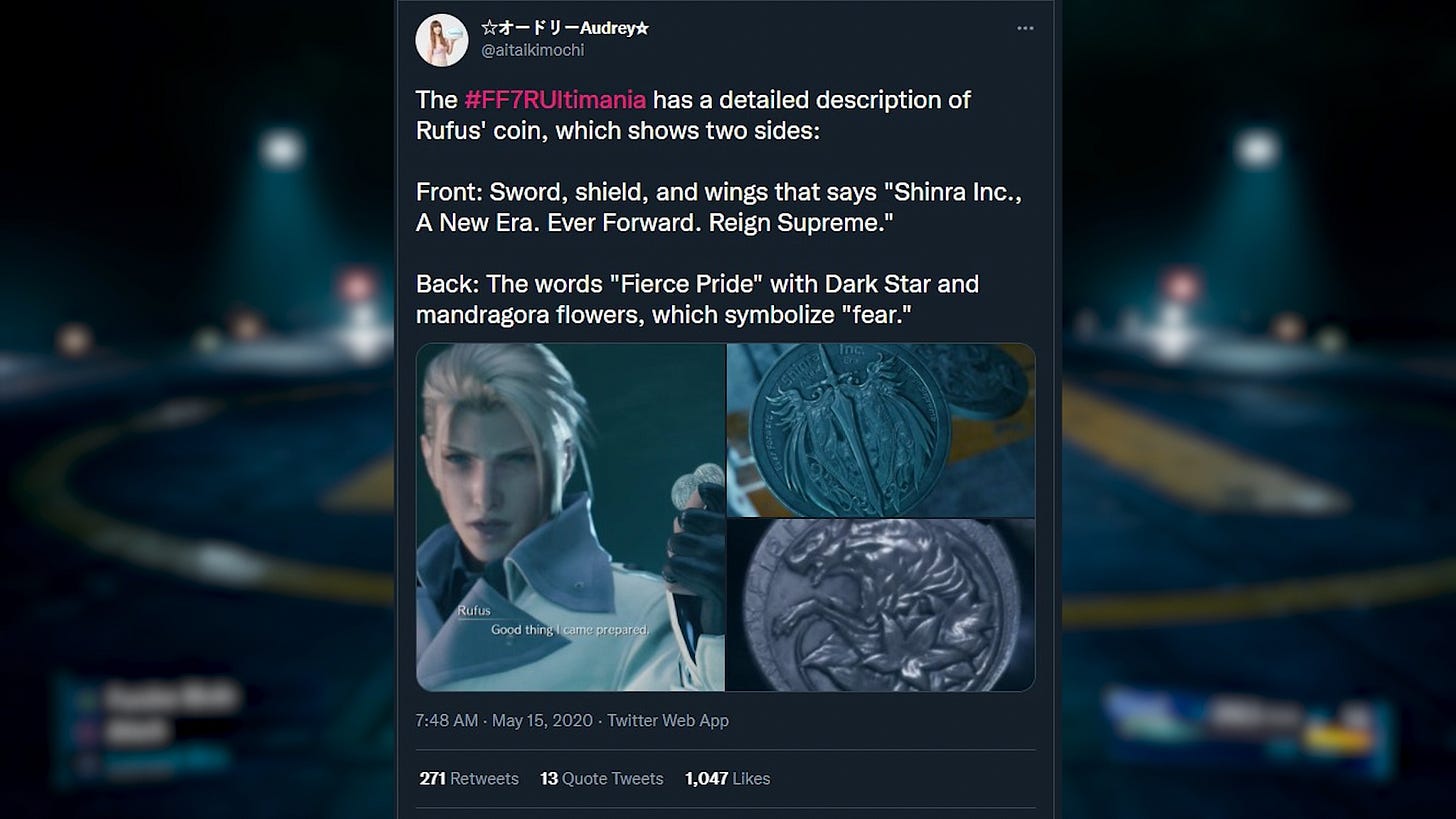
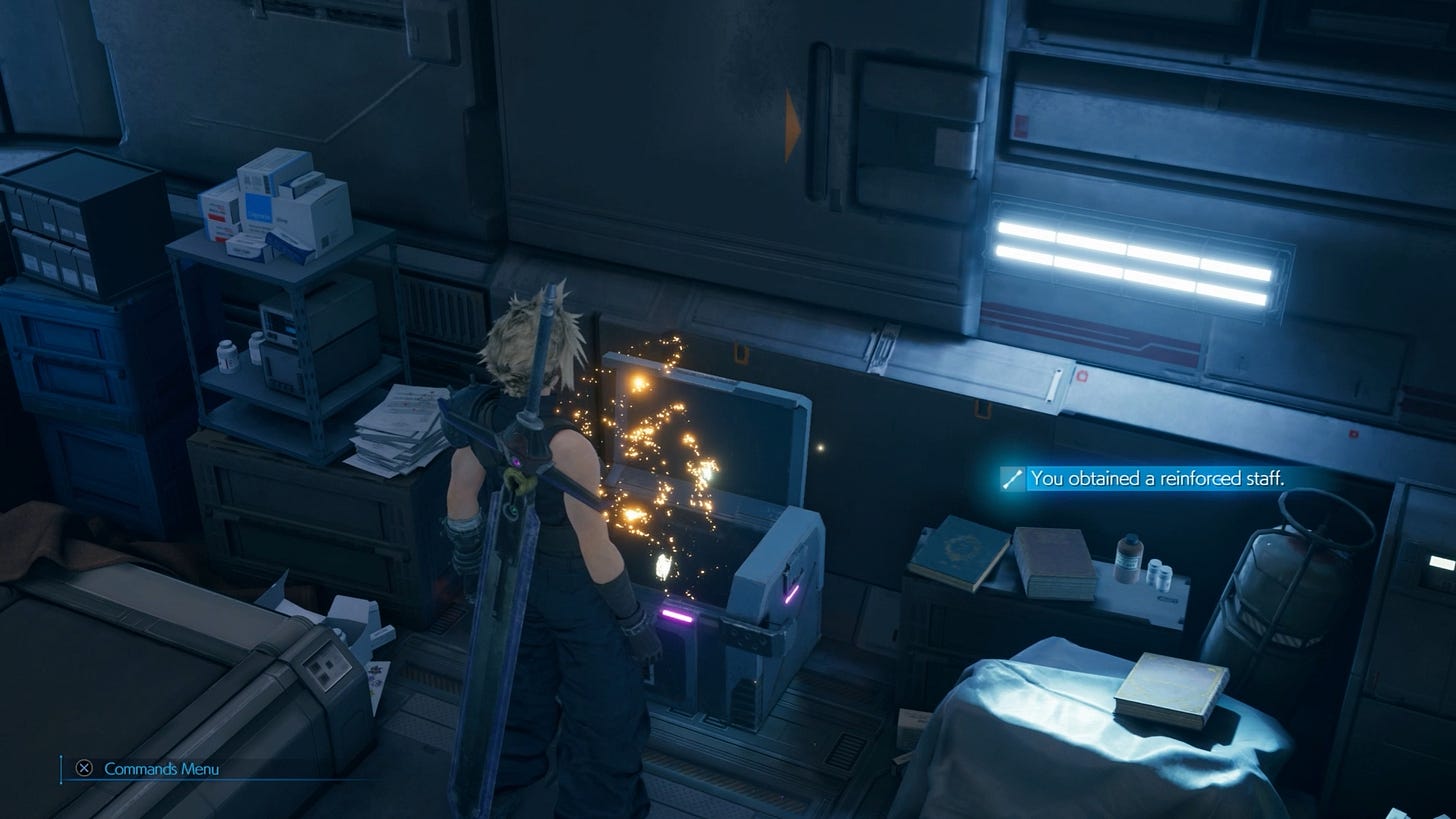
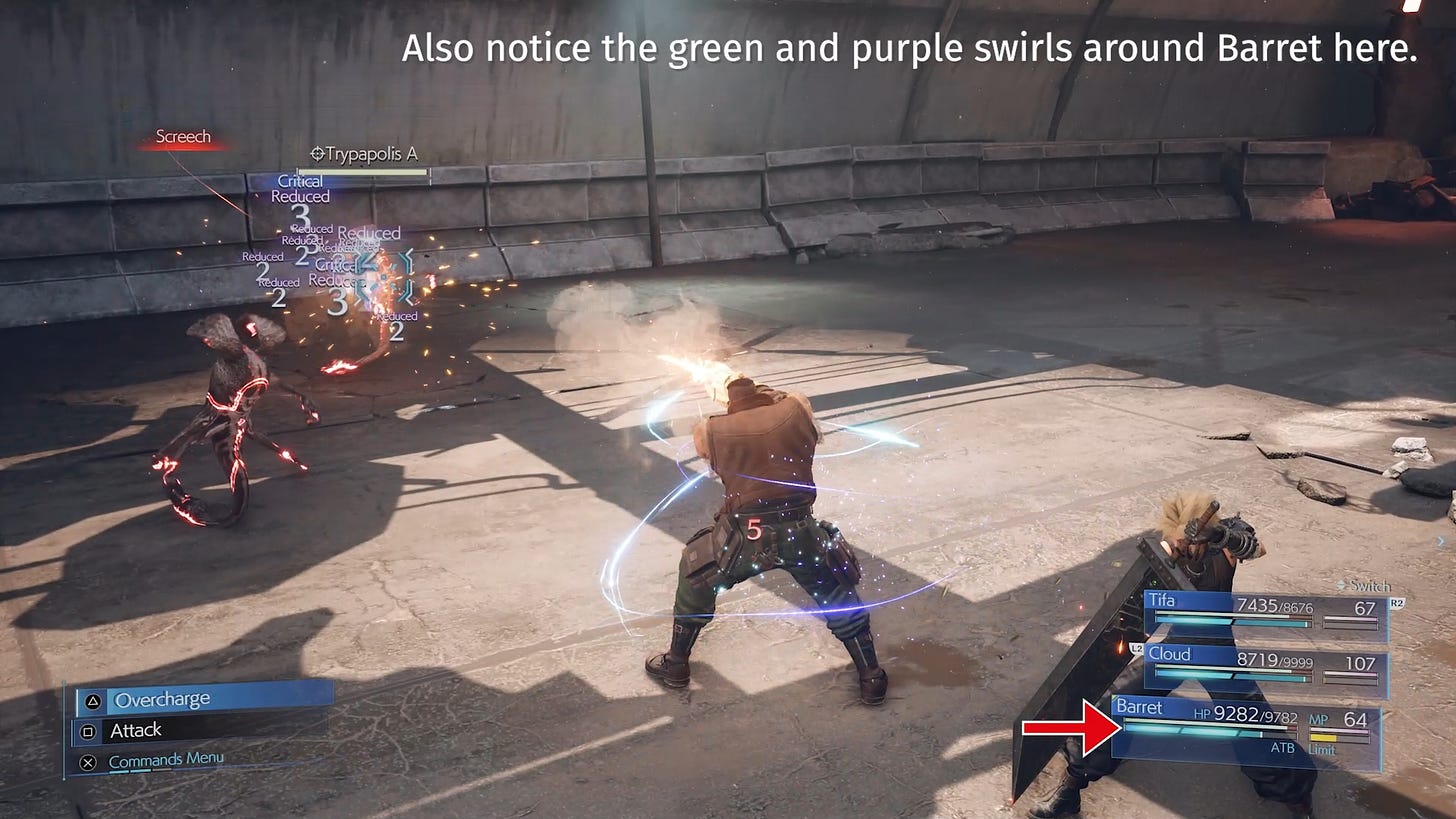
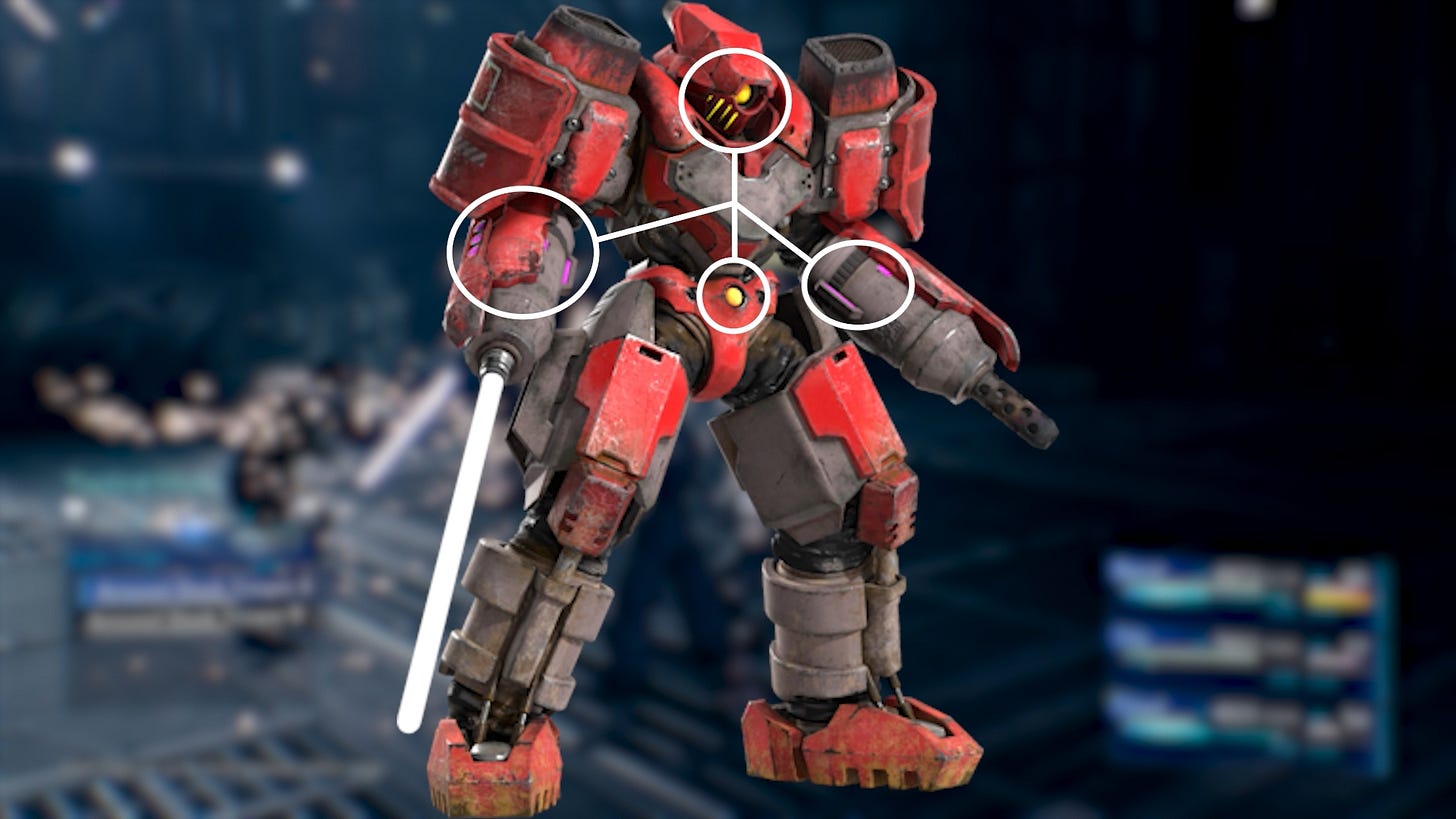
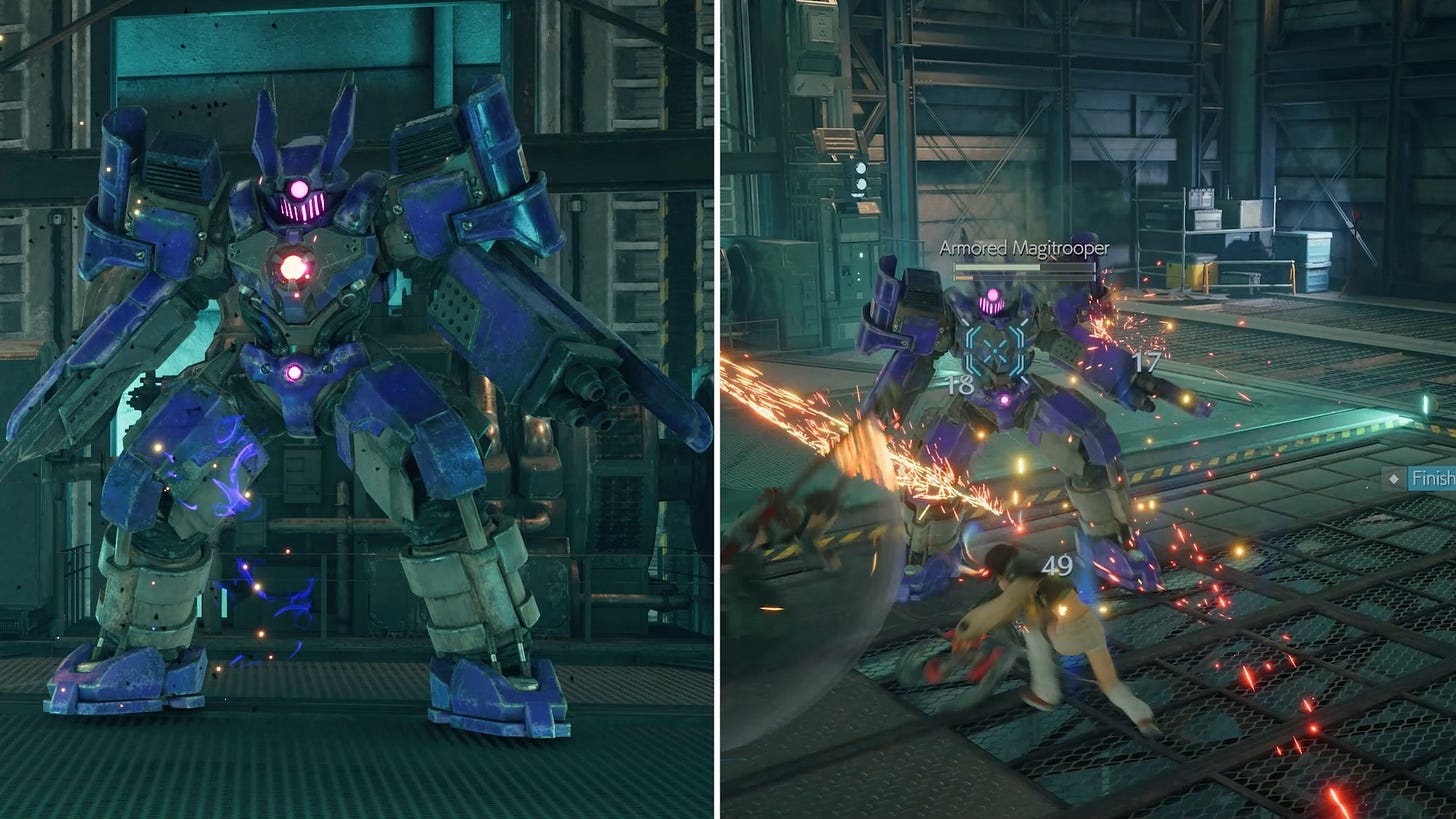
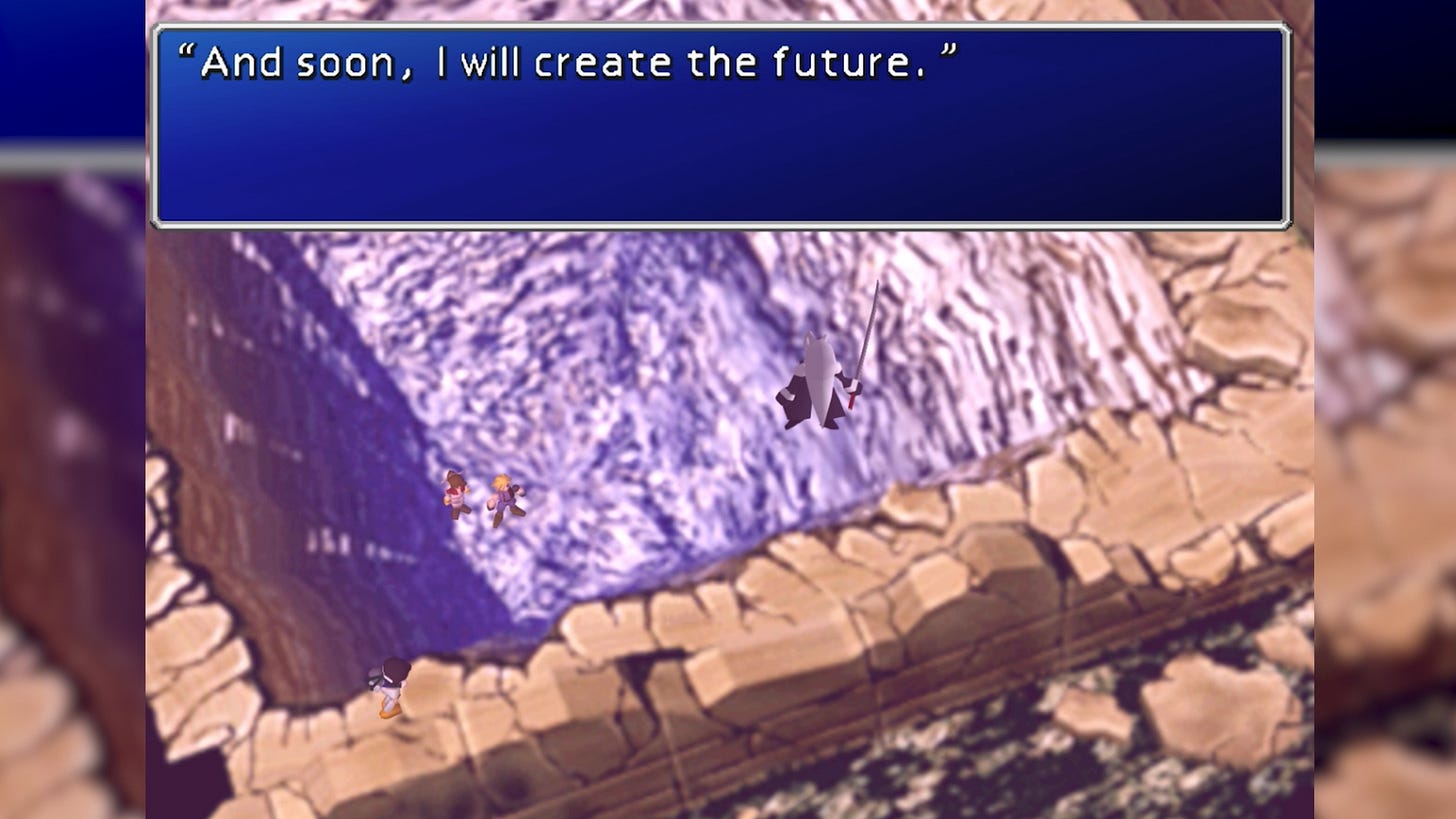
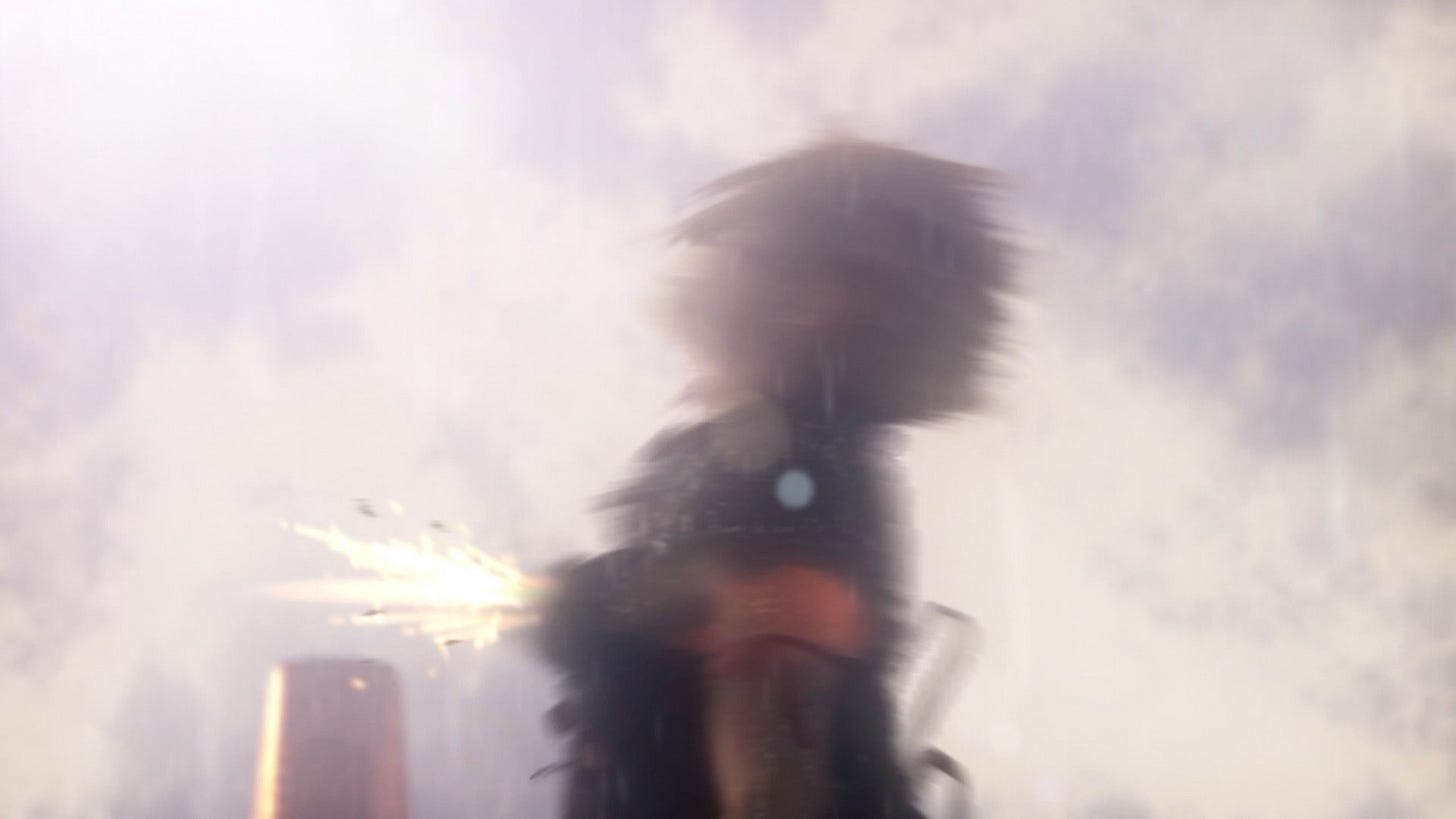
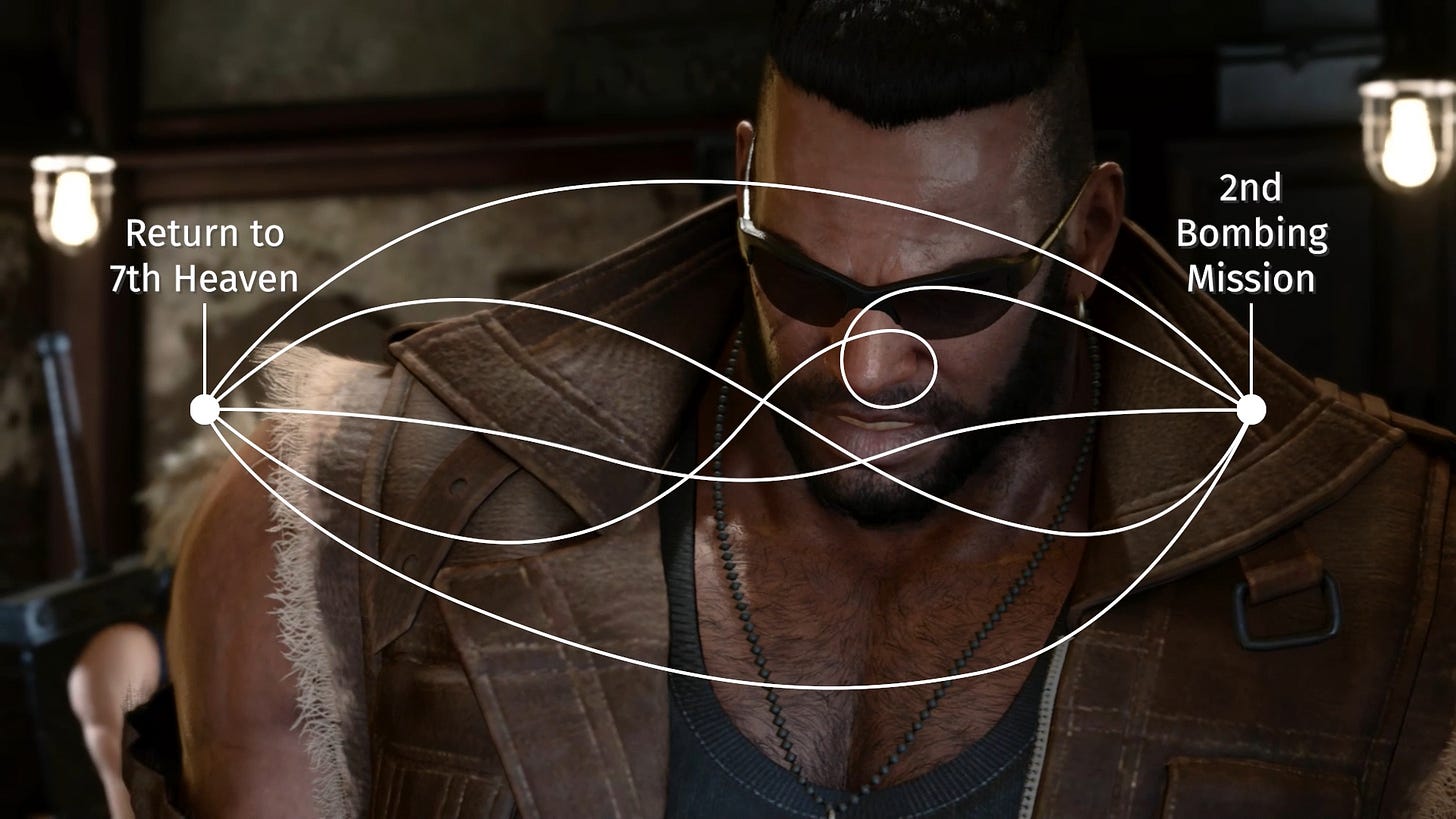
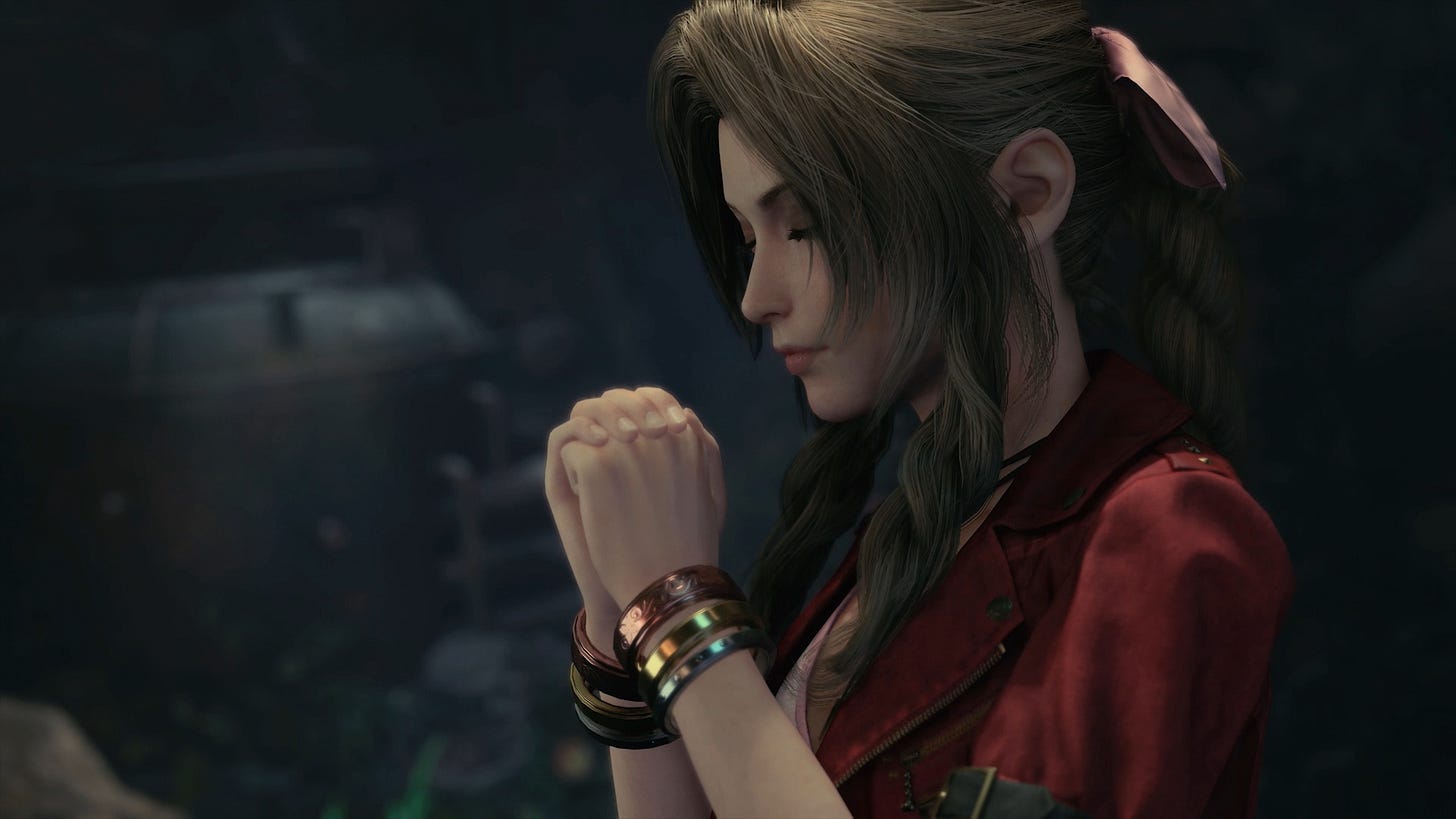
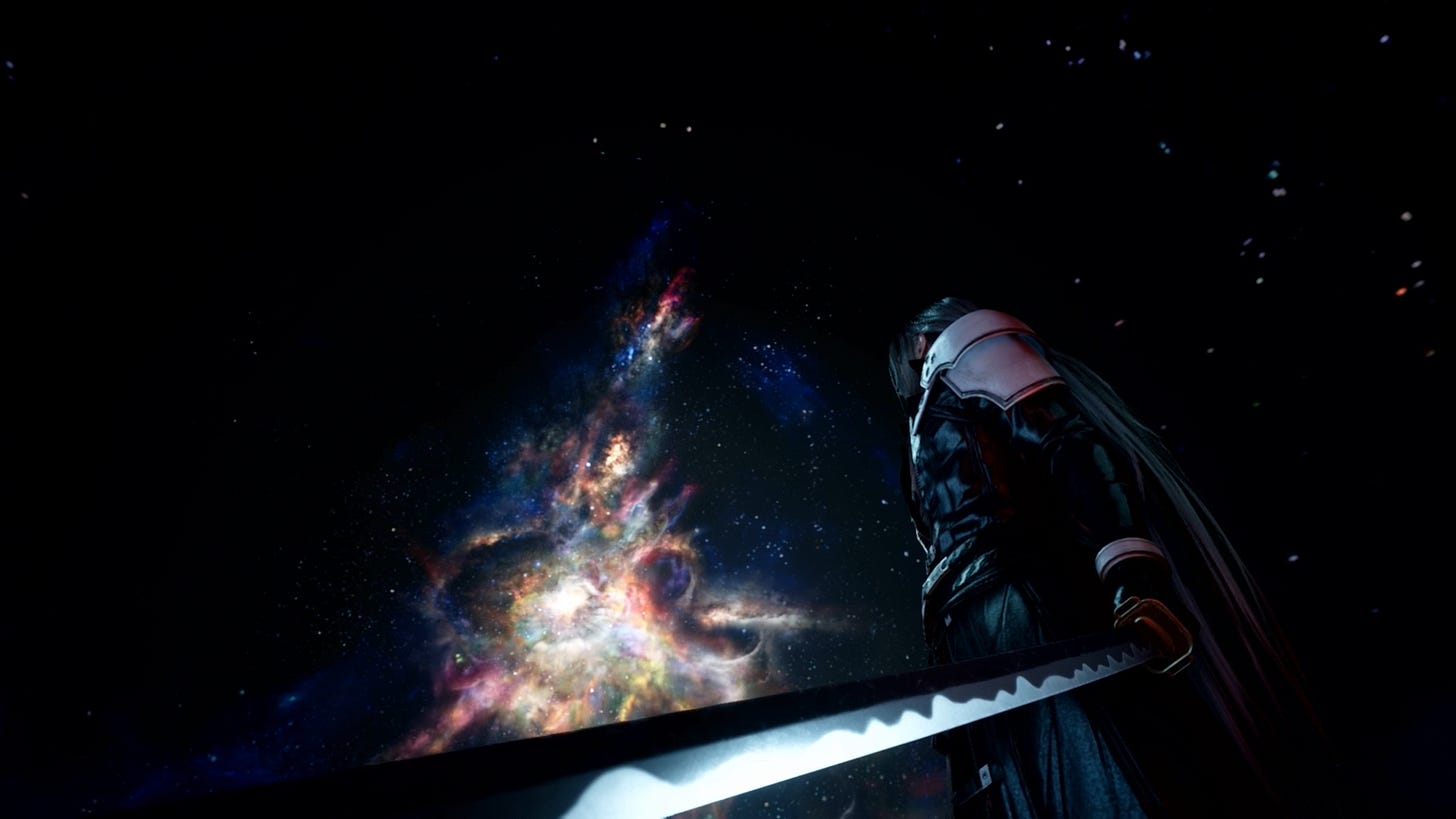
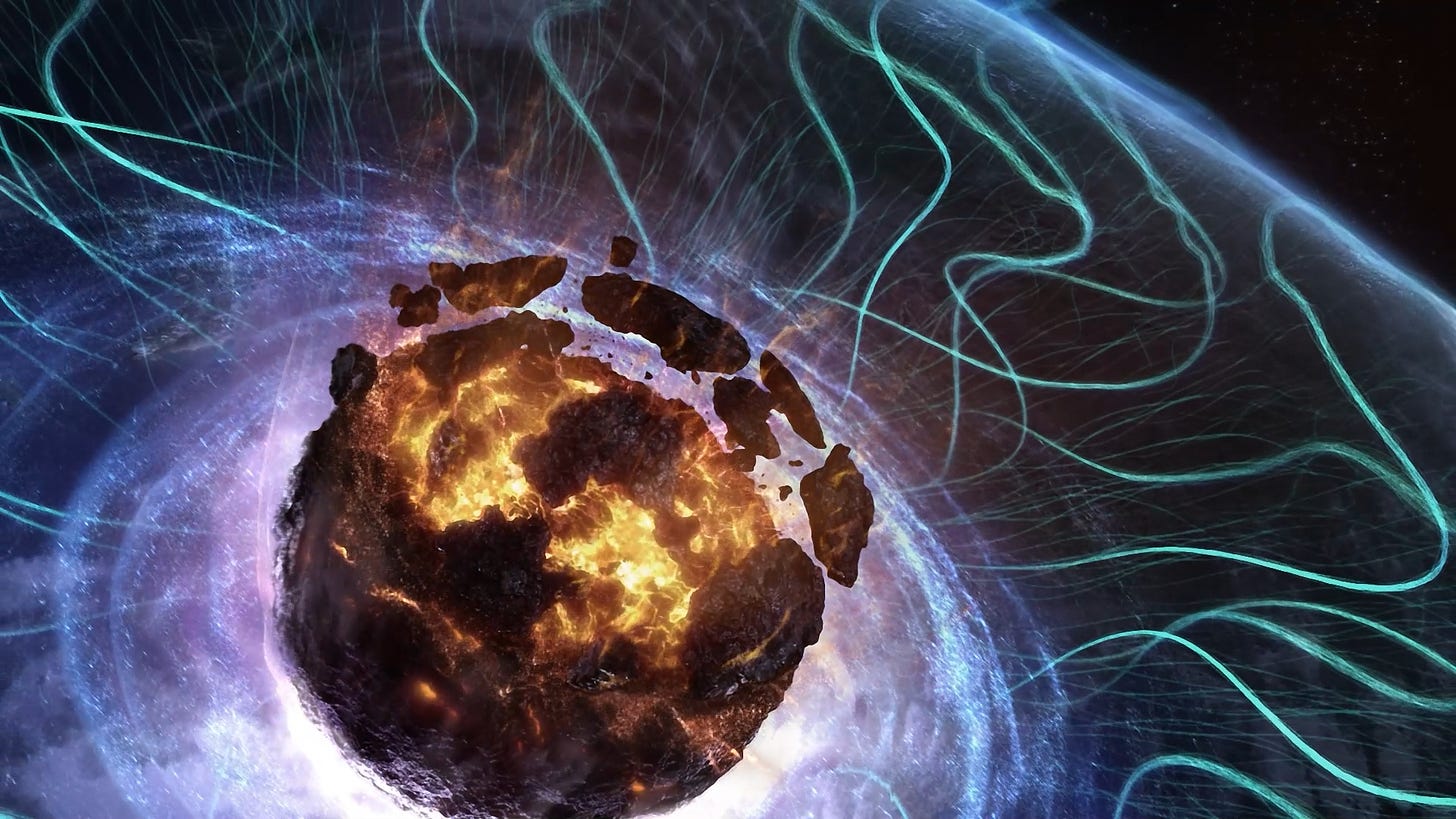
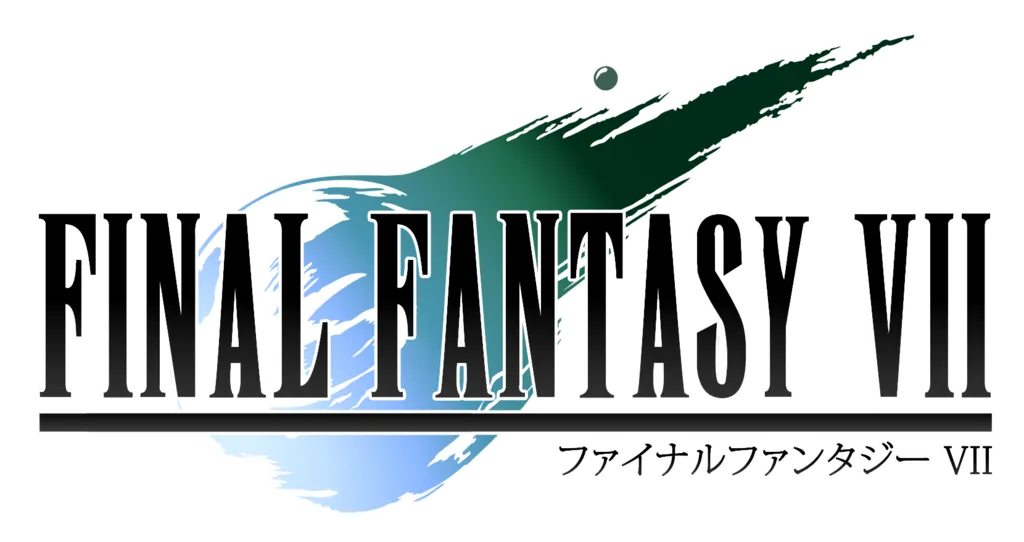
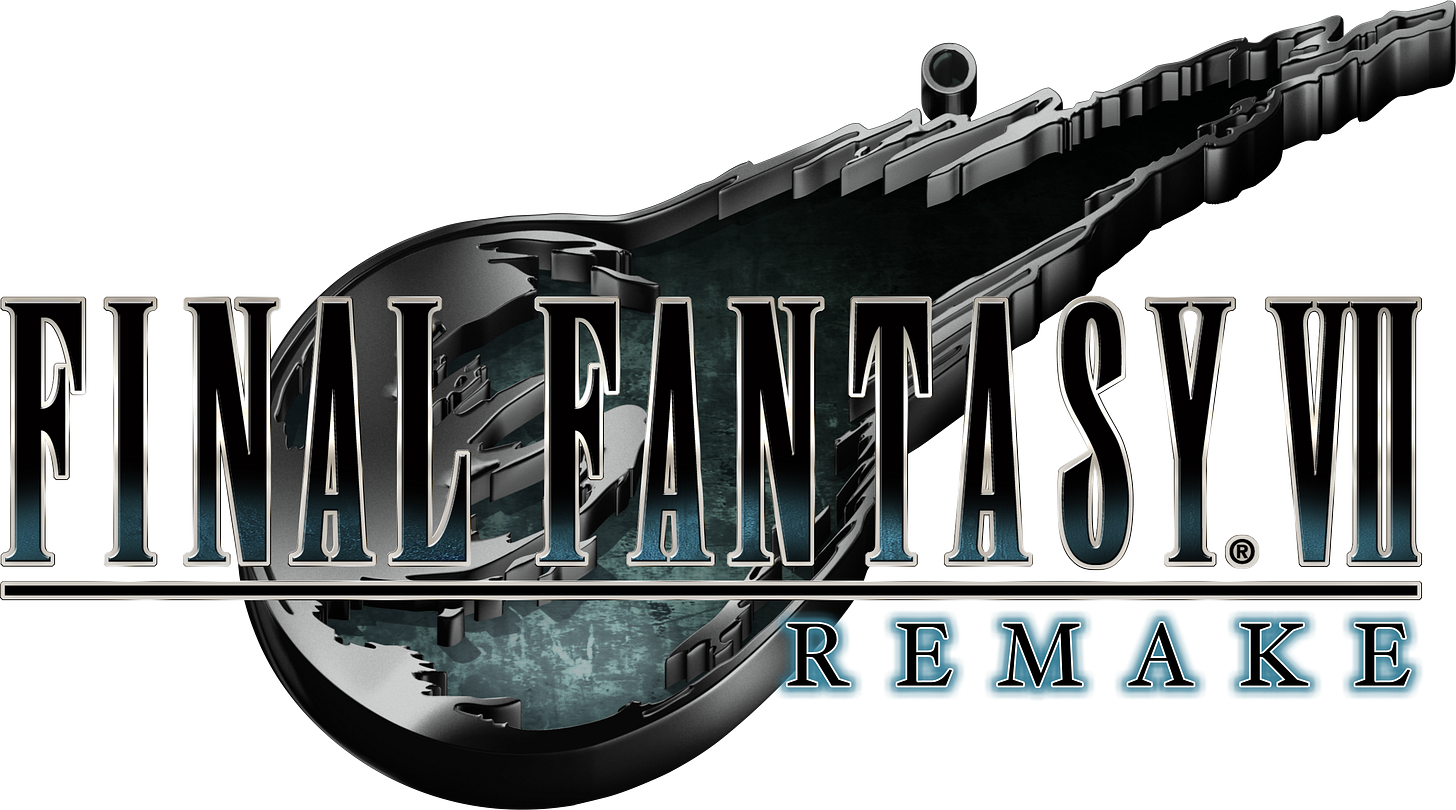
![Sephiroth's Endgame [6/6] - FFVII Remake Mysteries [3/4] | Game Analysis #26](https://substackcdn.com/image/fetch/$s_!4frE!,w_1300,h_650,c_fill,f_auto,q_auto:good,fl_progressive:steep,g_auto/https%3A%2F%2Fsubstack-post-media.s3.amazonaws.com%2Fpublic%2Fimages%2Fffce3bc7-81ee-46ee-9170-bf3c010eeea9_3840x2160.png)